Archives: Feature Articles
Allows the user to create Feature Articles
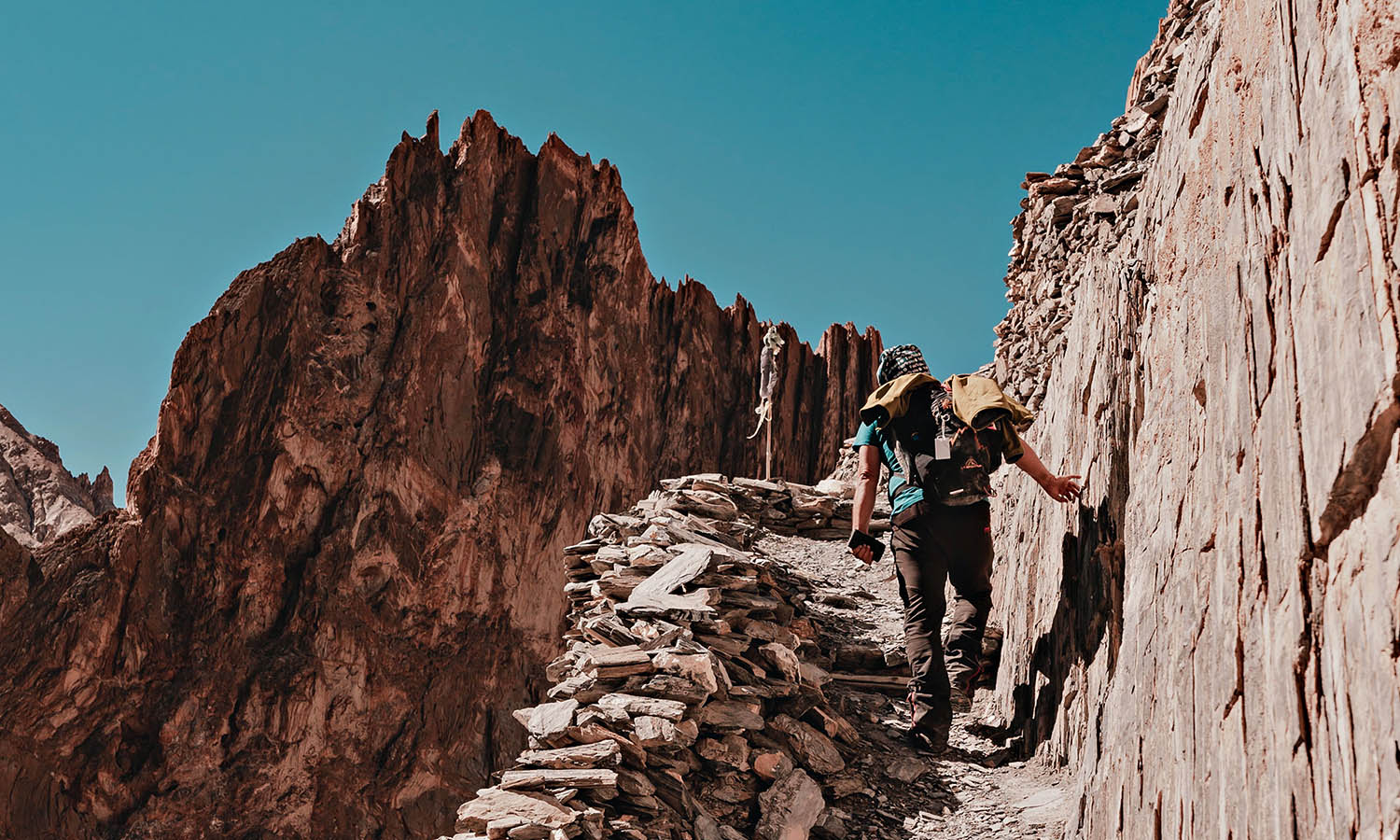

…of the Buddhist monastery as wisps of smoke drift up and dissipate in front of faded frescoes.
A monk sits in front of me, chanting to the beat of a drum and the ring of a prayer bell, eyes rolling back in his head. He’s praying for good fortune and health on our upcoming expedition—tomorrow we’re venturing on foot into the heart of Ladakh, gateway to the Tibetan Plateau.
Click play to watch
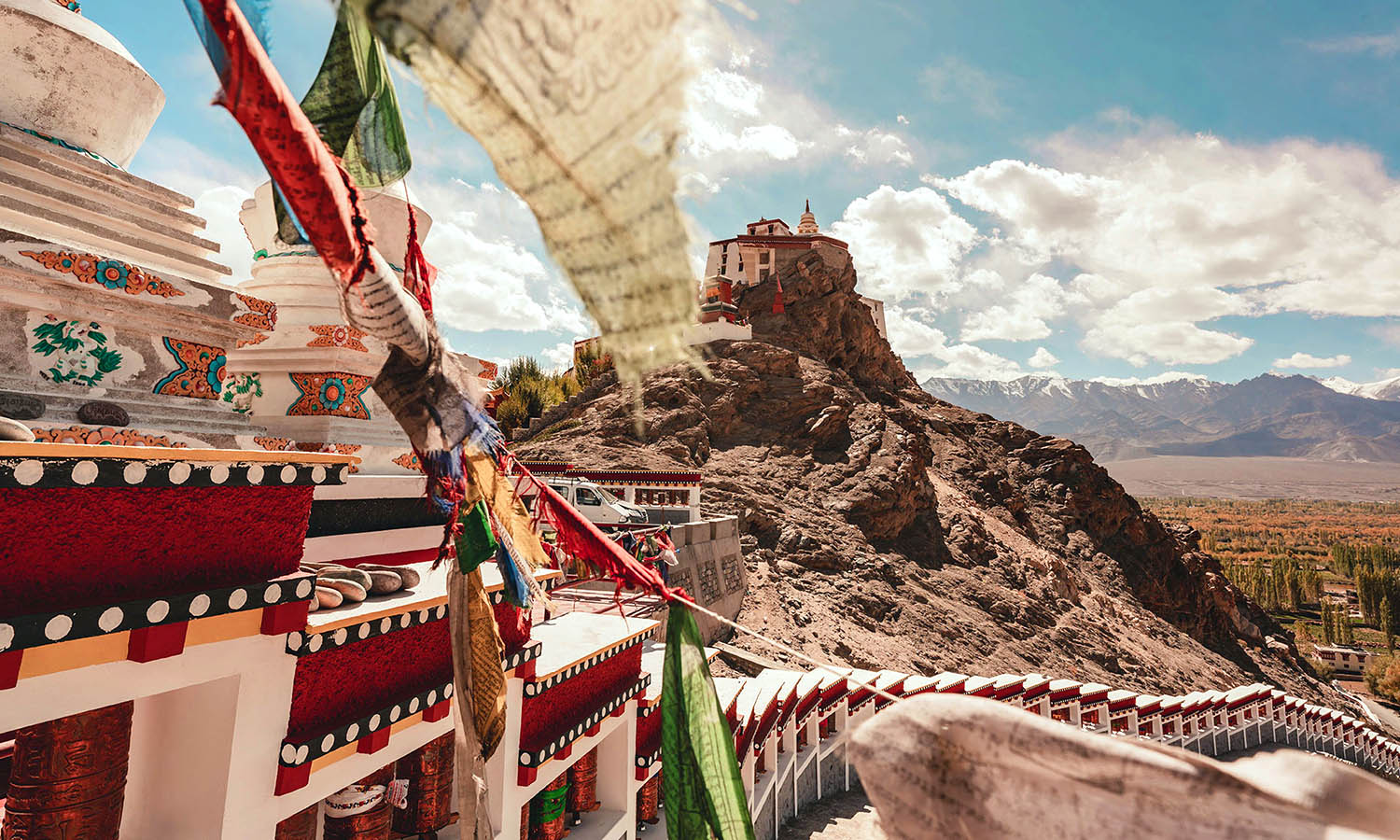

We touched down three days ago, flying in from Delhi to land at the small dusty airport just outside of Leh. The old city feels like a forgotten quarter of Kathmandu has been lifted up and dropped onto the slopes of Annapurna. The surrounding peaks of the Indus Valley are crowned with icy spires, while nearer to hand foreboding military compounds line the motorways—a reminder of the geopolitical border tensions between China and India.
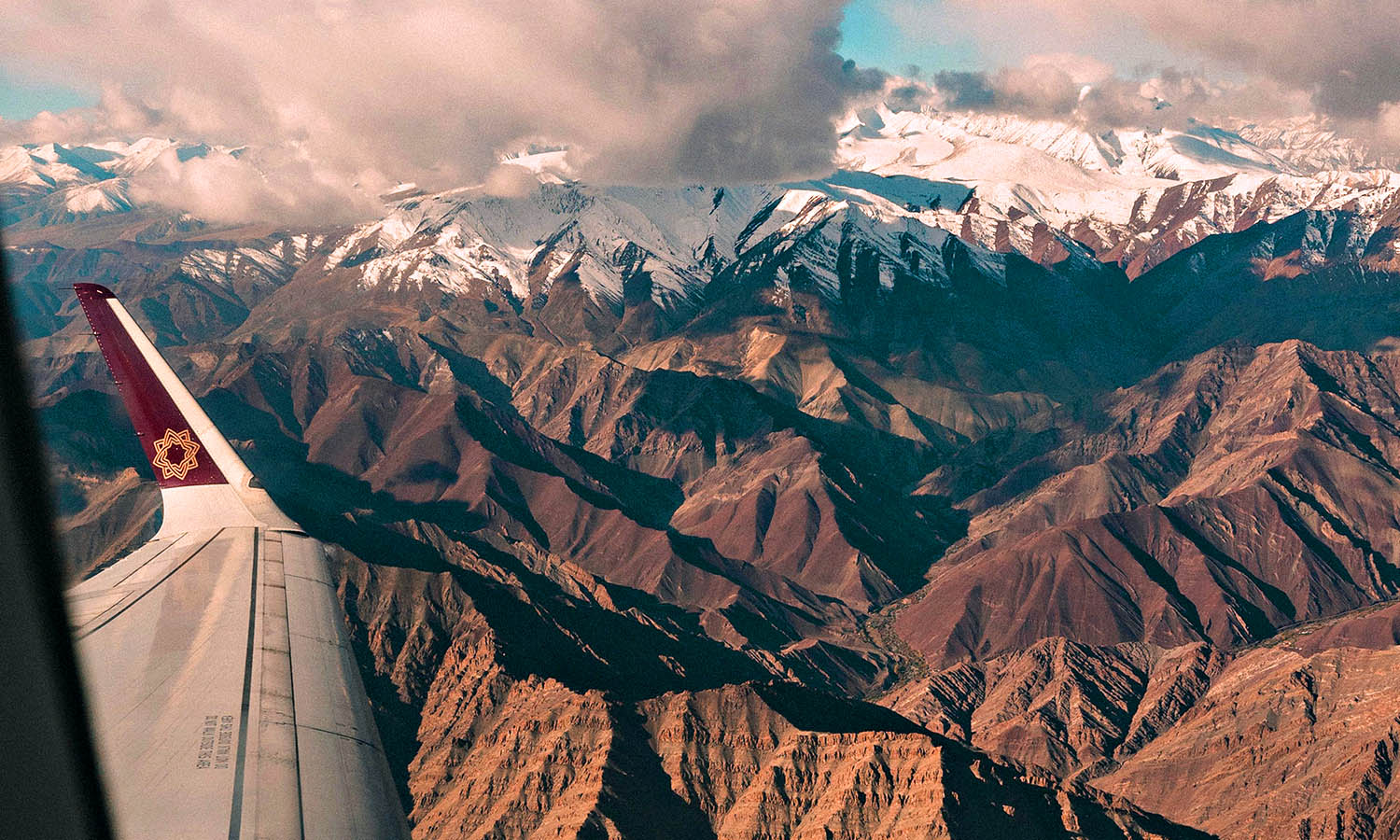



I’m on the ground with Paras Loomba, electrical engineer and founder of Global Himalayan Expedition (GHE). After a transformative experience in Antarctica, Paras was inspired to create a company at the intersection of engineering and tourism, enlisting travellers to provide solutions to the climate crisis. The result? Over 200 communities in India now have electricity, thanks to GHE, including the monastery we’re sitting in.
Click play to watch
With three days of acclimatisation under our belts, we finally set out for the vast Hemis National Park. It’s a six-day expedition and we’re supported by a small crew, plus our baggage horses—all seventeen of them. The landscape here is arid, dotted with simple villages and solitary stupas set against cracked and crumbling mountains. Under a warm winter sun, we splash our way barefoot across a brilliant blue river that carves a path through a valley rife with groves of golden poplars, cries of “jullay!”(hello) ringing out from villagers and homesteaders as we make our way.
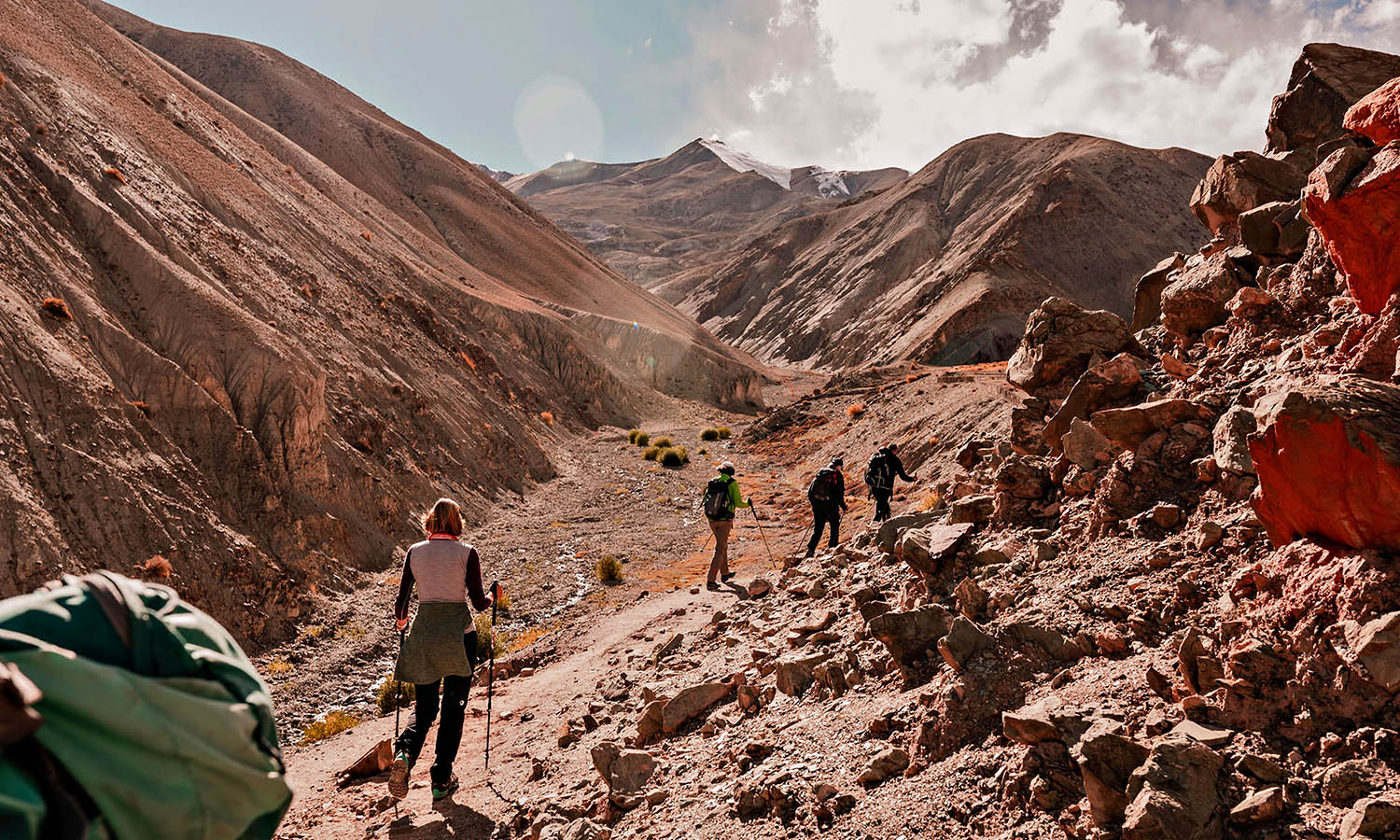

I’m unused to trekking in such luxury. Our crew organises and breaks camp, serving tea and coffee to our tents each morning. Our Nepali cooks are surprisingly unhindered by the lack of facilities—preparing everything from pizza to carrot cake out of the magical mystery mess tent.
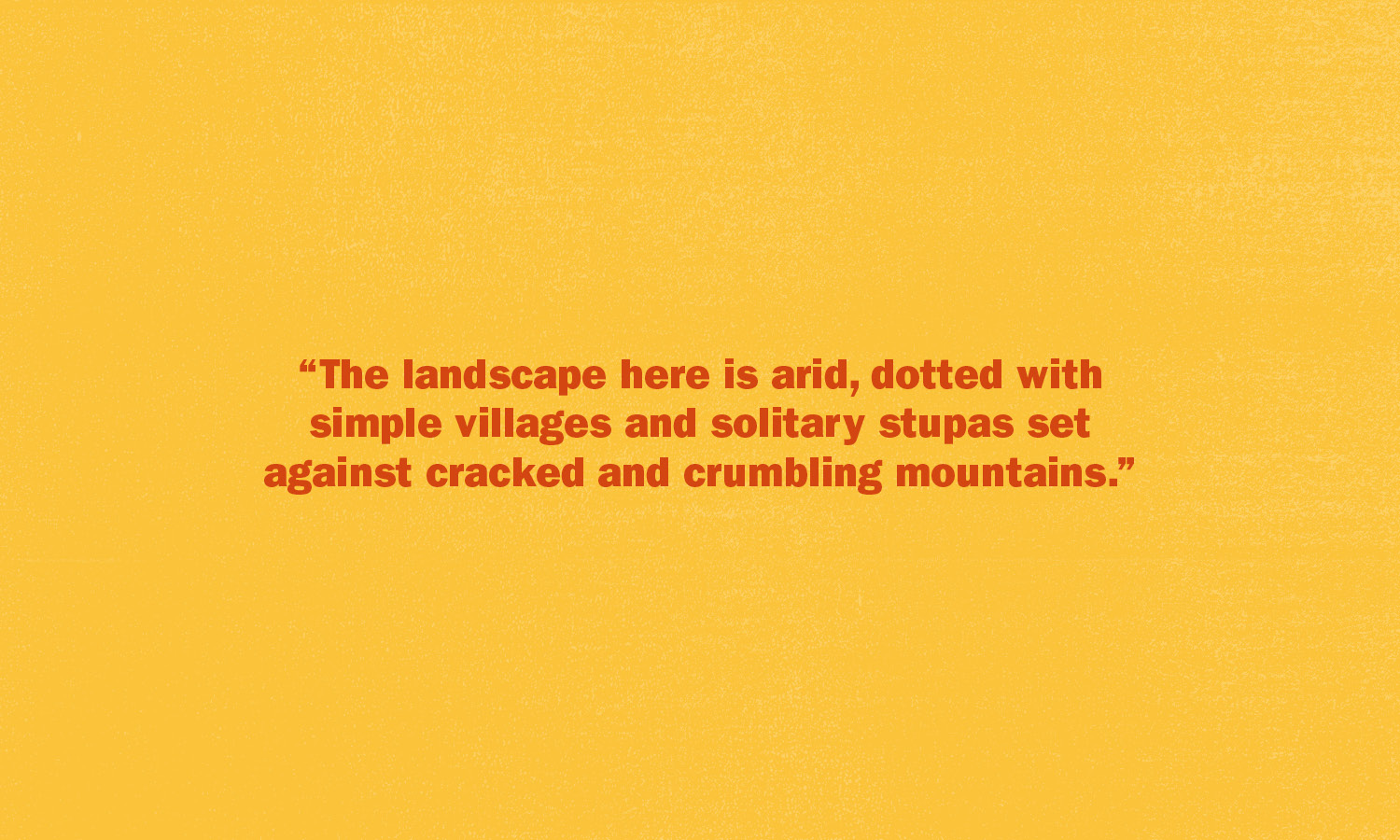

The pampering, though, is much appreciated as the trek itself is gruelling. By the second day, we’re already plodding breathlessly upward to the 4,900 metre Ganda La pass. A 69-year-old Austrian trekker on our team, Horst, gratefully accepts a lift to the top on the back of one of the horses that we unanimously nickname ‘Hero’. My nickname for Horst is ‘Horizontal Horst’ due to his penchant for casting his pack on the ground at every break and lying on his side, Titanic-style, to smoke a handful of cigarettes. Not that I’m in great shape myself. My last Himalayan trek was almost a year ago, and already my calves and quads feel like they’ve been sliced to ribbons from the inside.
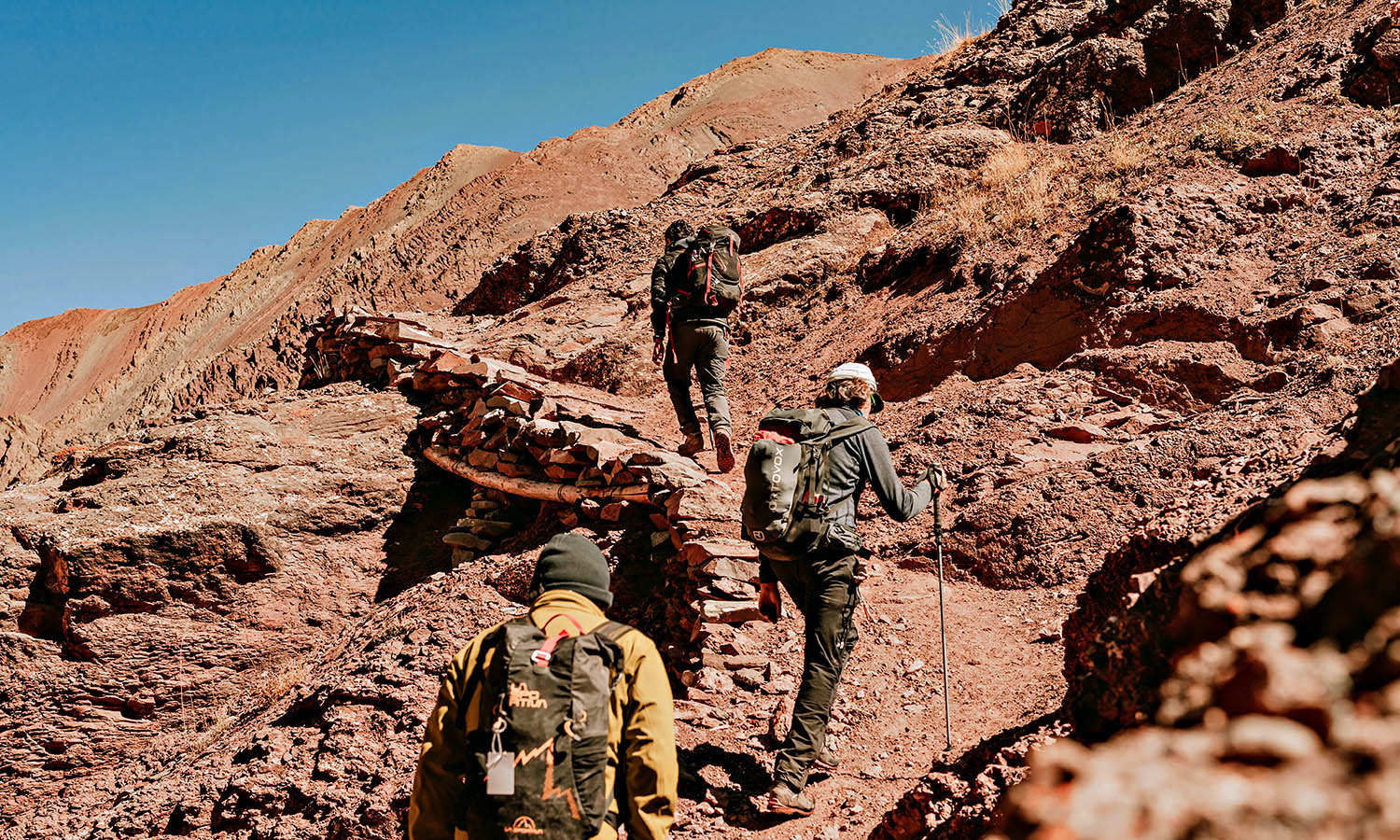

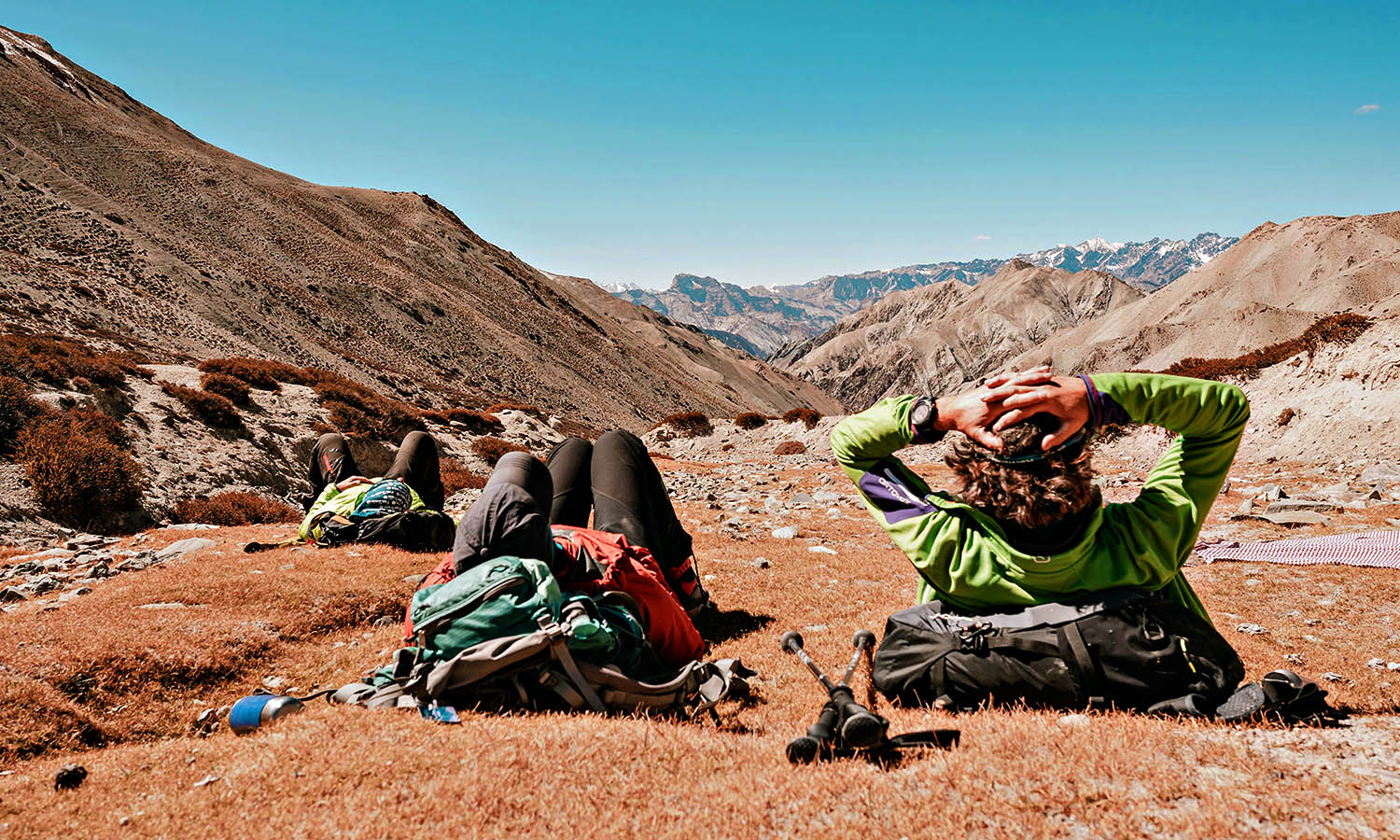

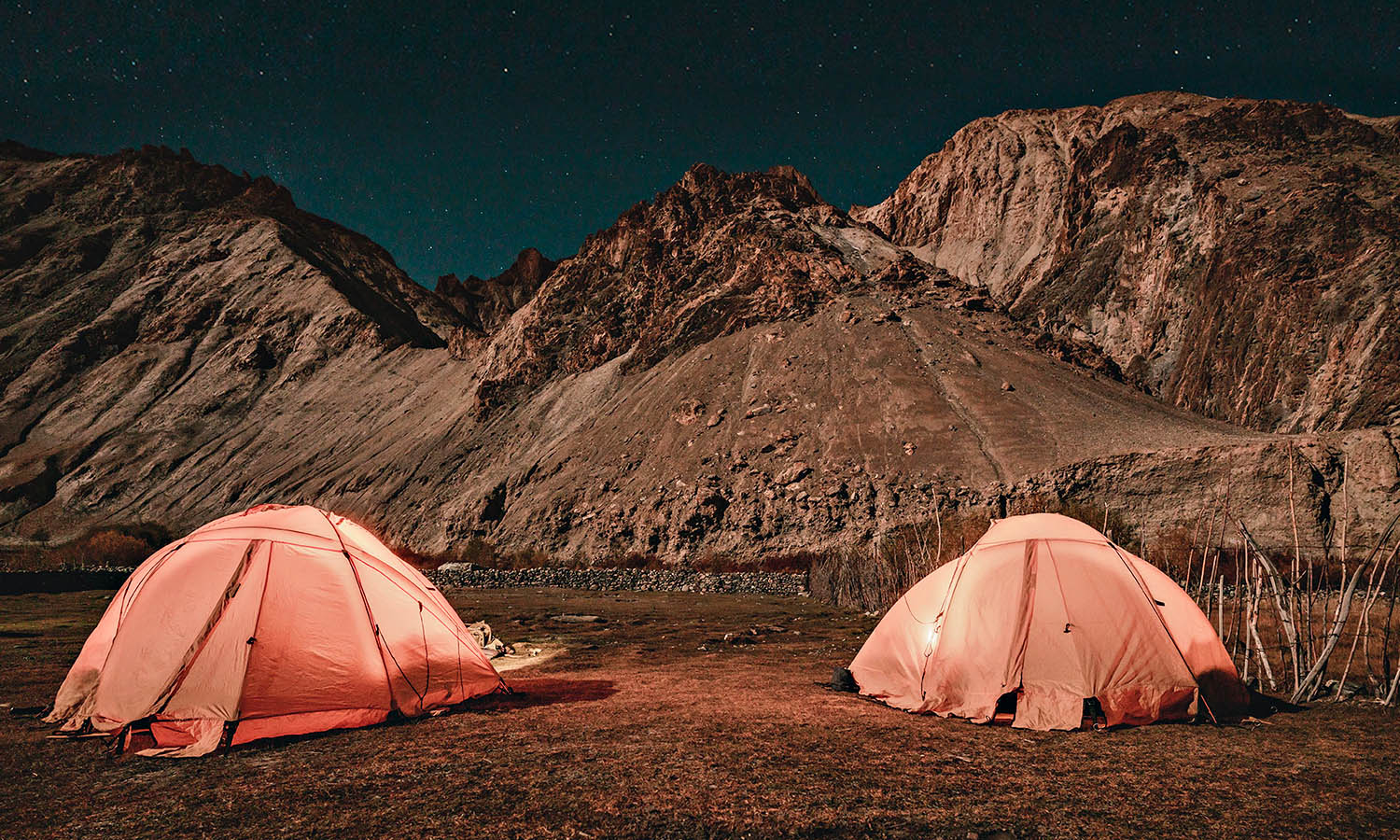

The complete lack of mobile reception is as invigorating as the lofty altitude is debilitating. I spend any downtime we have in my tent, bundled up in either meditation or engrossed in a book, trying to fight the creeping lethargy. Our fifth night finds us camped at 4,700 metres—the highest point I’ve ever braved in a tent—on a plateau under starlit skies. It truly feels like the edge of civilization as we know it.
During the night, my tentmate Gunter Mussnig—another Austrian—and I struggle to exist, let alone sleep, as each breath becomes a battle. Outside, a wild dog barks with ceaseless endurance. Gunter is the founder of Trail Angels, an Austrian sustainable tourism developer, and the reason I’m here photographing this expedition.
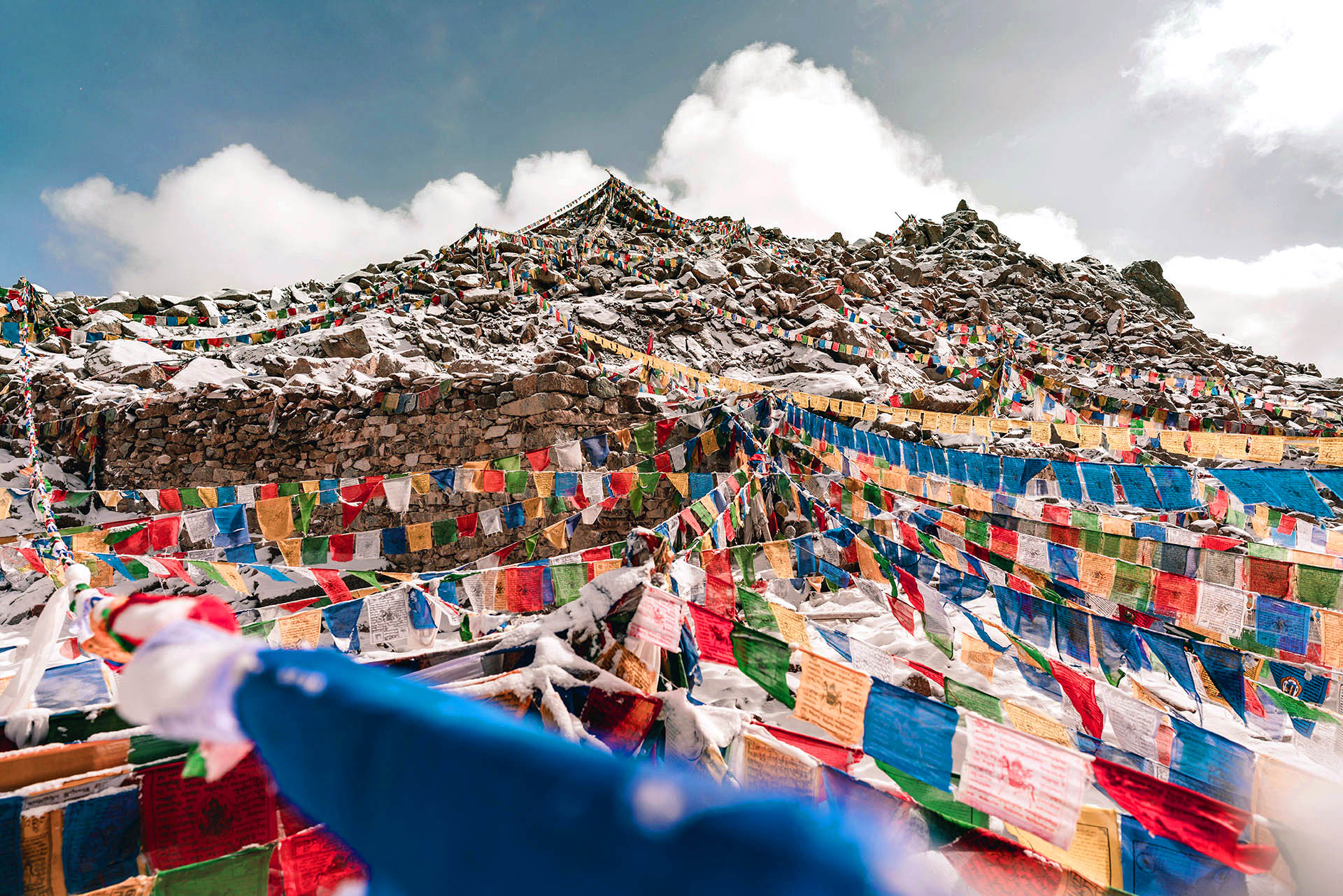

The next morning as we push onward up to Kongmaru La (5,236 metres), I reflect on what has drawn me here, to this journey. Was it an unexplainable longing for Tibet, or perhaps to answer the question of whether travel can serve a purpose outside of myself? While gasping for air at the top of the pass, prayer flags rippling in the wind around me, I remember something Gunter said that struck a chord: “I would not like to live in a world without travel. That’s why we are doing this, to make travel possible in times of climate crisis”.
Click play to watch
The climate impact project for our expedition is to subsidise the cost of 17 solar water heaters for Boorma, a remote village in the Nubra Valley, where the Himalayas meet the Karakorum. As we walk into the village, a sandstorm grows in the grey distance. Closer by, young children scurry with excitement back to whitewashed dwellings to announce our arrival. We are welcomed wholeheartedly under a colourful nomad pavilion by smiling villagers in traditional maroon woollen garments.
Together, we work to install the solar heaters. Each heater will not only provide hot water for bathing and cooking during the harsh Ladakhi winters, but will also replace 2.3 tonnes of carbon over the course of its lifetime. More than offsetting the footprint of our trip. In fact, even when accounting for international flights, our trip is totally carbon-negative. Every expedition with GHE is slightly different, as each one paves—as Paras puts it—“inroads to new [eco-friendly] destinations”. The beauty of expeditions like this is that previously unreached communities can partner with GHE to develop sustainable livelihood opportunities.
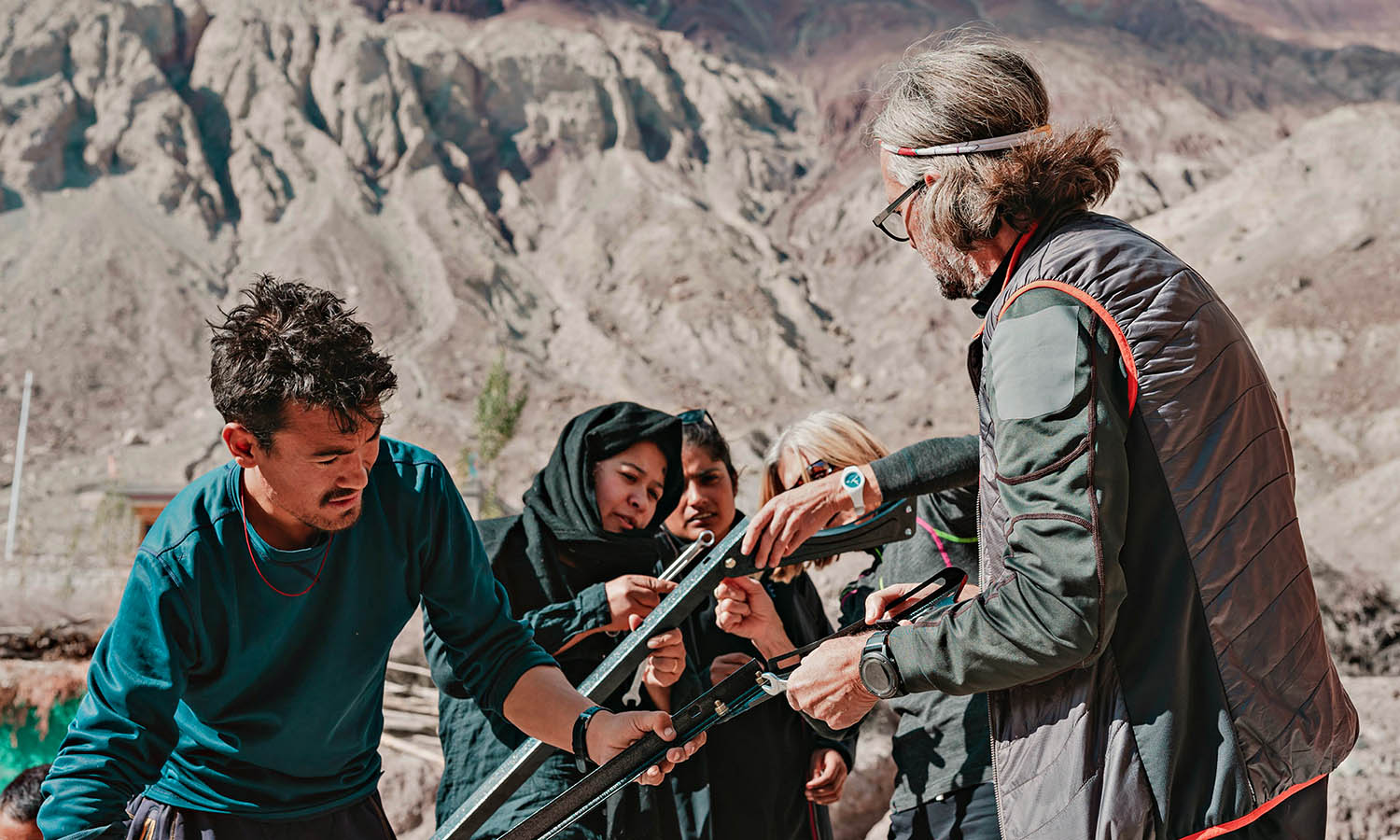

After a shared meal, coated with a light dusting from the sandstorm raging outside, we’re invited to don local garb and join the villagers in a traditional dance. We dance, and we laugh, and we exchange gifts—school supplies and sweets for the children—who accept them with gusto. Almost in a trance, I manage to take the group’s photo before the teary goodbyes begin. As our van wheels around, the villagers climb the rock wall parallel to the road and wave goodbye as we bounce off into a dusty Karakoram haze.
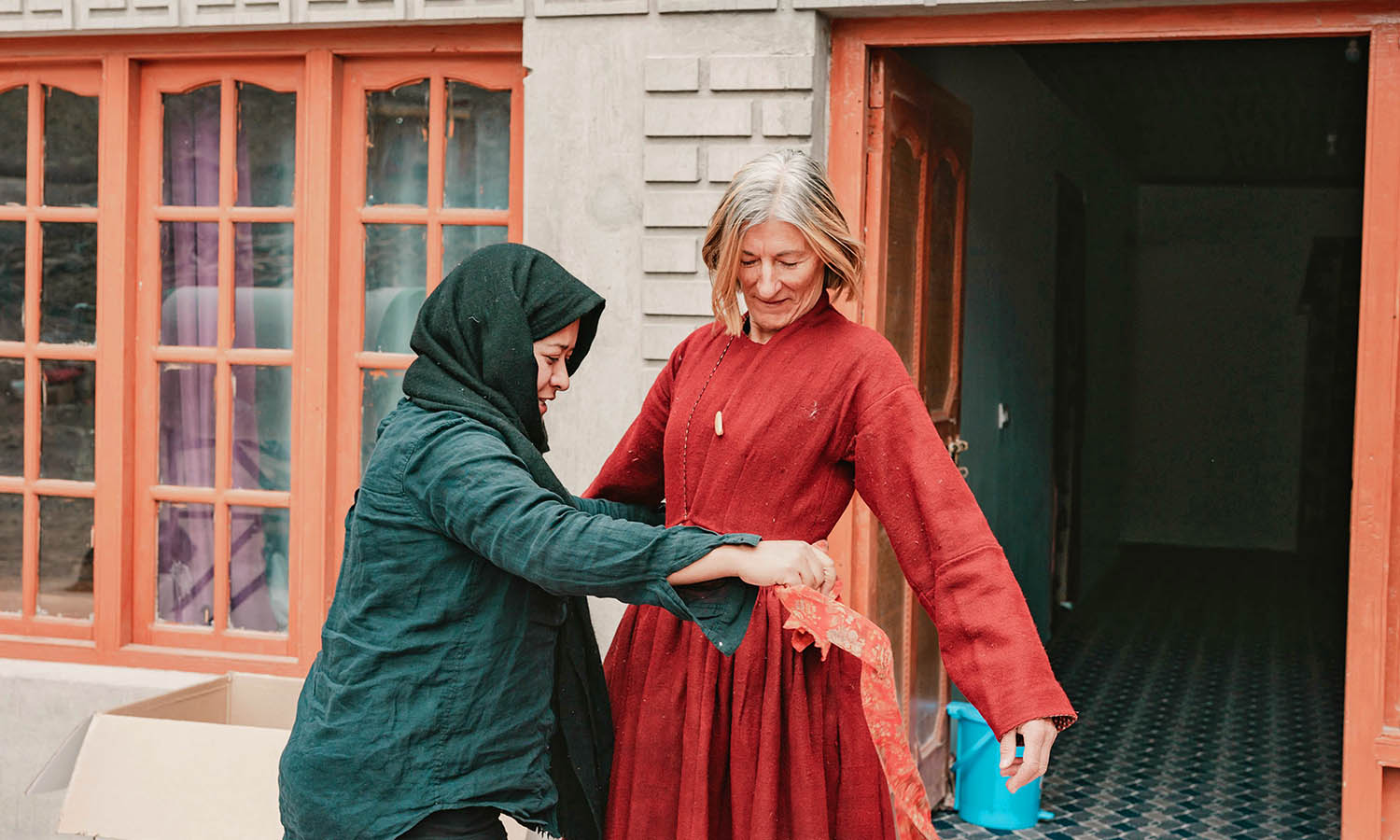

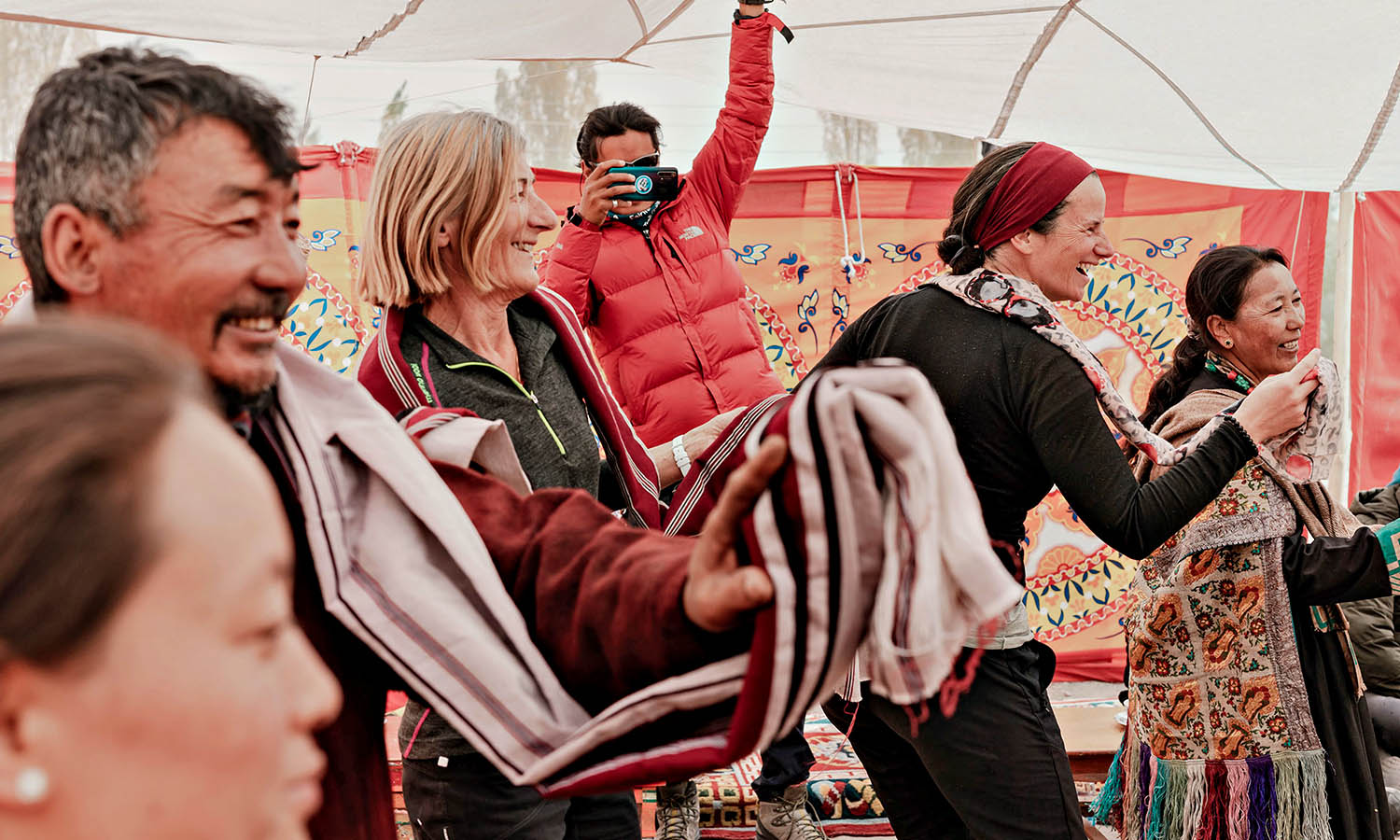

Hours later, our tires spinning in the accumulating snow at Kardung La—the world’s second-highest motorable pass—I slide open the frosted window and stick my head out into the white void. Dusk has set in and the temperature is plummeting, but my heart is full. In that quiet moment, I recall the whispers of a prayer, from a monk in my not-so-distant past, and I finally understand its significance. And I know, without any doubt, that this won’t be my last time in Ladakh.
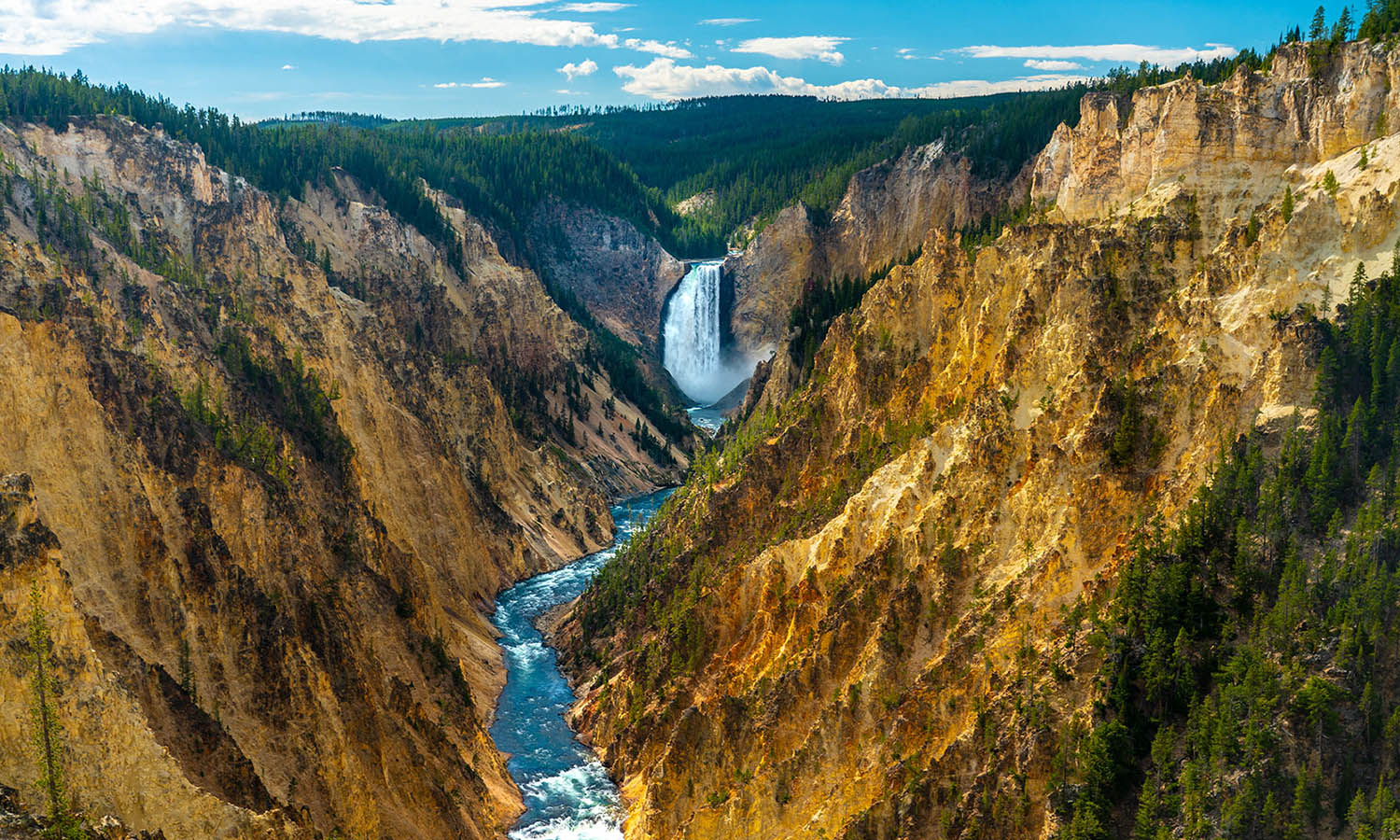

Big sky, a hidden hamlet in Montana, is an R-rated destination. But get your minds out of the gutter, friends, by that I mean it’s all about relaxing, rejuvenating, reconnecting and returning refreshed. Situated just an hour’s drive from Yellowstone—one of the world’s greatest natural playgrounds—and home to the biggest skiing in the US (they’ve got over 5,800 acres of world-class terrain), Big Sky is the gateway to a true outdoor heaven.
Click play to watch
After driving through Big Sky canyon and alongside the pristine Gallatin River (known for its ridiculously large and rather naive rainbow trout), I end up in downtown Big Sky—a charming town that feels small but is densely packed with eclectic galleries, bars and artisanal storefronts.


I wash up on The Rocks, a local resto-bar that draws me in with its siren song of laughter and clinking glasses. “I’ll gladly get you anything you want my friend, as long it’s from Montana,” says Maddie from behind the bar. Turns out The Rocks only serves Montana-made hooch, of which there is—I am quick to find out—quite a lot.
I opt for a flight of their local amaro (a bitter type of liqueur), which ranges in flavour from ‘eating the forest floor’ to ‘a kiss of honey and angel song’. When the drinks and the altitude become apparent in my posture—Big Sky sits at 2,200 metres above sea level—Maddie slides a giant bowl of homemade pho and fresh bread across the bar. “Trust me,” she says. I do, and it’s everything and a crouton more than I could’ve hoped for. That’s just the way with Montana hospitality.


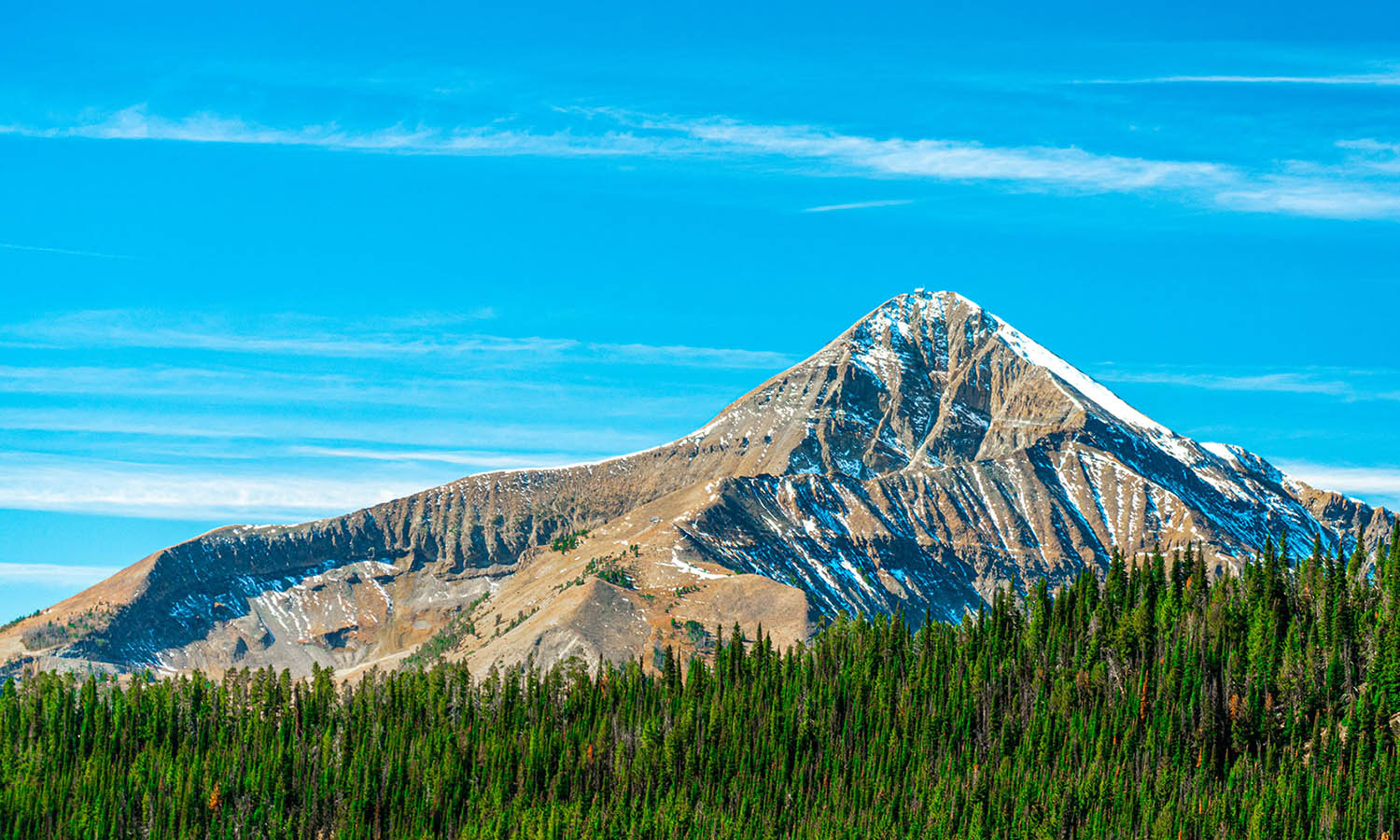

The next morning I wake with a happy hangover, quickly neutralised by a strong coffee and some fresh mountain air, before driving out to the Beehive Basin Trailhead. I park my car, cross a small wooden bridge and find myself totally immersed in virgin wilderness. The sheer vastness of Montana’s wilds is unlike anything I’ve experienced—the mountains seem both looming and distant; the trails take you through lush pastures and up rocky inclines. Nature is a force to be reckoned with here.
A few minutes down the road, at Gallatin River Guides, a huge dog bounds over to greet me. “Don’t worry ‘bout him, he just loves people,” says a friendly voice from behind a huge fly fishing display. The voice belongs to Garrett, a young local guy with a big smile under a baseball cap. “You must be Roberto… first time here?” he asks.
“It’s that obvious?” I respond. “It’s the shoes. Come on, let’s get you set up,” says Garrett. Within moments, I’m sheathed in nylon waders and neoprene boots and am climbing into Garrett’s truck. “This whole river is teeming with wide mouths,” he tells me, “but if you’re up for it I know a little place just past Cafe 191 that’s very special.” So we barrel down the highway.
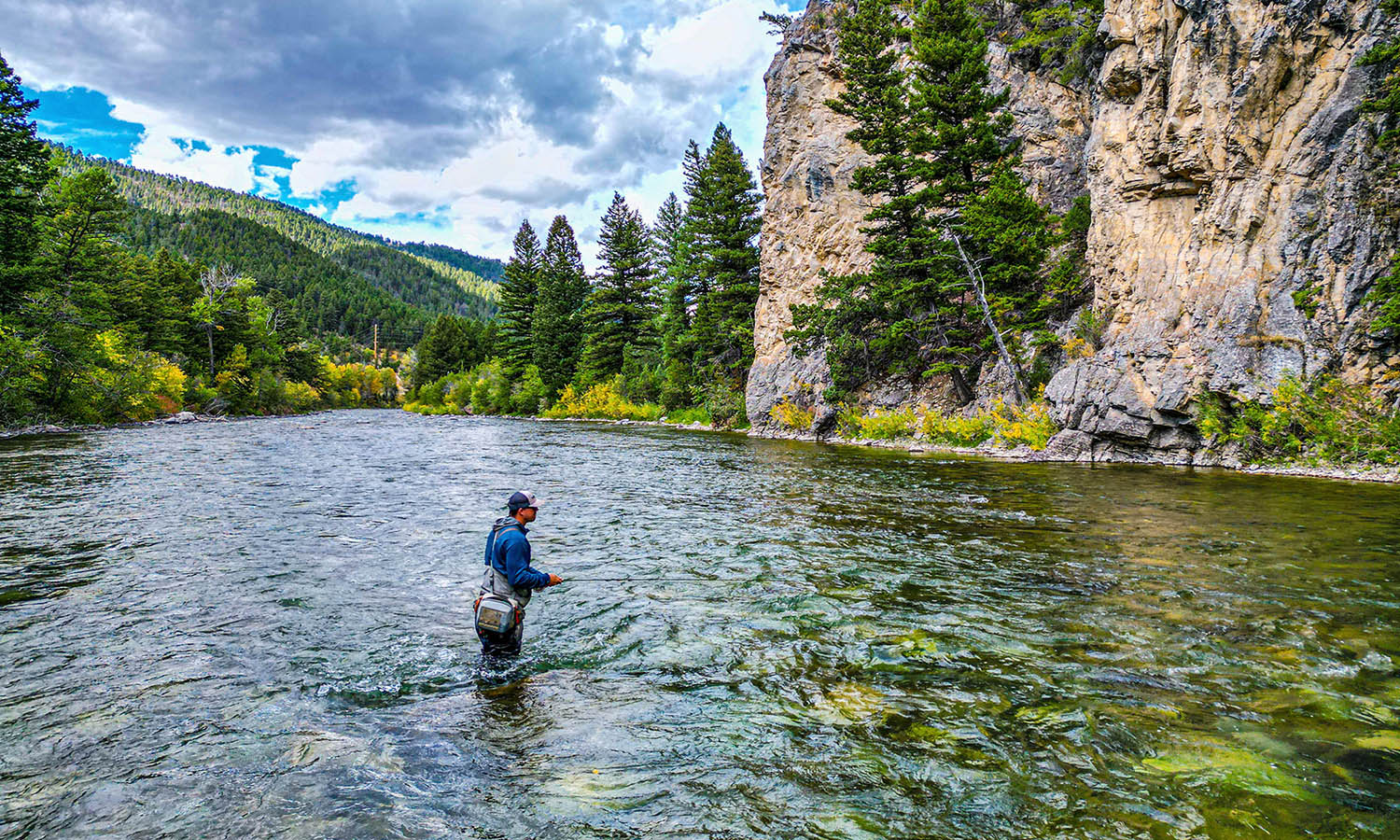

I’ve only gone fishing once in my life, and that was for tuna in Cabo. I was 12 years old and I didn’t like it enough to go for a repeat. Fly fishing, for those that don’t know, involves standing in waist high water (another thing I’ve only done once before—on NYC’s Avenue A during Hurricane Sandy) and attempting to snag a slippery one.
“Fly fishing is all about mimicking nature,” Garrett says while latching two lures, “you want to be invisible to the fish, make them believe they found a real lunch.” He throws his line in the water with an Indiana Jones-style whip, and pulls out a sizeable fish. It took a total of 12 seconds.
“See!” he says with a grin.
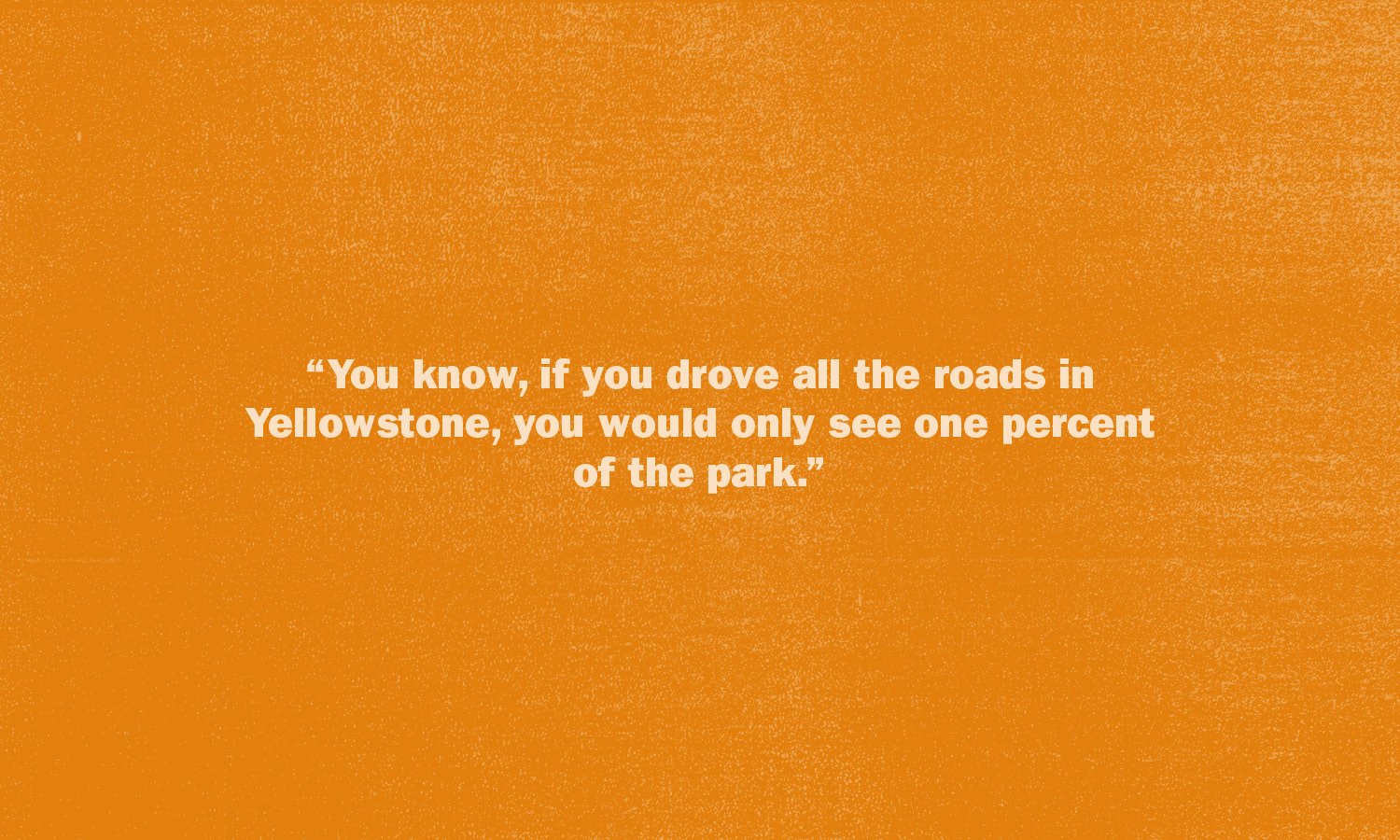

Not convinced, I throw my own line in. I watch the way the current takes it. I realise this is just a game—me versus fish—and it becomes more addictive than Fruit Ninja. Each time I cast, I get a little bit better until my line eventually disappears into the river. Invisible, like Garrett told me. That’s when I feel the tug, so I snap back on instinct and hook my first fish.
“See!” he says again. I saw. And I can feel a new hobby firmly taking hold. This fly fishing stuff is magic. When I ask Garrett if he ever eats his catch he says “oh no, never—these fellas are my coworkers, I would never eat them.”
Click play to watch
Looking for a one-stop-accommodation-shop?
Big Sky Resort is our Montana go-to. It’s not just for the winter time, either. In summer you can catch us ziplining from across green meadows, hiking Lone Mountain, biking down forested runs, rafting whitewater rapids, climbing really really big rocks and even playing a spot of golf. Before bunking down for the night in one of their (many) lodging options. Life is good at Big Sky.
Click play to watch
West Yellowstone town is as cute as it sounds—ice cream shops selling fresh huckleberry creams and little Western shops dotting the drive, flags waving in the morning sun. The Yellowstone Vacation Tours are impossible not to spot, with their sunshine yellow tour-bus-on-steroids sitting out front. I meet tour guide Jason, who goes by the name ‘Gypsy’, and within minutes we’re roaring into the heart of one of the most pristine natural landscapes on the planet.
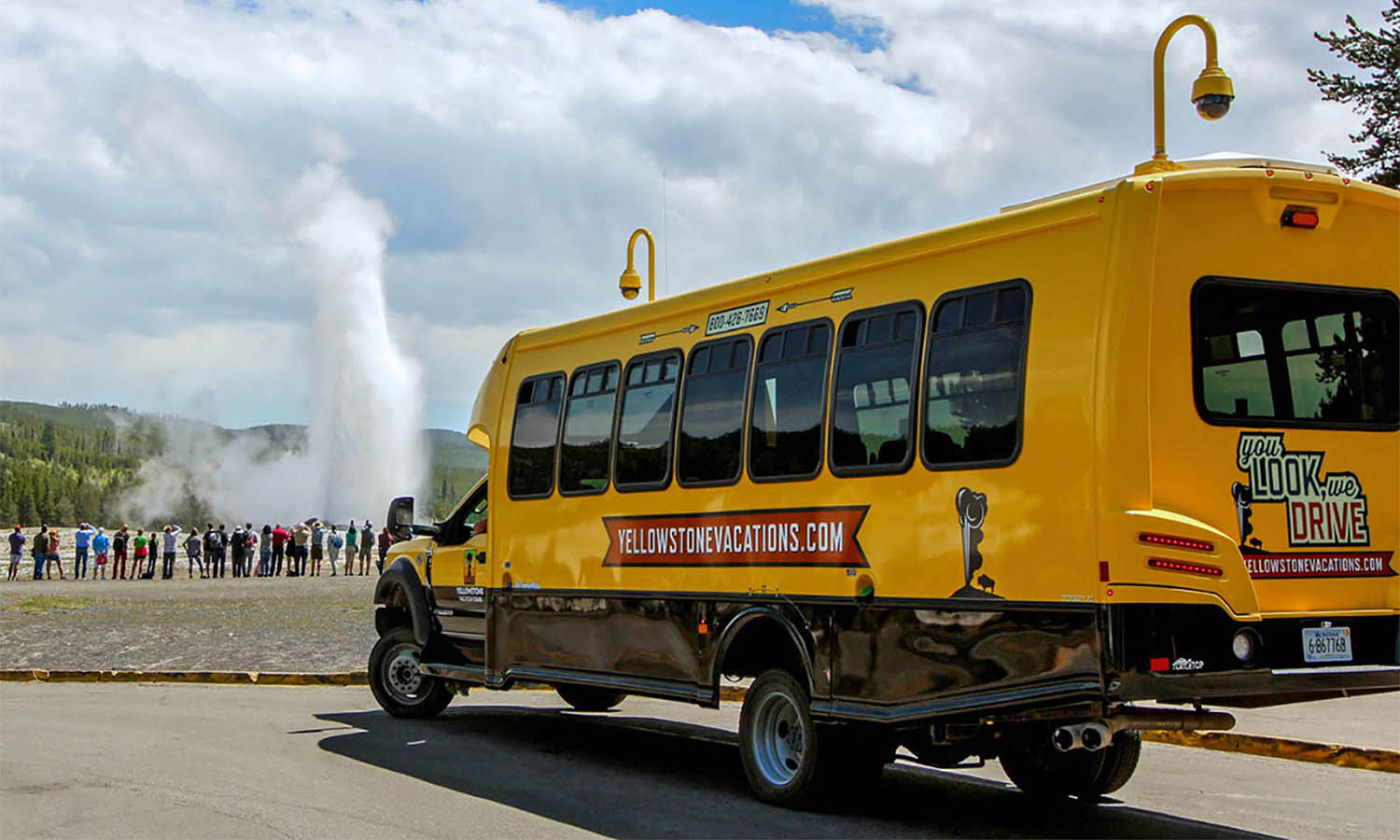

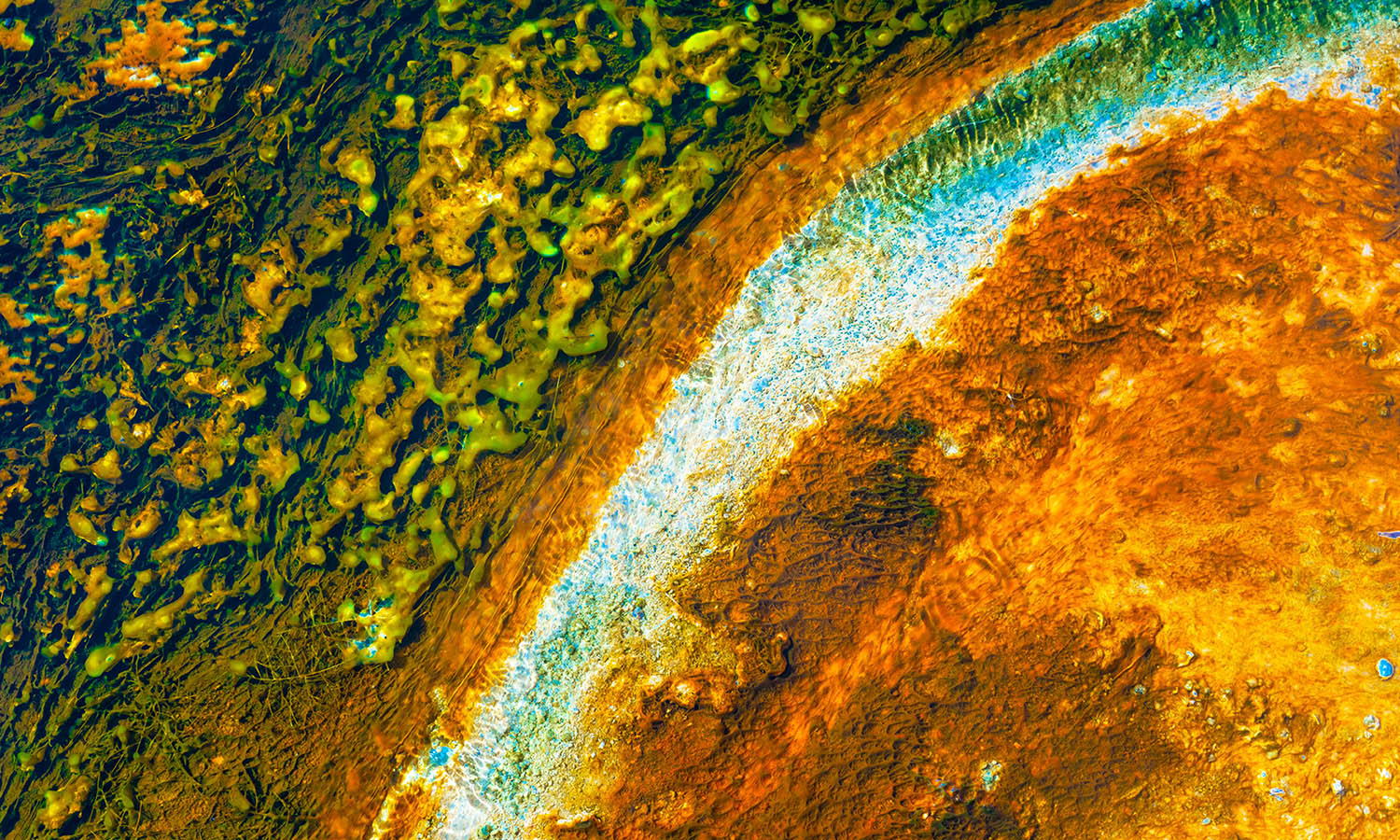

“If it’s alright,” Gypsy pipes up as he picks up speed, “I’d suggest heading deeper into the park, that way I can show you more in less time. It can get a bit crowded here, especially if the bison are up early causing traffic jams.” In his capable guiding hands, we see the absolute best of the park: hot sulphur pools with irradiated colour bands that (literally) birthed life on our planet; giant mud pots and incredible waterfalls; the Continental Divide which determines the way the water flows—east to the Mississippi River or west to the Pacific Ocean; and herds of bison so close you could ride them.
Gypsy is, hands down, the best guide I’ve ever had. He knows an absurd amount of facts about the park—well beyond any reference book—and how to share that knowledge without it every being boring. At Yellowstone’s most famous geyser, Old Faithful, he predicts an eruption in eight minutes. The geyser blows in eight minutes and four seconds. Guiding is a special skill, and Gypsy is a master of it.
Click play to watch
Later in the day, Gypsy tells us there is one final showstopper in store. We pull into a small parking lot, pour out of the bus and begin walking down the gravel path before Gypsy stops us. “Listen, just humour me. I want you all to look down at your feet from this point on, don’t look up, just follow the feet of the person in front of you. I’ll tell you when to look up,” he says mysteriously. “Trust me, it’s better this way.”
We follow him, blindly, for 100 metres before he tells us to look up. Everyone gasps. We’re in the middle of the Grand Canyon.


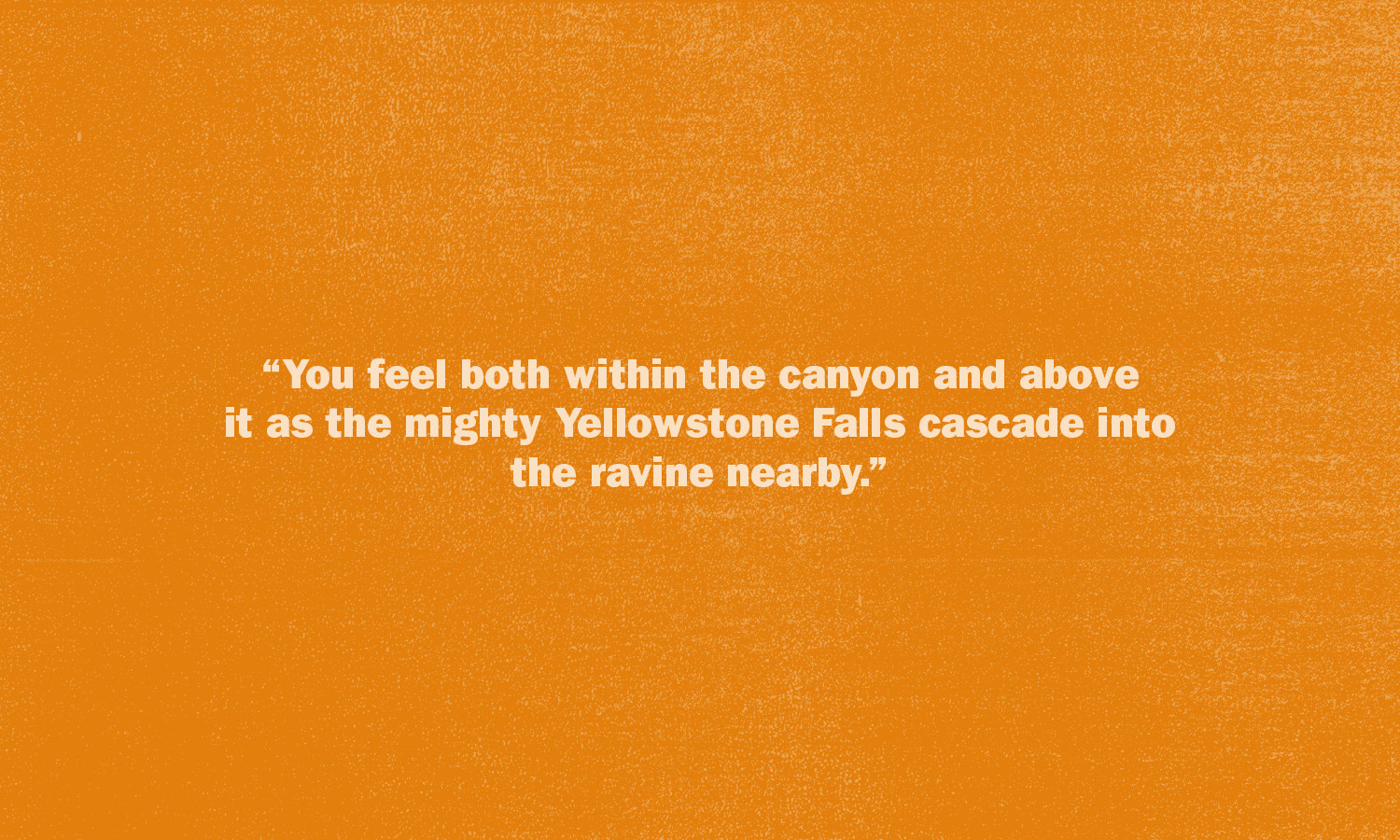

The Grand Canyon of the Yellowstone, discovered in 1869, defies words. You feel both within the canyon and above it as the mighty Yellowstone Falls cascade into the ravine nearby. The geology of the area is still ancient, and the bright, brindle colouring of the rock walls fascinating. Gypsy was right, this is certainly the cherry on top of an epic tour.
“You know, if you drove all the roads in Yellowstone, you would only see one percent of the park,” Gypsy says, like a cowboy sucking on a corn pipe. “This right here is more country than anyone will ever see, and has more treasure than we’ll ever know.”
I can’t agree more. And moreover, it’s a sentiment that applies to the entirety of Big Sky, Montana. A small town atop such a wealth of natural beauty it feels like one could never fully explore it all. But I reckon I might just give it another go next spring.
You’d be forgiven for not knowing much about Lord Howe Island. No one even knew it existed (according to Western history books) until 1788, when European settlers became the first known people to set foot on the island.
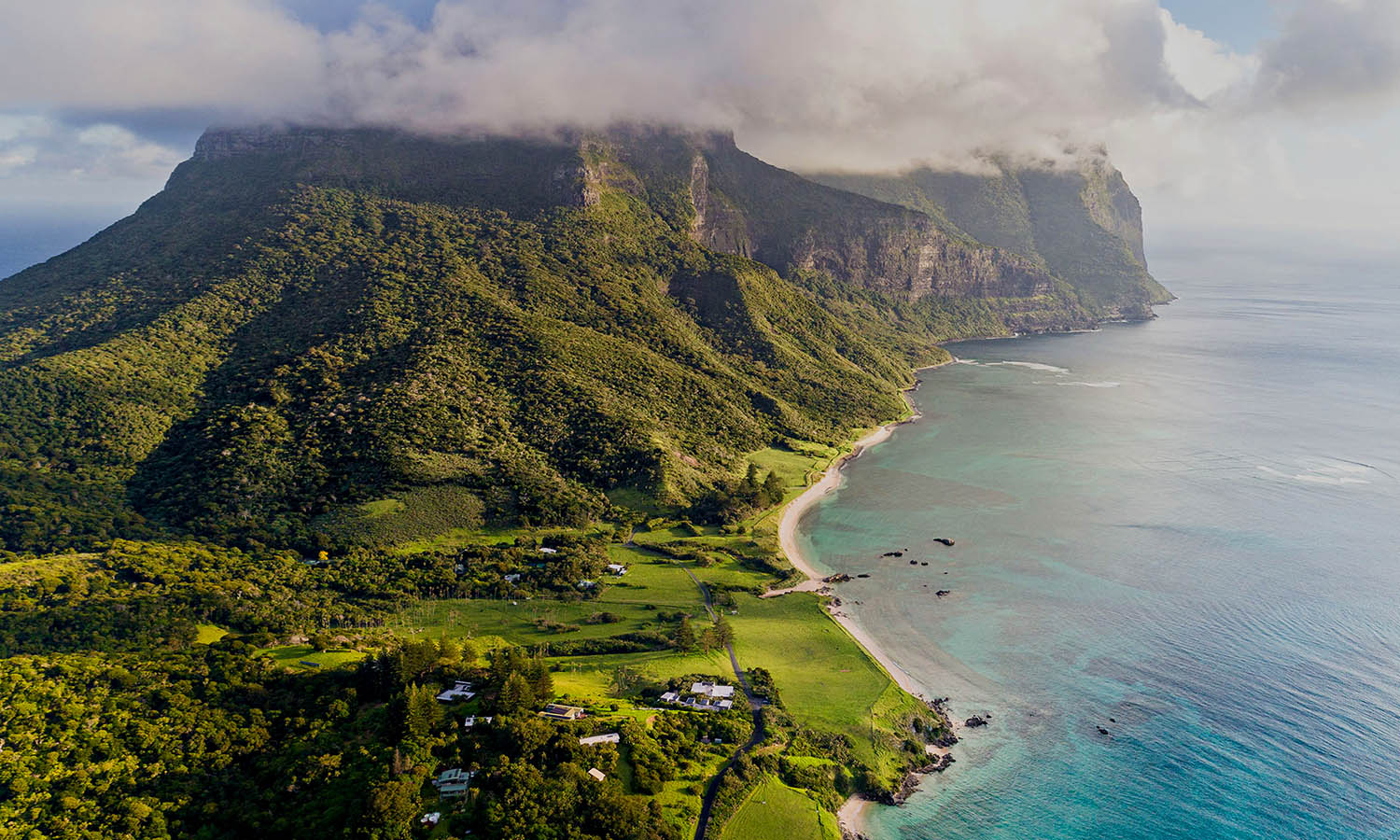

Click play to watch
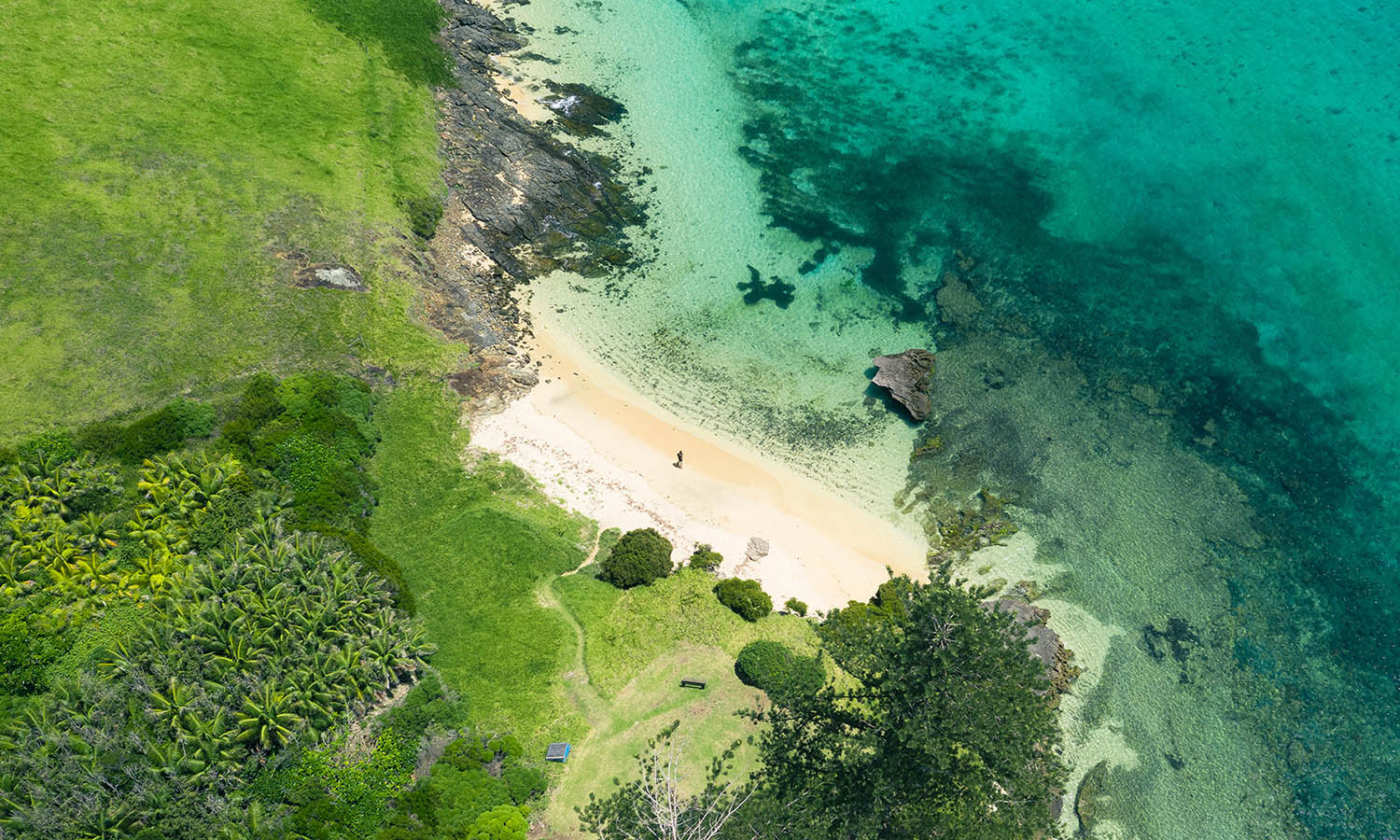

Nowadays it’s a protected, pristine (UNESCO World Heritage Site, whattuppp) haven for wildlife and nature; a prime example of what the natural world could look like when it’s preserved in its incredible integrity.
Lord Howe has long been one of Australia’s best kept secrets, and we’re going to let you in on it right now. Without further ado, here’s nine things you probably don’t know about Lord Howe and all the reasons why you should get there stat:
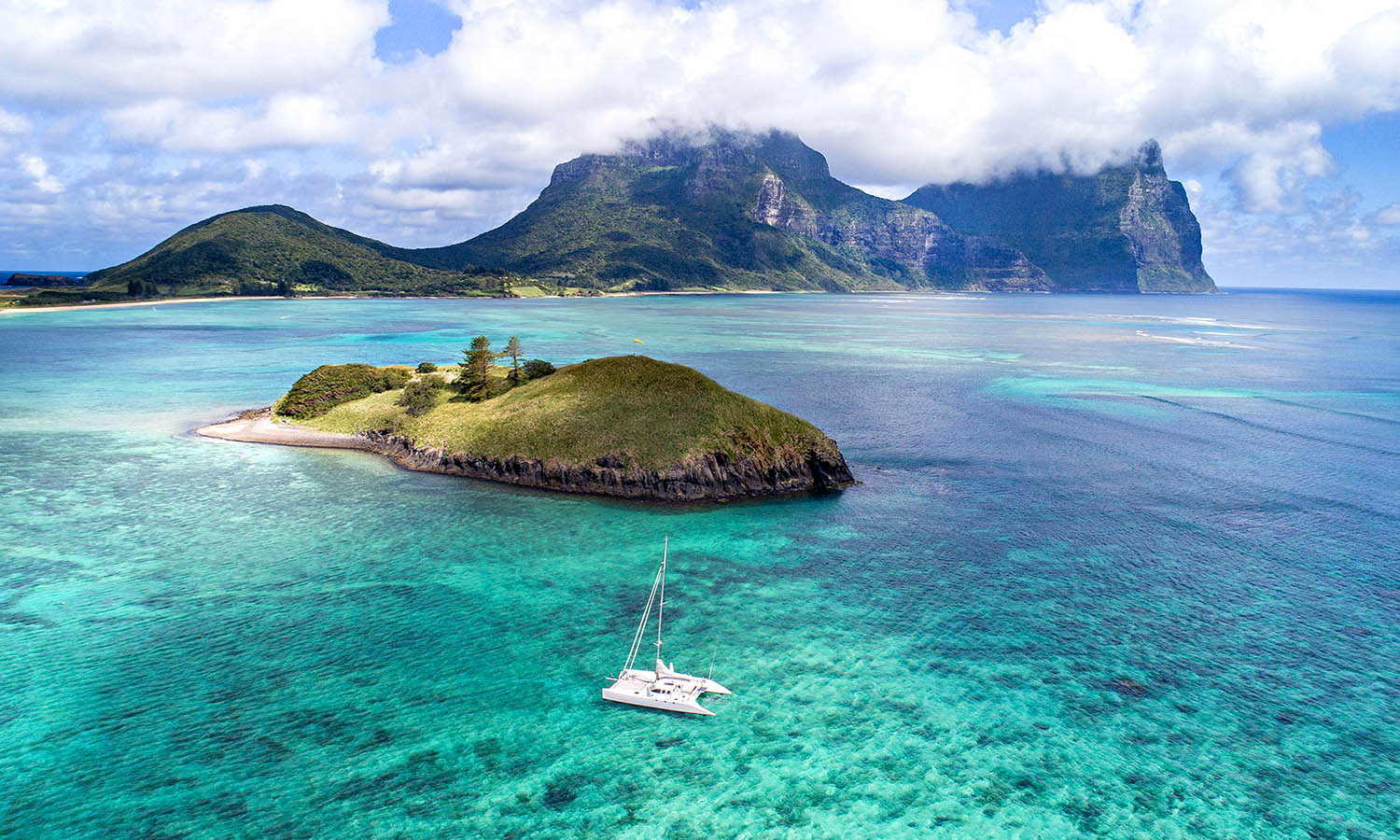

If you look Lord Howe Island up on a geopolitical map, you’ll find it is a part of New South Wales, an eastern Australian state.
But really, Lord Howe is out there existing on its own, just chilling, completely isolated in the Tasman Sea, about 700km northeast of Sydney as the crow (and plane) flies. While isolated, the flight time from mainland Australia clocks in at only two-hours. Making it unheralded but also accessible.
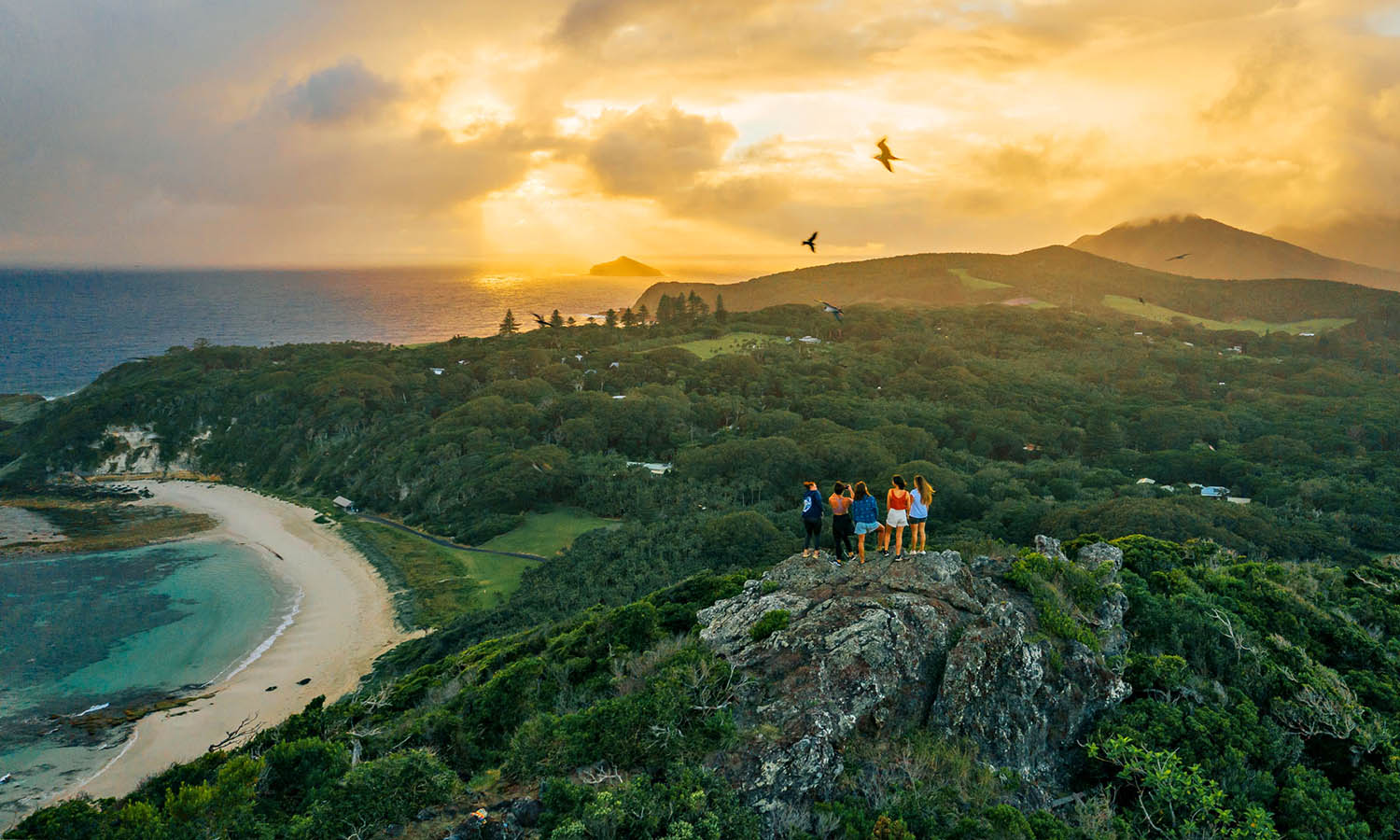

The official population of Lord Howe, at any given time, sits somewhere around 380 people.
From there, a maximum of 400 travellers are allowed onto the island. This rule is in place to keep the rainforests pristine, the reefs and oceans clean, and the animals undisturbed. The best part? If you do make it to Lord Howe, you’ll feel like you have it all to yourself.
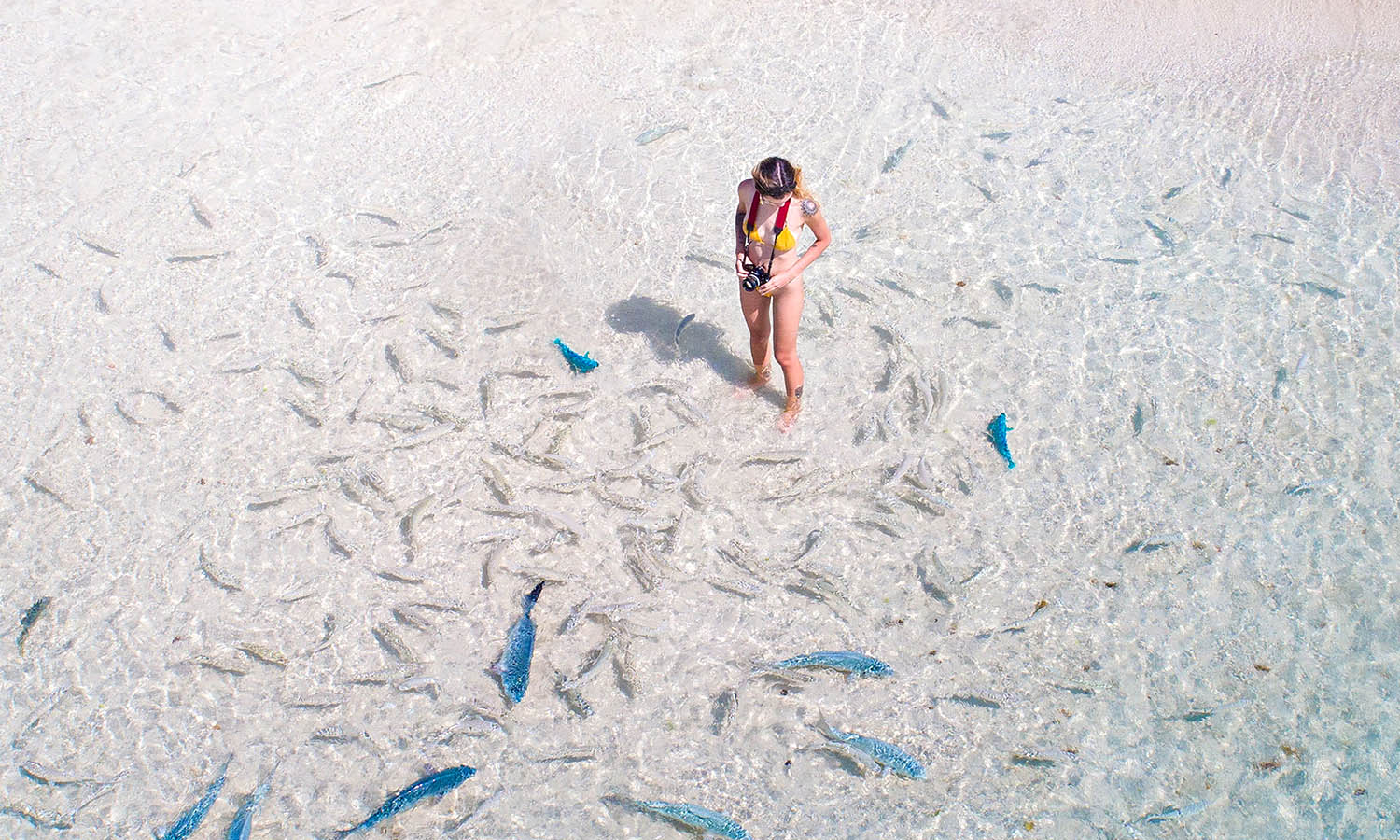

Ever laid eyes on a Dryococelus? How about a double-headed wrasse? Or a Lord Howe woodhen? No, we bet ya haven’t because these creatures are endemic to Lord Howe Island.
That means you can find them on Lord Howe and Lord Howe only. The island has proven to be a spectacular environment for living creatures in the air, on the ground and in the water, and rivals the famous Galapagos Islands in terms of its unique biodiversity.


Built in an architectural style that’s reminiscent of the luxury homes you might find along Victoria’s Great Ocean Road, Capella Lodge is relaxed, charming and the epitome of coastal cool. You’d expect nothing less from a Luxury Lodge of Australia.
There are nine suites (all of equally stunning beauty, much like the island) with epic views. But we reckon the best vista might be from Capella’s all-time swimming pool, which wouldn’t look out of place in our Hot 5 this issue.
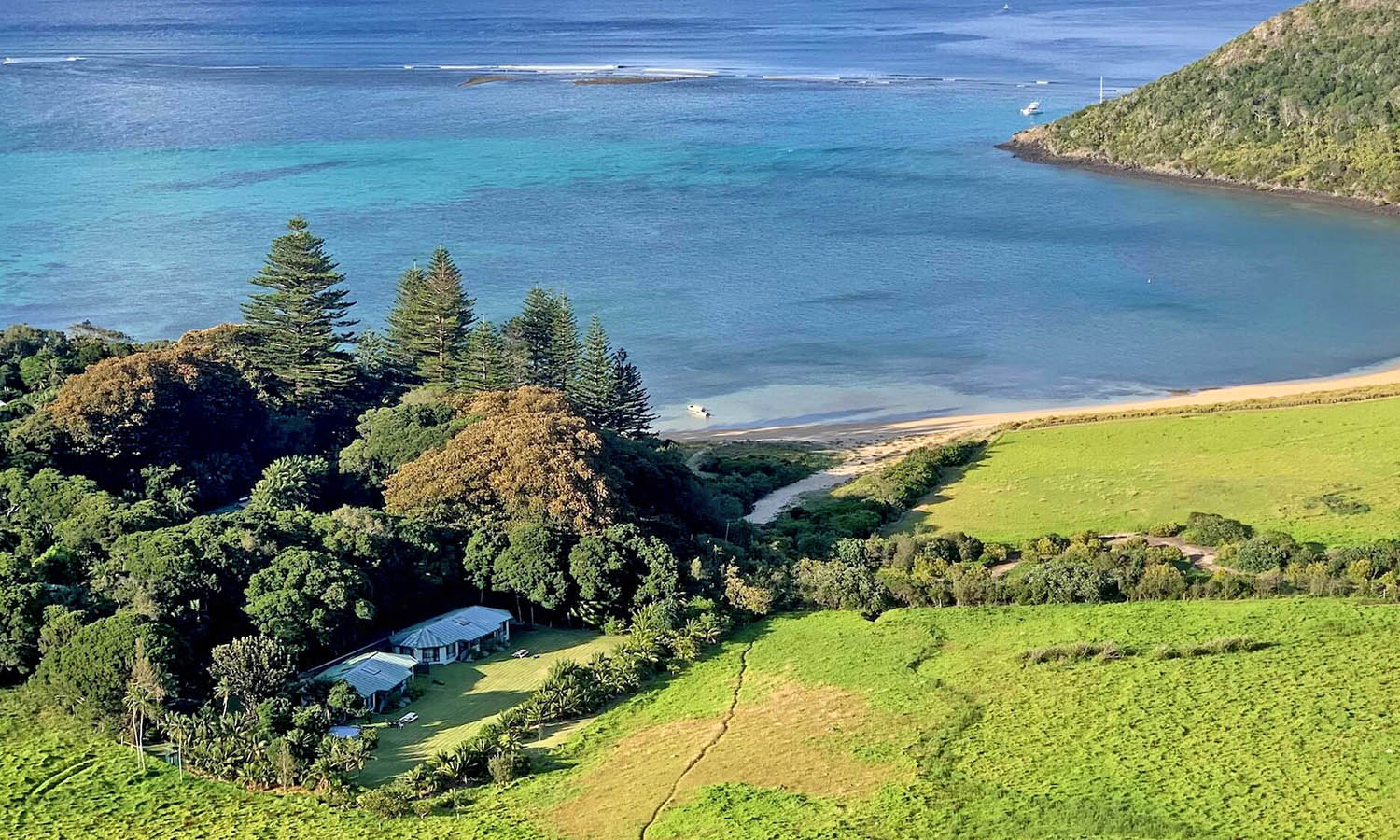

Your pockets don’t have to be as deep as the Tasman Sea to stay somewhere stunning on Lord Howe.
Nestled in quiet spot amongst a grove of Banyan trees are Milky Way Villas, right around the corner from the secluded Old Settlement Beach. The villas are comfortable and affordable, and allow your focus to stick to the important – like having turtles and fish of every colour swimming a minute from your front door.
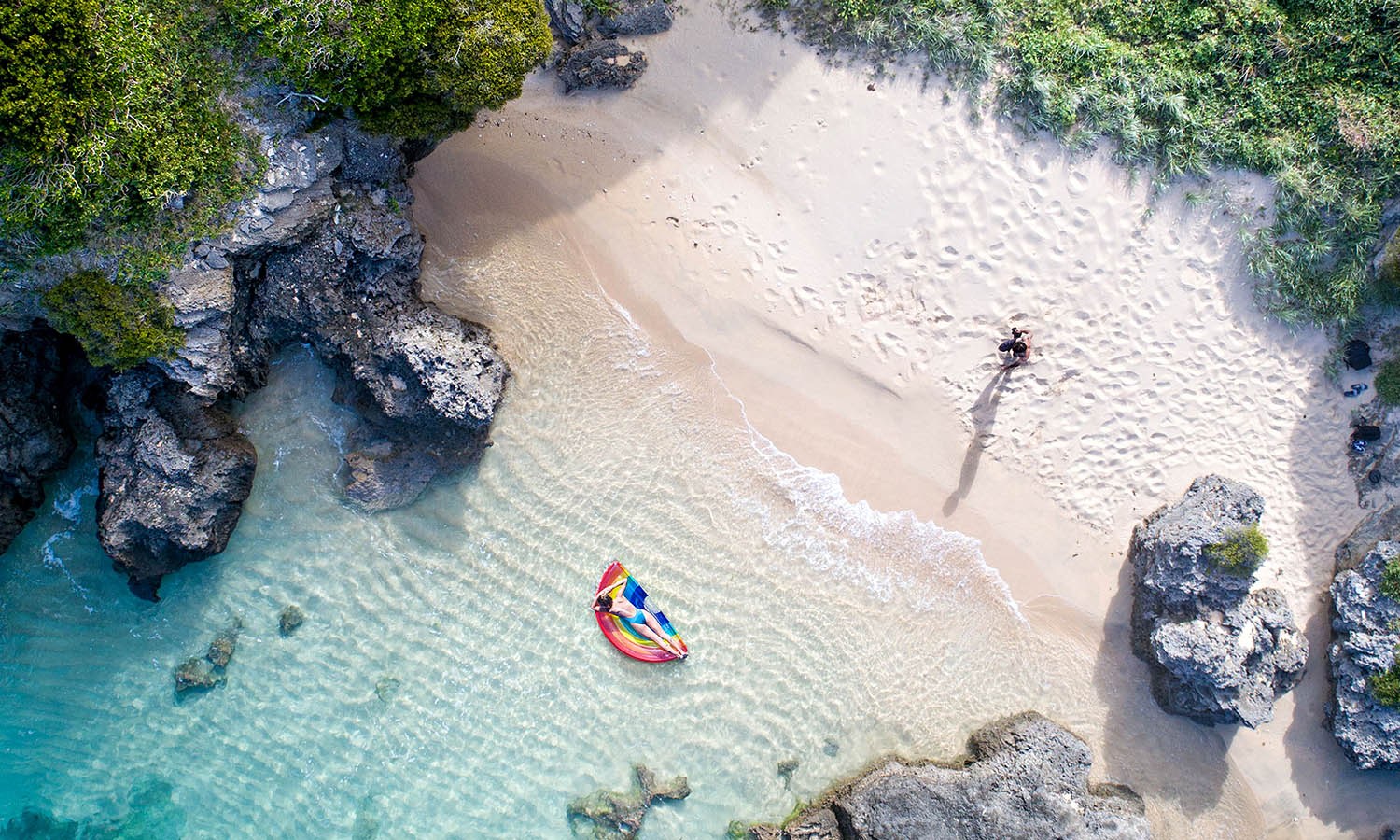

It’s one thing to encourage people to stay off their phones, and it’s quite another thing entirely to go to an island where there is no phone reception at all.
If it’s a digital detox you’re after, say no more fam. There’s also very little internet, meaning less dings and buzzing, and more feeling close to mother nature and your travelling companions. We’ll let you decide which relationship is more important to you.
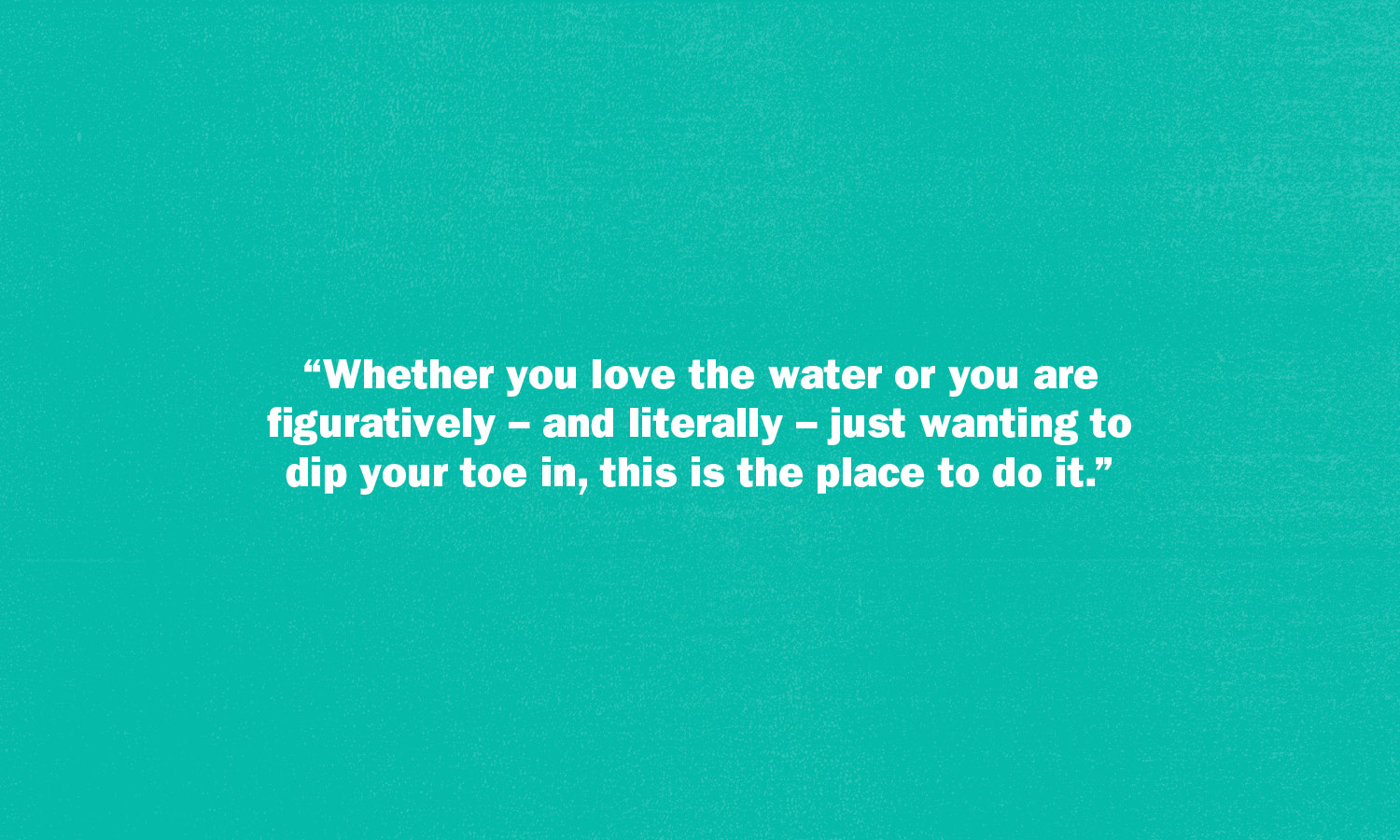

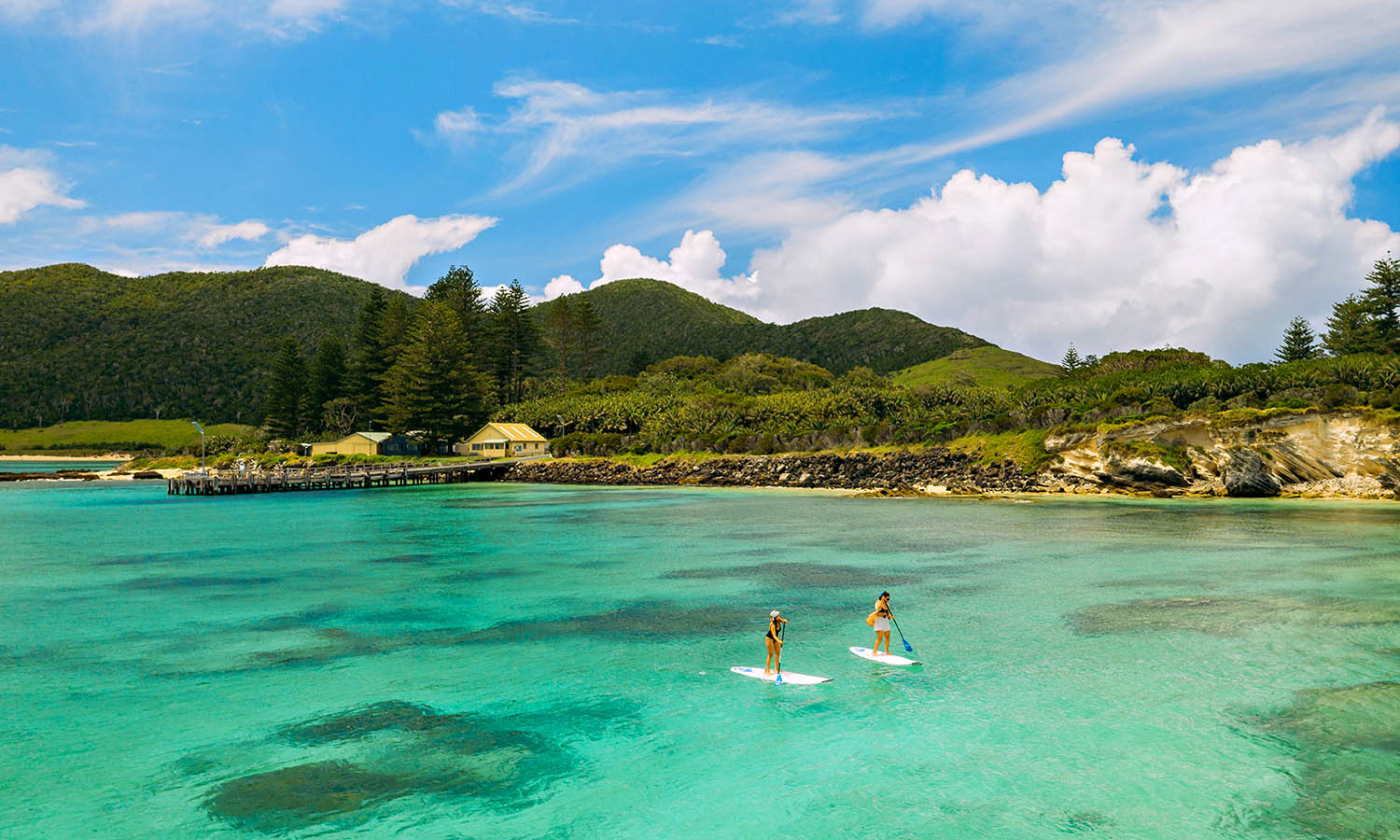

Whether you love the water or you are figuratively – and literally – just wanting to dip your toe in, this is the place to do it.
Experienced divers can tackle Balls Pyramid, a legendary diving spot home to the world’s largest sea stack, and the only recreational dive site where you can see Ballina angelfish. While the less experienced can dive or snorkel the reefs closer to shore. And it’s Australia, so there’s surf, obviously – Blinky’s Beach is a ripping spot for uncrowded waves.
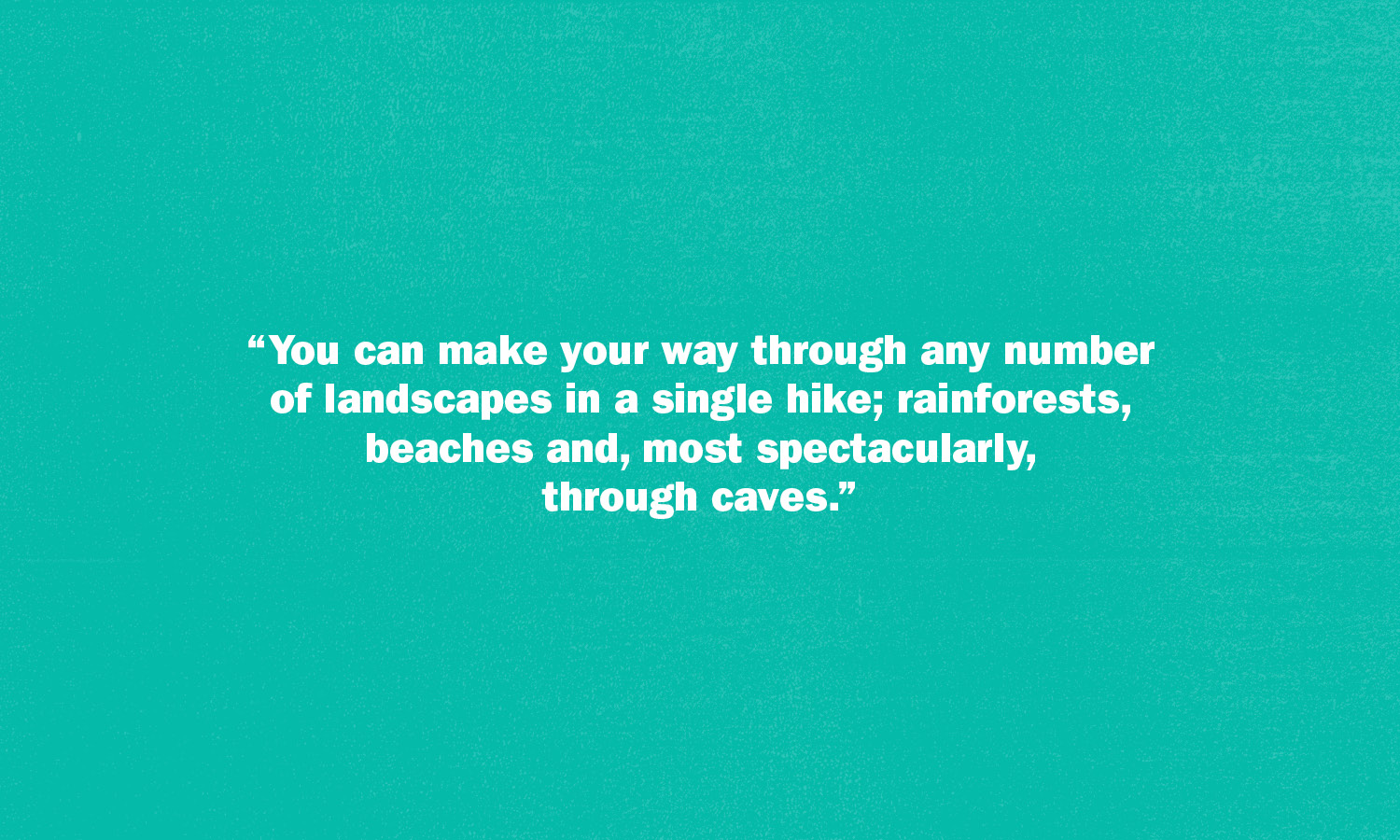

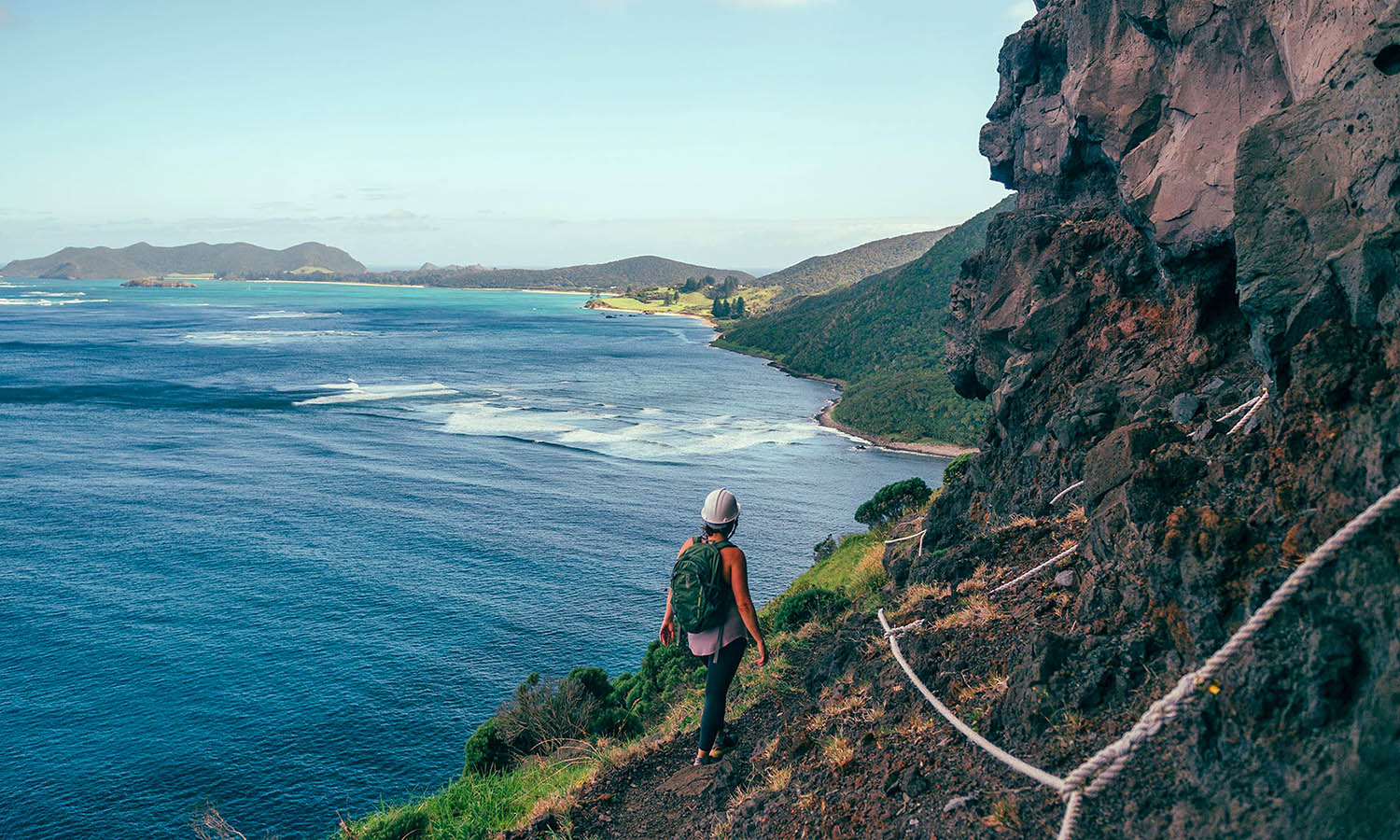

Lord Howe is a hiker’s mecca, a pilgrimage that must be made at least once in order to experience the extraordinary trails in and around this natural paradise.
Although only 2km wide and 11km long, you can make your way through any number of landscapes in a single hike—rainforests, beaches and, most spectacularly, through caves. Goat House Cave is arguably the best one: a steep climb that leads to a natural volcanic ledge overlooking Lord Howe’s settlement to one side, and Ball’s Pyramid on the other. If you’re into travelling by foot, it doesn’t get much better than this.
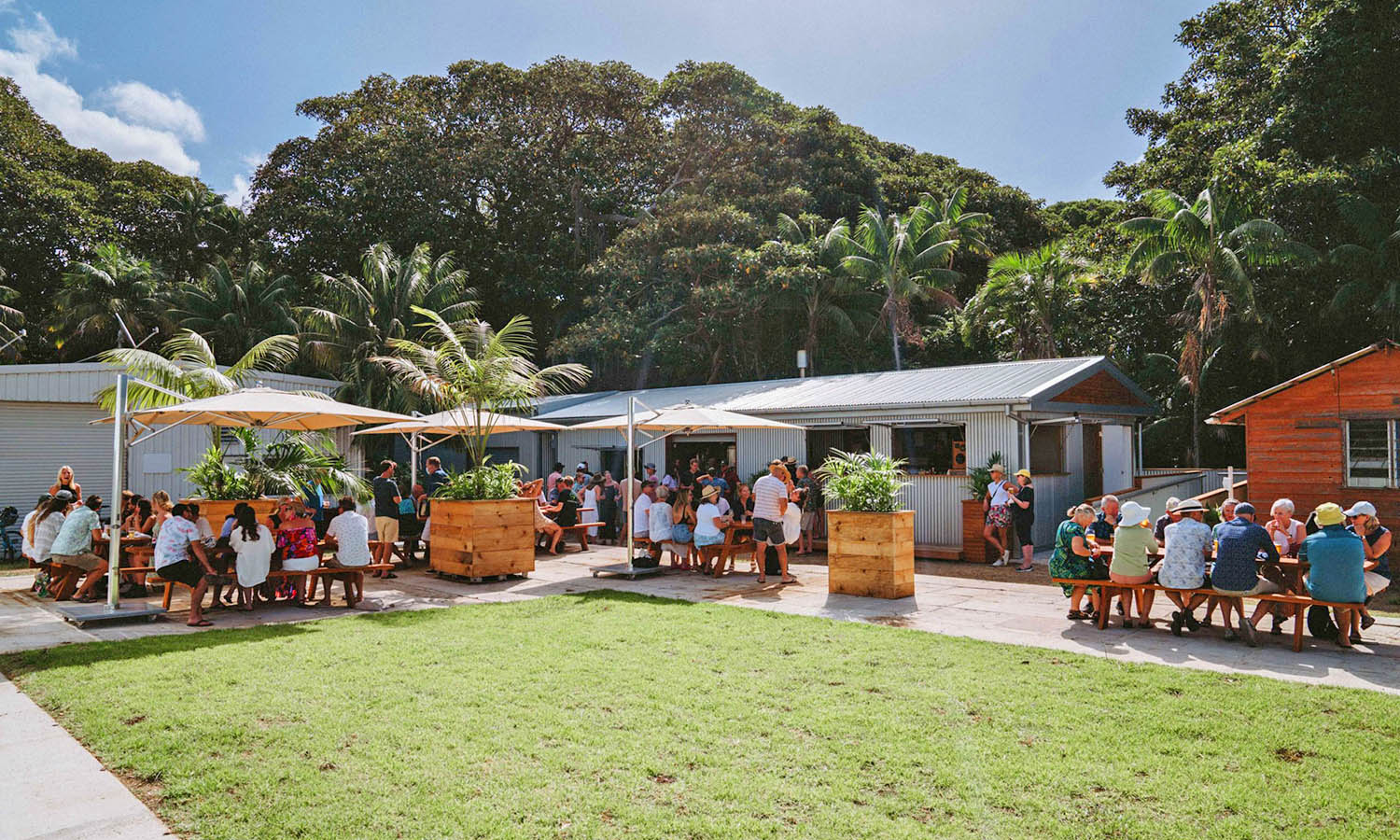

In fact, there’s a few breweries (don’t forget we’re still in Australia, after all).
The island overcomes obvious proximity challenges to create the unlikeliest of food and drink scenes, punctuated by fresh fish, and delicious beers.
Our pick is Lord Howe Island Brewery, who brew their own beer on the island in a picturesque little brewery, and offer a great place for a well-earned knockoff (only you’re knocking off a mammoth day of island exploring, instead of work).
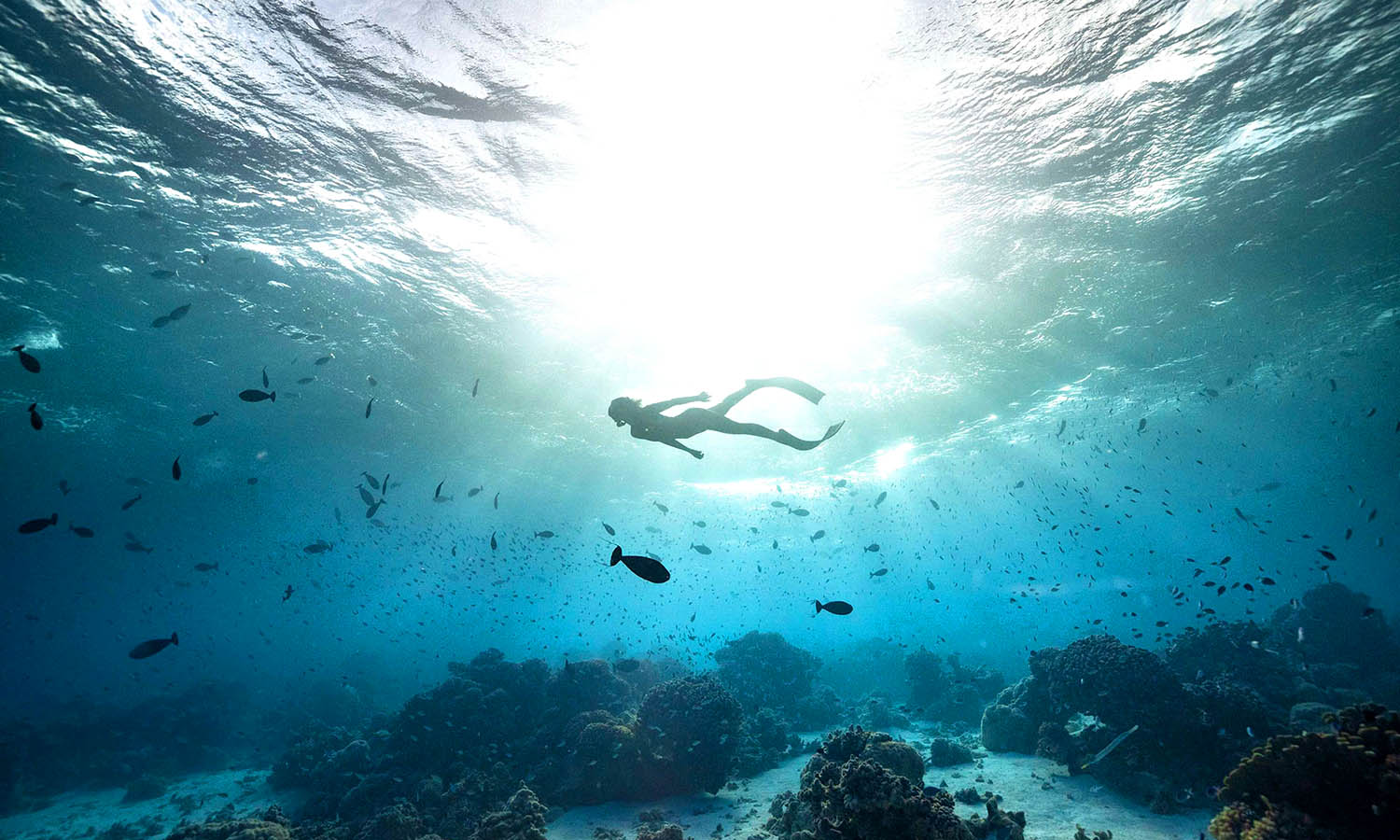

I’m surrounded by sharks. Hundreds of them.
From where I’m hovering on the reef wall of Fakarava’s North Passe, there’s a screen of sharks in front of me and a bunch more swimming through clouds of reef fish behind me. It’s magnificent.
Click play to watch
These are grey reef sharks—the friendly kind, not the 1975 Jaws kind—and they gather in a huge shiver (that’s what you call a group of sharks, FYI) in this channel every morning on the incoming tide. Along with half of the reef fish in the South Pacific, apparently.
Click play to watch
The number and the diversity of species here is just staggering. Not to mention the water clarity. My view in each direction is at least 50 metres, making this underwater coral landscape one of the most spectacular I’ve seen.
It’s also one of the most healthy in the South Pacific. Home to more species than you can imagine—from damsels and butterfly fish to Moorish idols, angel fish, big eyes and wrasse. There are huge schools of snapper, and thousands of unicorn fish darting like butterflies between sharks. The gang’s all here, in numbers.
To put it in perspective—on an average dive at our homegrown Great Barrier Reef you can expect to see one giant humphead wrasse (sometimes called Napoleon or Maori wrasse, or nicknamed something like ‘Barry’) at each popular dive site. Here, I can see at least six giant humphead wrasse, each measuring around a metre in length.
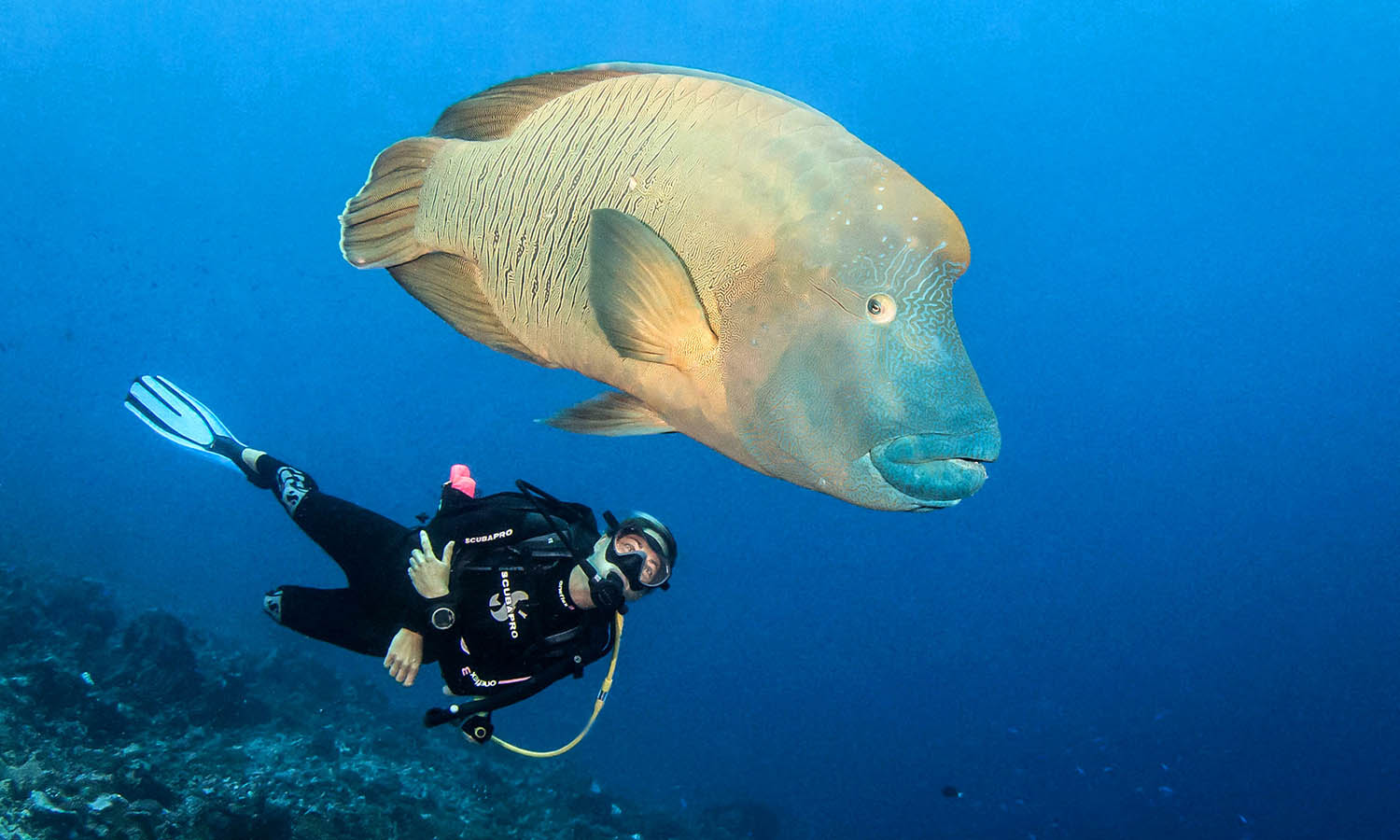

Click play to watch
On the Great Barrier Reef, you might see one or two odd-looking (and very shy) trumpet fish hiding under a table coral. Here, a dozen of them are darting around me. And then there’s the cardinal fish, a shy little red fish with large eyes that are usually found hiding in groups of 10 or 12 under overhangs or in small caves. Here, they congregate in the thousands, forming a thick red blanket over the reef.
In a gully called Ali Baba, there are so many cardinal fish that I can barely see my dive dive buddy through the school. Every now and then a shark will part the red sea, cruising through, before it closes again in its wake.
After watching this spectacle for a while, my buddy and I give in to the incoming current and fly through the gullies at high speed. When we surface, we’re already impatient to take the plunge again.
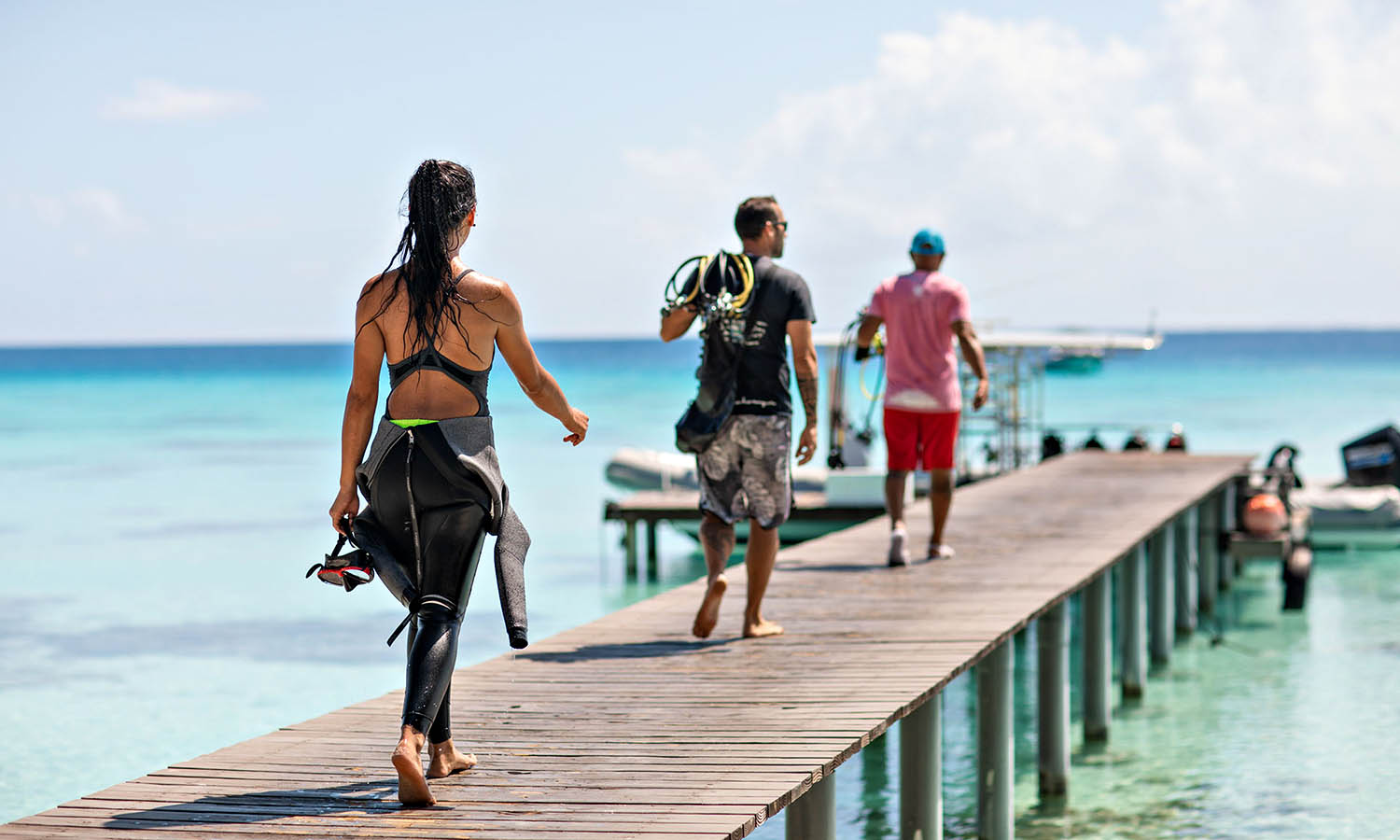

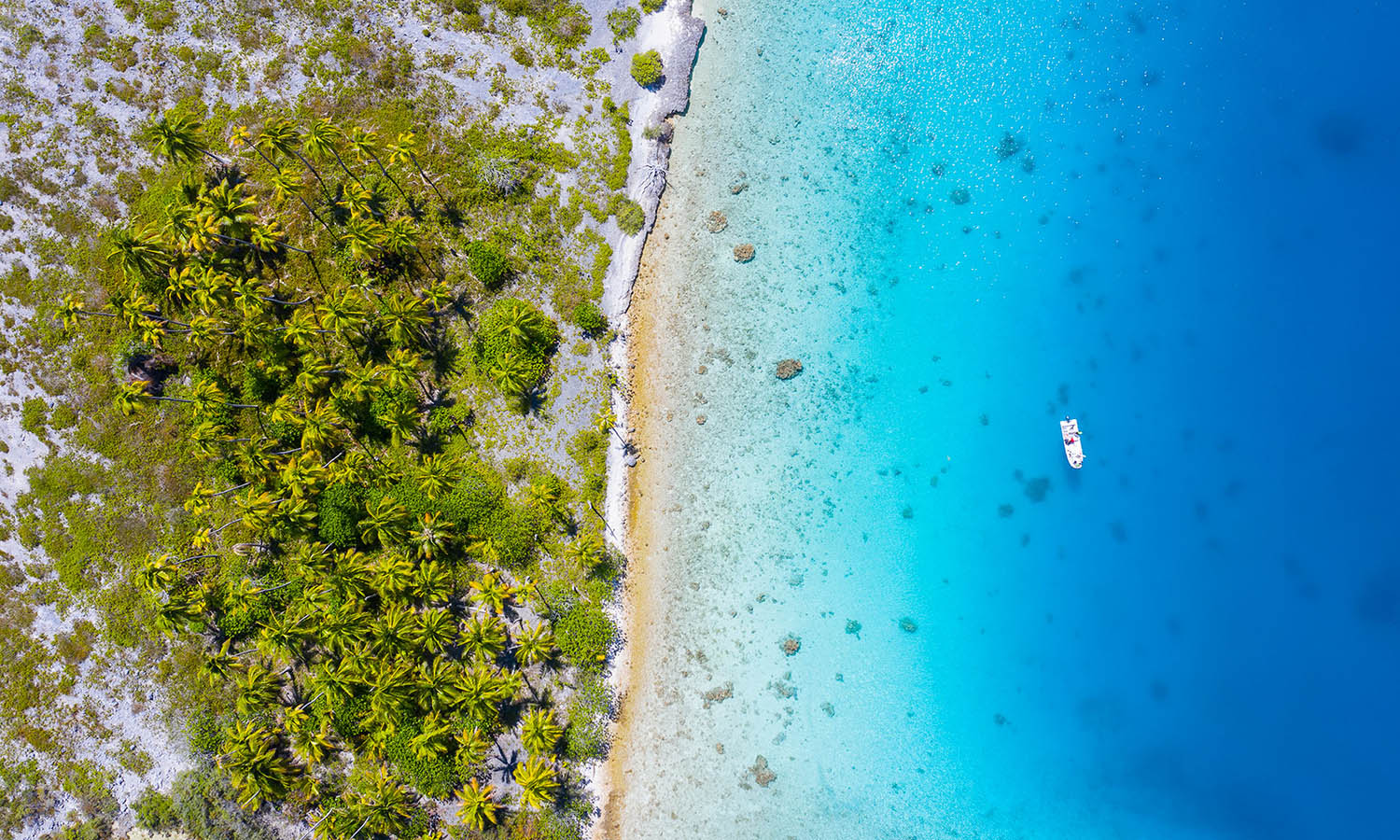

This is just one of several once-in-a-lifetime marine encounters I’ve been lucky enough to experience while here in French Polynesia. I’ve spent most of my time on Fakarava and Rangiroa, two islands in the Tuamotu Archipelago, roughly an hour’s flight from the main island of Tahiti.
French Polynesia, also known as the Islands of Tahiti, has long held its reputation for being a luxurious, romantic destination. And it’s not hard to see why, with its picture-perfect bungalows poised over crystal clear waters.
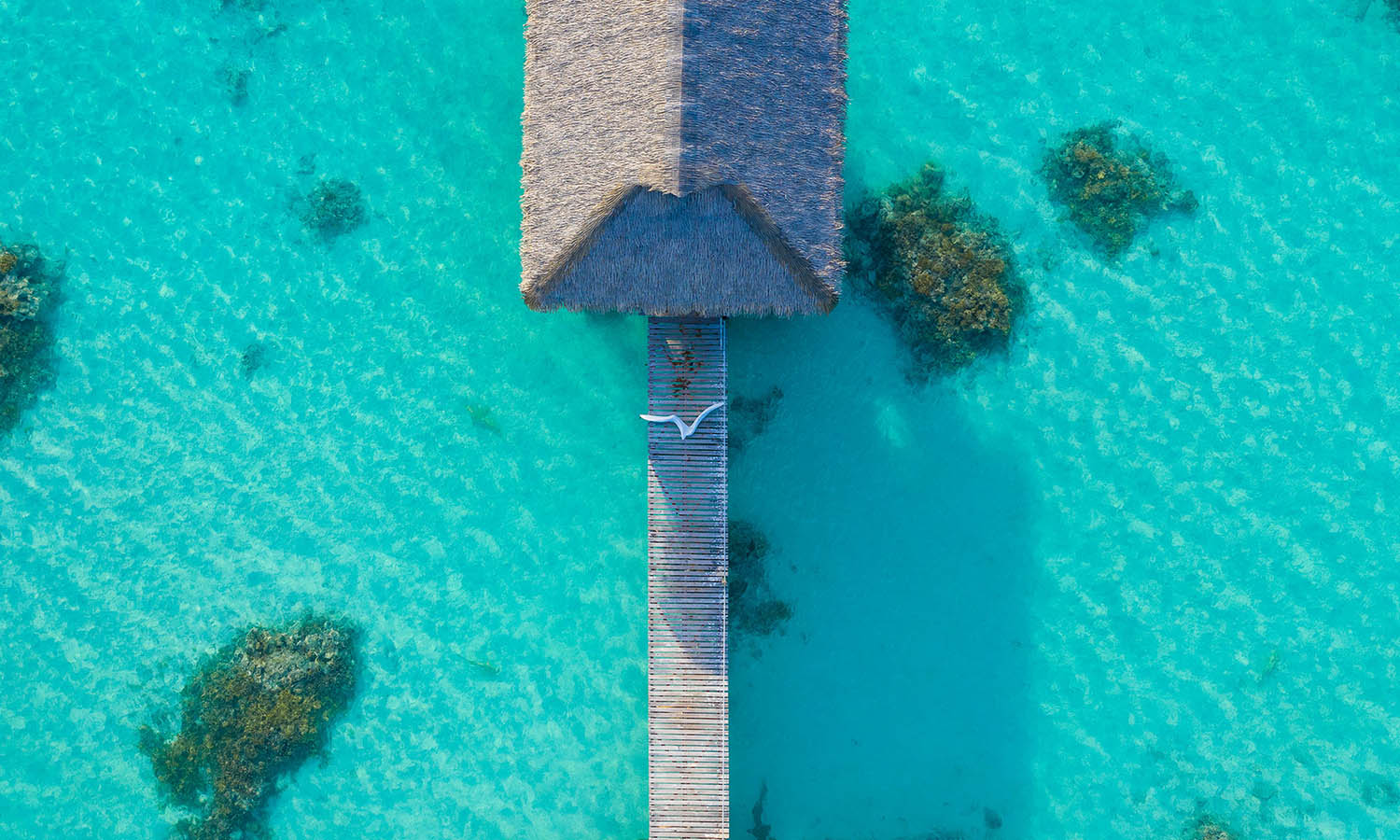

But there’s another, wilder side to these islands. Beneath the waves, you can find some of the most exciting marine encounters in the world. Topside, you can by-pass the 5-Star bungalows for a more down-to-earth style holiday. A mix of small resorts, pensions and home stays offer communal tables and home-cooked meals; a place to eat and share your diving adventures with the other guests.
My first leap into French Polynesia’s big blue is on the coral atoll of Rangiroa, a thin circle of islands surrounding an enormous lagoon. In the morning we dive on the incoming current, drifting slowly through Tiputa Passe, weaving through clouds of purple anthias, schools of butterfly fish, snapper, cardinal fish and humphead wrasse. Along the way we spy white tip and black tip reef sharks, grey reef sharks and—below us at depth—two great hammerhead sharks. An exhilarating sight.
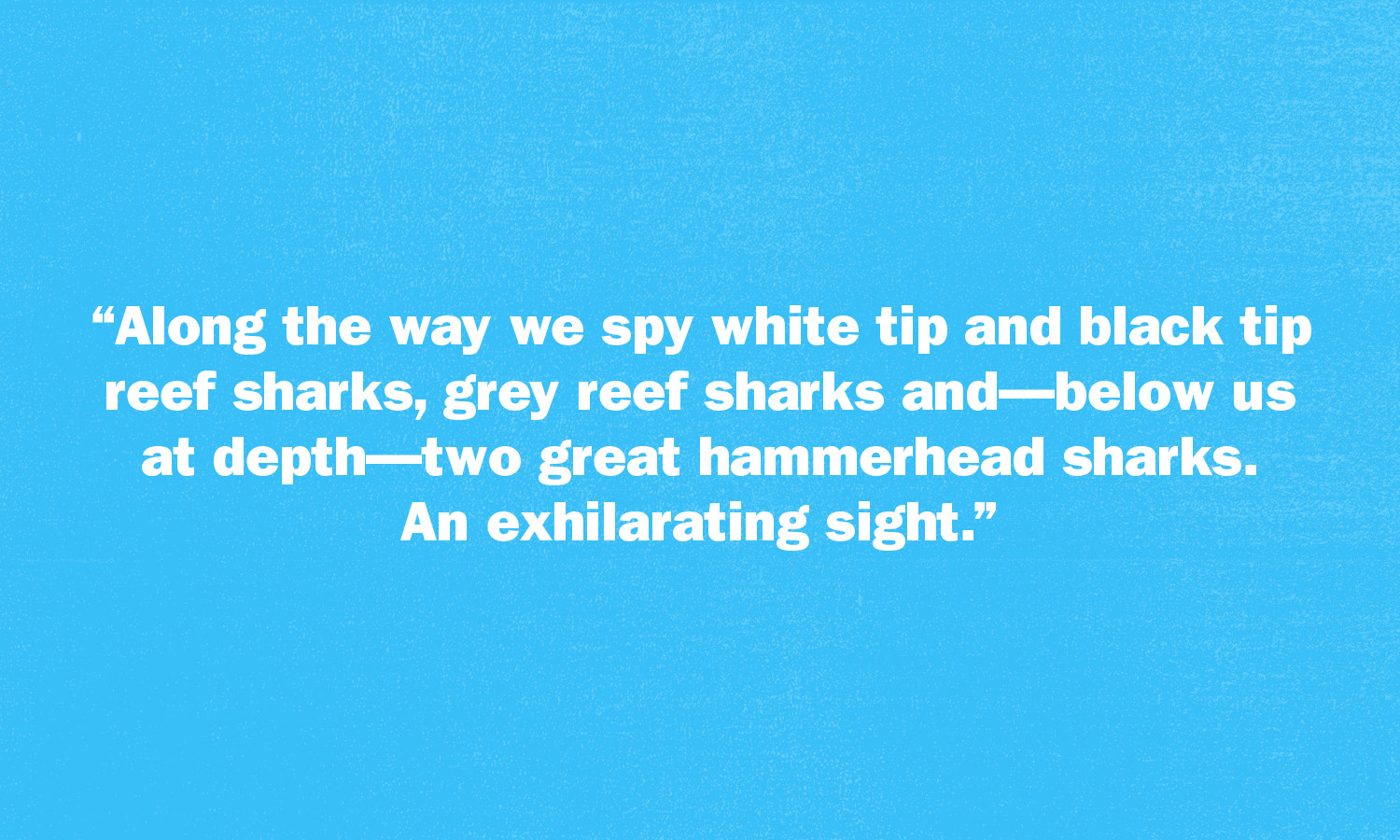

Click play to watch
In the afternoon, we spend time on the outer reef. As the tide goes out, waves form in the channel, making it a bumpy ride for us but great fun for the bottlenose dolphins who leap through the surf. The dolphins follow us for most of the dive. They circle us, dance with us and, as we’re distracted by some colourful wonder on the reef itself, we’re buzzed by them several times.
Before the infamous shark dive at Fakarava, I take a trip out to the atoll’s famous Blue Lagoon, situated on the far side of Rangiroa’s vast lagoon. We stop for a snorkel at the (aptly named) Aquarium, then paddle in the palm-fringed turquoise pool. Soon, we’re joined by a group of baby black tip reef sharks who circle us in their dozens. The memorable marine encounters just keep coming.
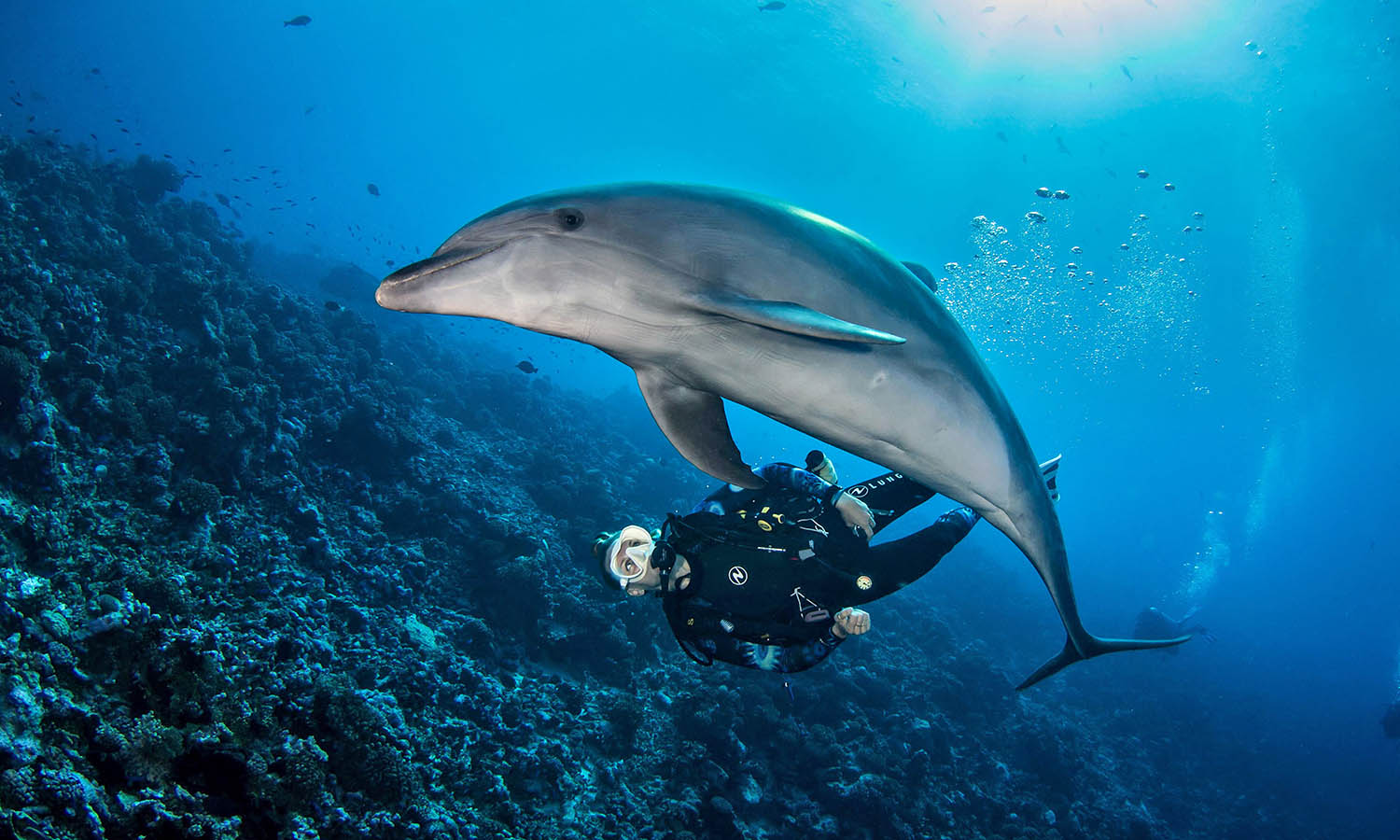

My final dive on Fakarava provides yet another. As we head out, I ask if we’re likely to see any sharks on the afternoon’s dive. The answer is “no, but maybe some mantas”.
There’s little to no current on the outer reef, but the water is alive with schools of reef fish. There are even a few grey reef sharks (much to our surprise) and then—the marine pièce de résistance—we see the two manta rays.
As they approach, we flatten ourselves on the reef top to watch. They dance and swirl above us for 10 minutes or more, coming so close I have to duck to avoid contact. It’s a fitting end to a magical week of marine encounters. Now I just need to figure out how to move here permanently.
The world’s most far out swimming pools, in the most far out places.
Click play to watch
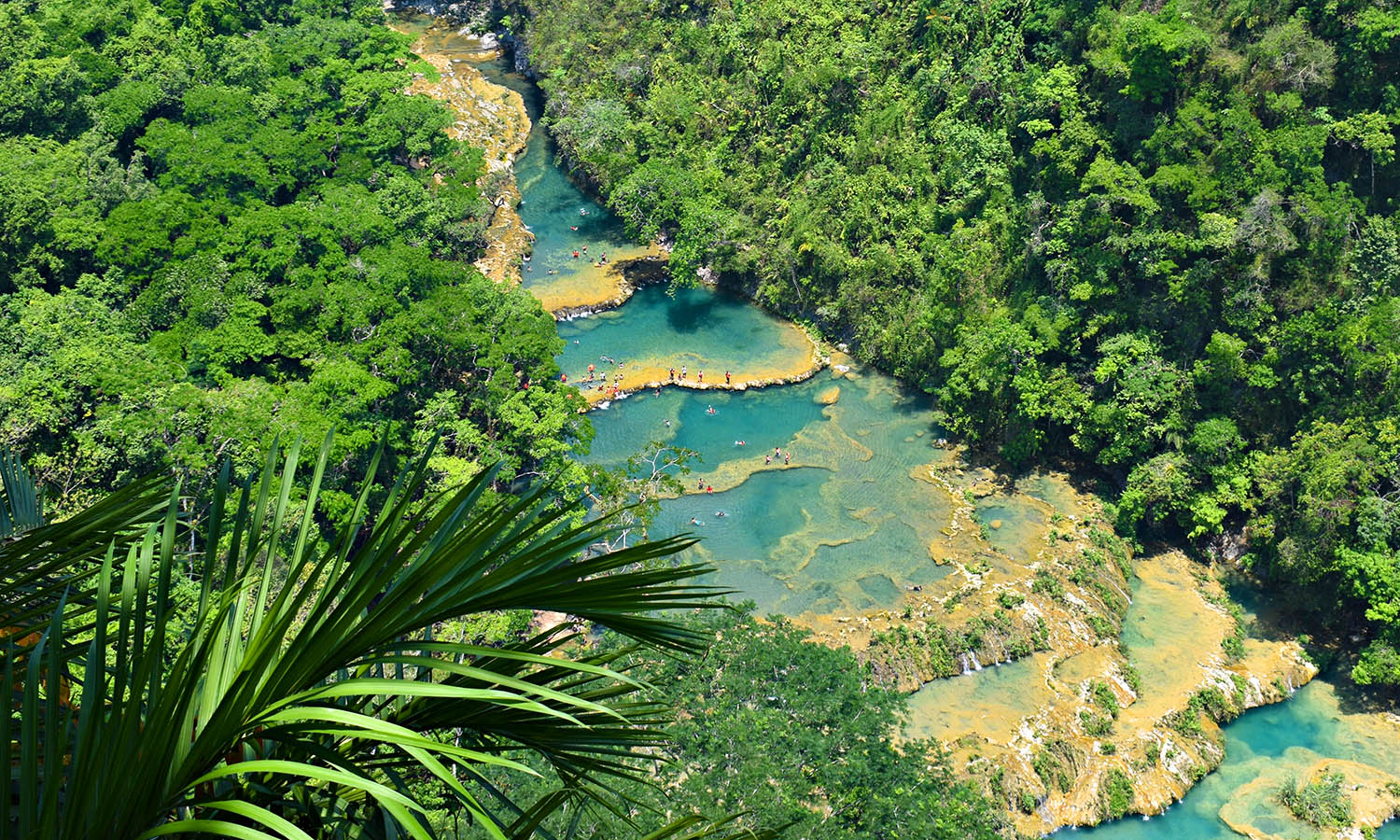

GUATEMALA
We all know Mexico has cenotes and Turkey has Pammukale—but have you heard of the natural terraced swimming pools hiding out in the Guatemalan jungle? NOW YOU HAVE.


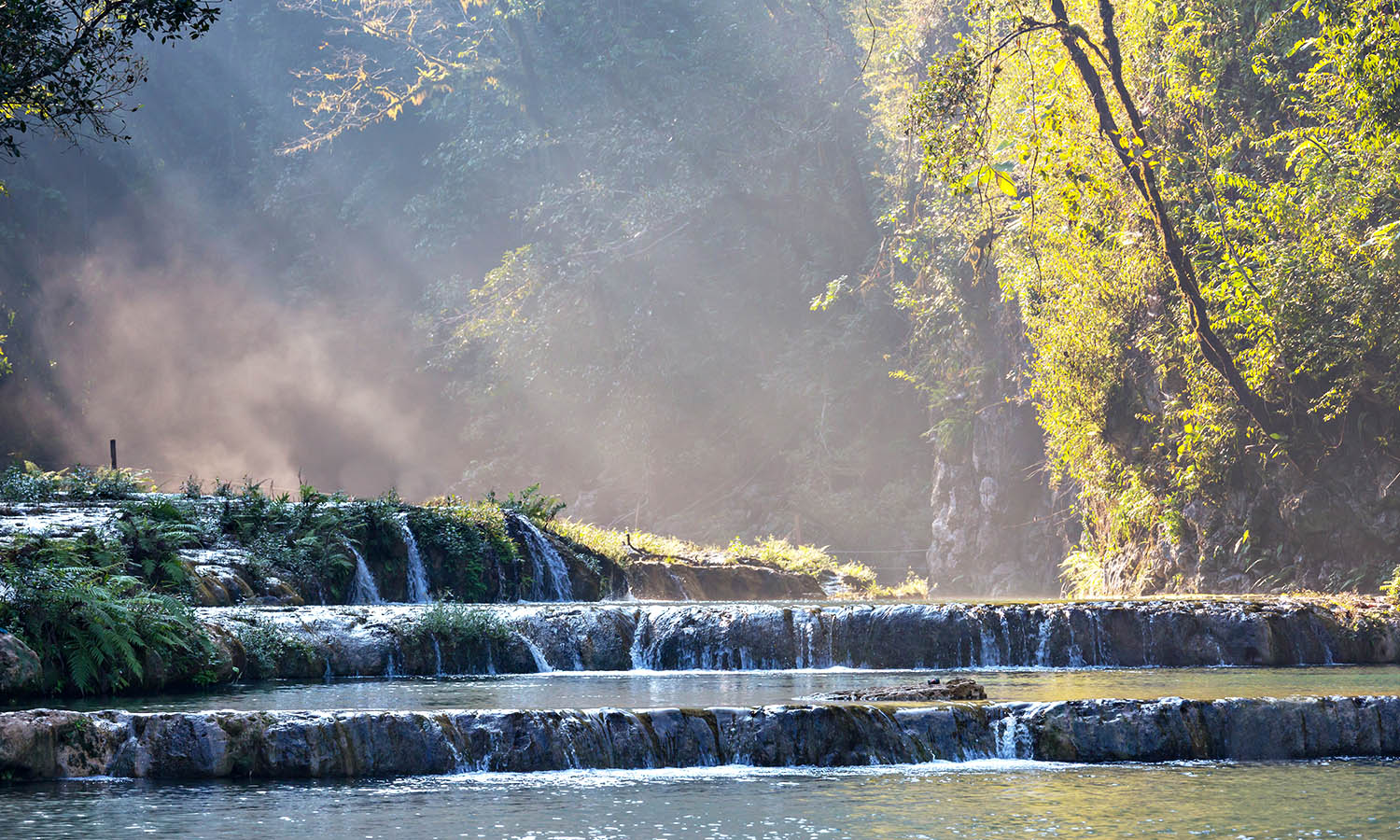



Semuc Champey isn’t the best kept secret, but it’s worth a dip nonetheless. A series of limestone bridges and caves make for a fairytale-like river adventure, perfect for fresh-water paddling, rock jumping and even night-time cave swimming if you’re really brave. Vamos!
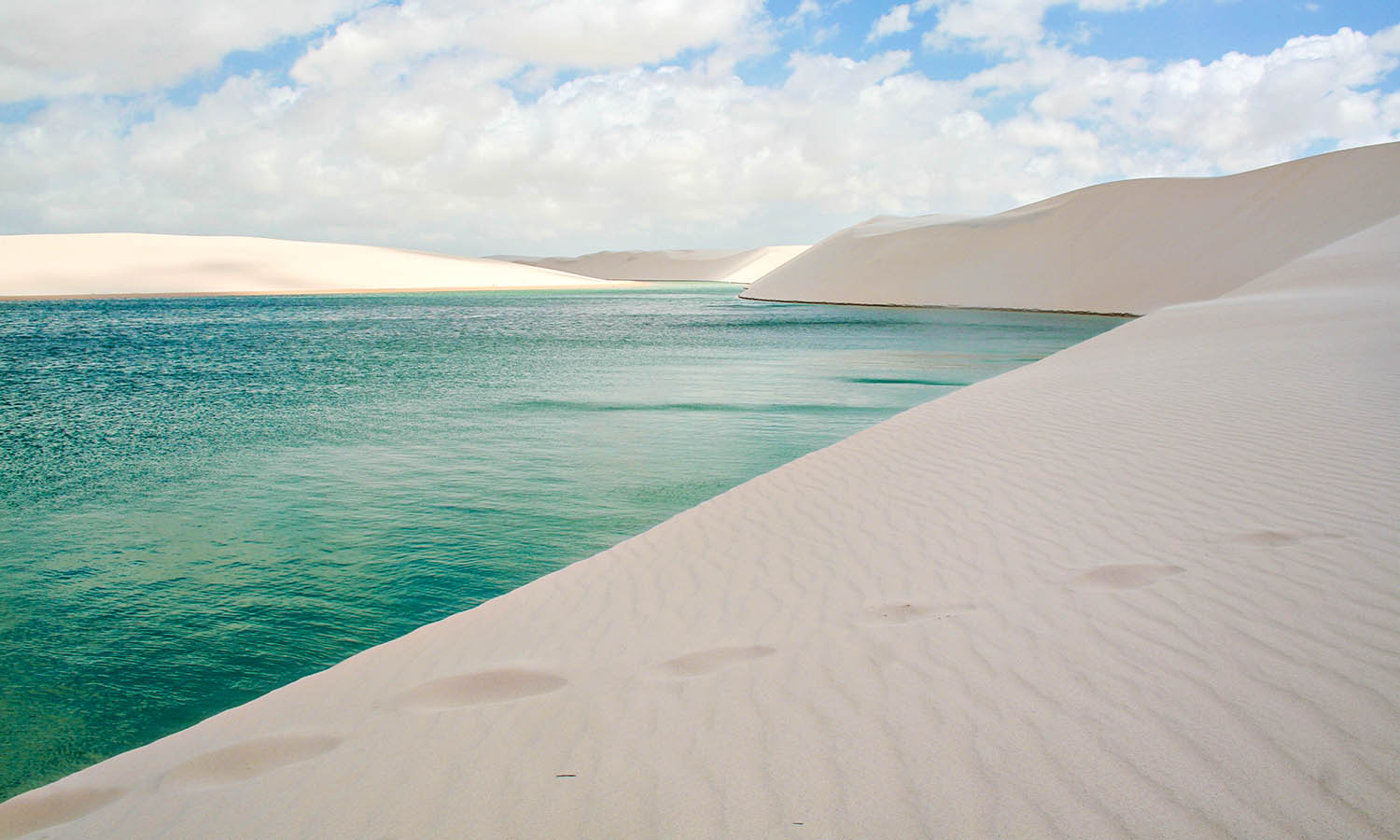

NATIONAL PARK, BRAZIL
For the majority of the year, Lençóis Maranhenses National Park is a spectacular sandscape.
Those big dunes, blue skies kind of vibes. And then the rainy season hits and it gets… even more spectacular! Duh. You see, the valleys between these dunes fill up with rainwater to create an oasis of cerulean lagoons—some of them big enough to swim in. If you want to dune dive, make sure to visit the south of Brazil between January and June, and BYO togs.
Click play to watch
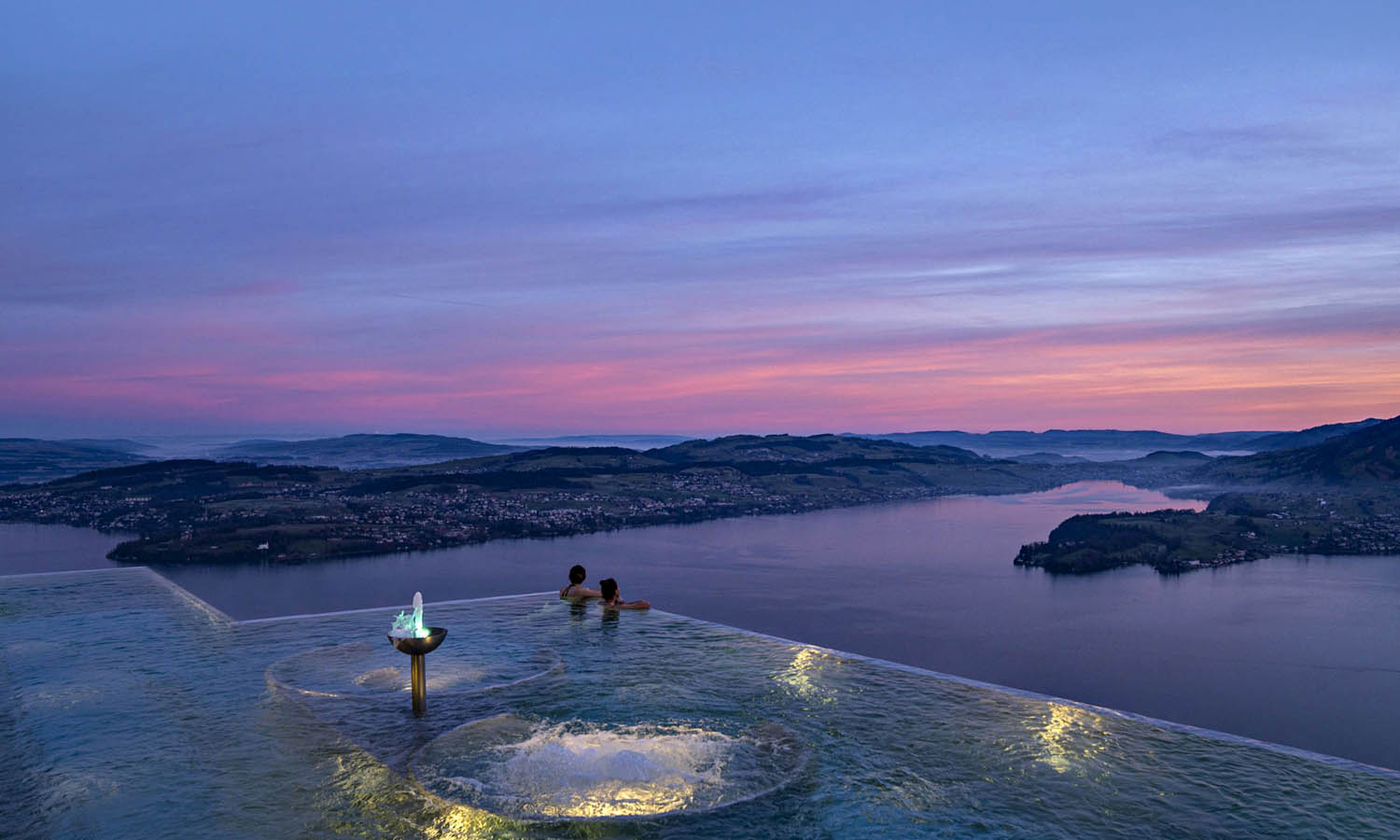

SWITZERLAND
Not to be mistaken for the humble Birkenstock (although a similar piece of genius from the Swiss, if you ask us).
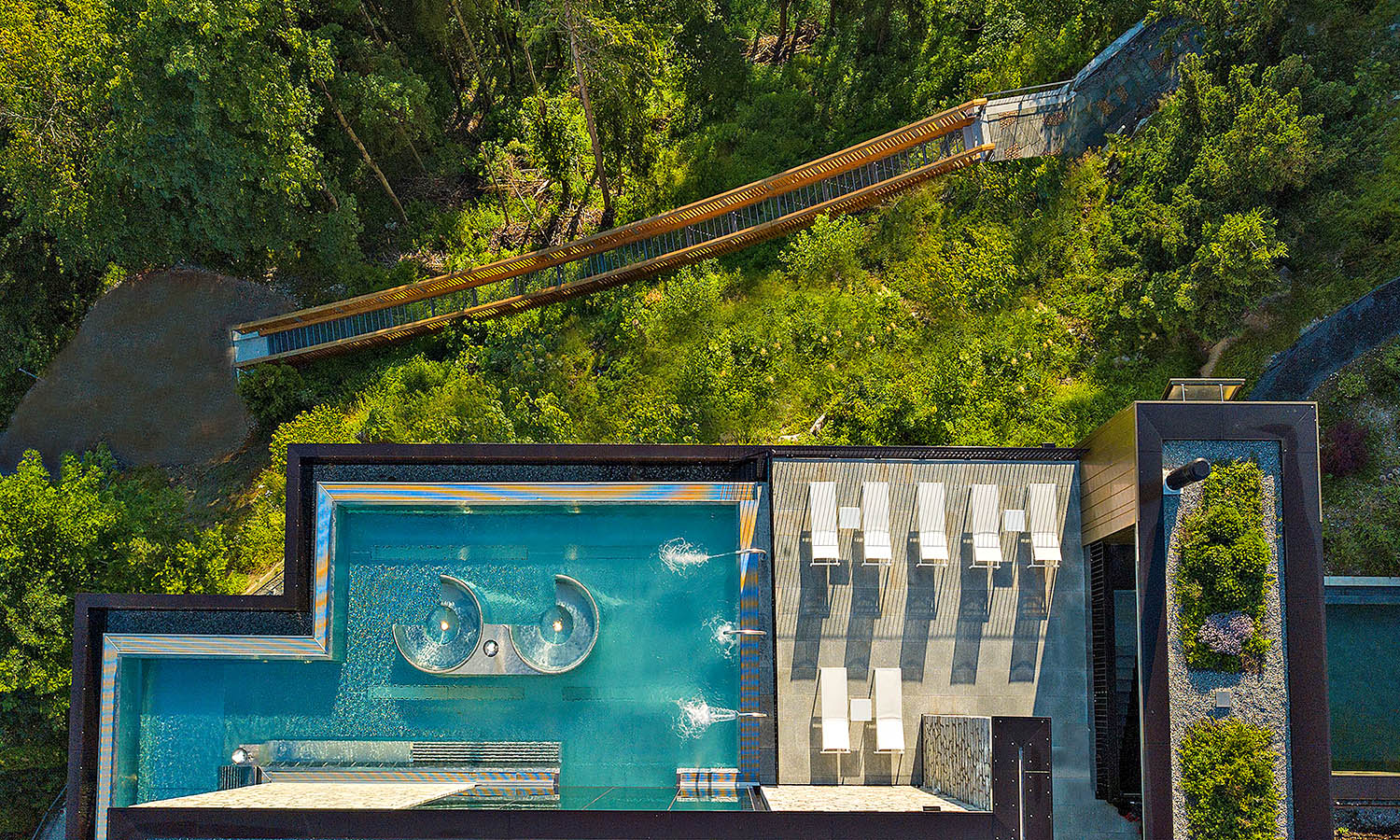

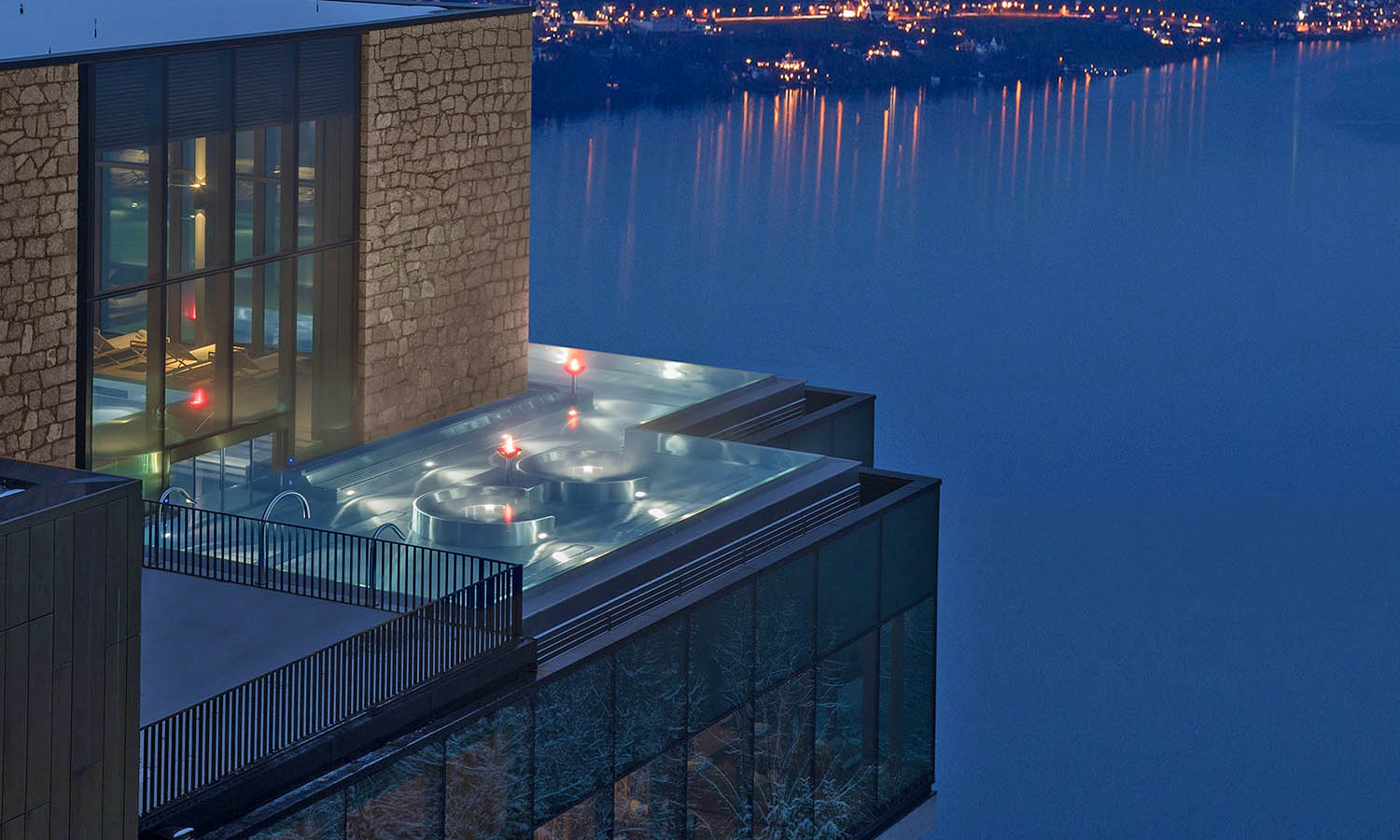

Spanning 60-acres of lush-as-hell central Switzerland, the luxurious glass pool in this luxurious complex has a luxurious view to Lake Lucerne. LUX-UR-IOUS. Not to mention, there’s a spa IN the pool. So you can swim in the depths of winter—with a snow-capped Swiss Alps vista to treat your eyeballs. Hurry up and get on that funicular.
Click play to watch
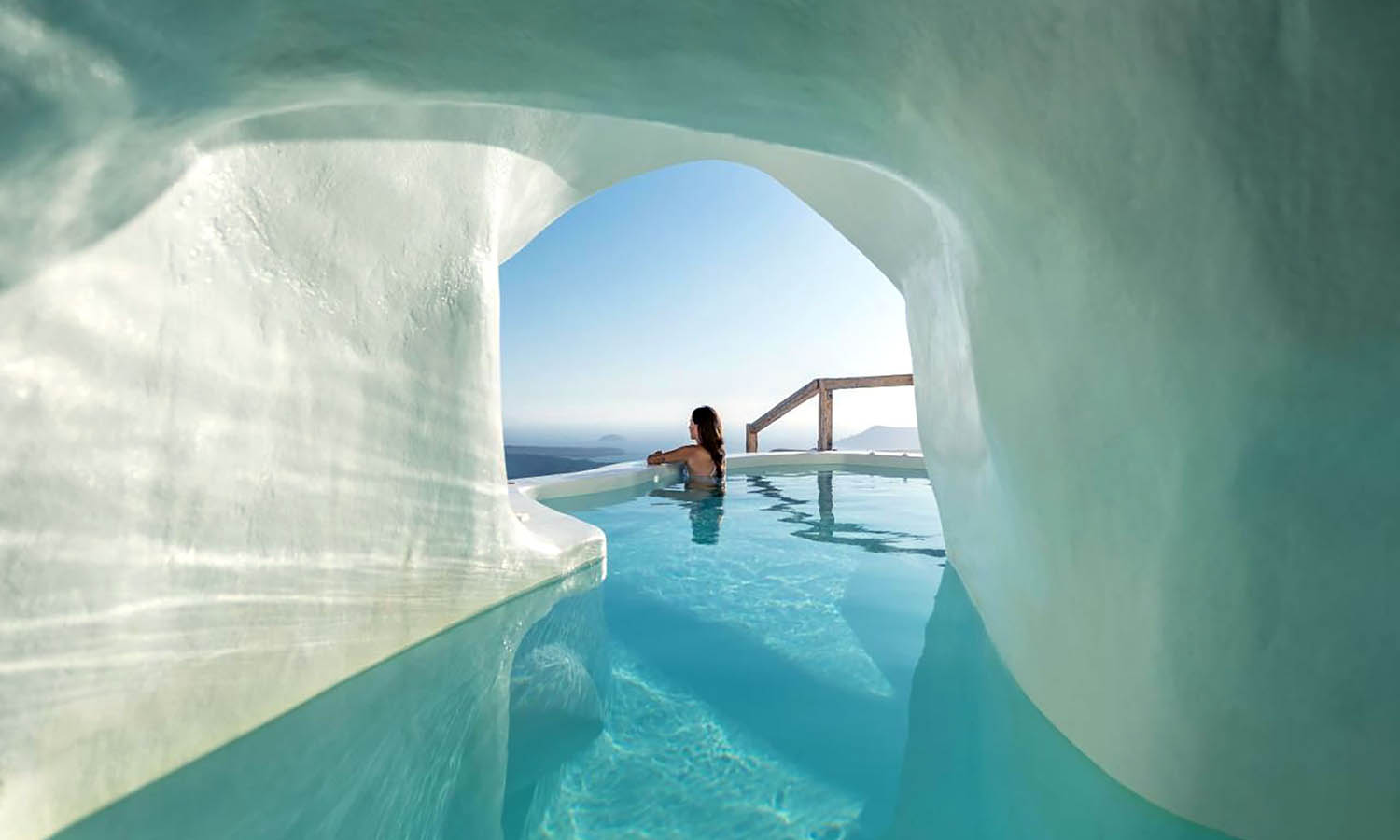

GREECE
Caves, but make them, like, Euro bougie.
There are a bunch of hotels on Santorini and Mykonos that have IG-worthy whitewashed pools. Some swim up to a private bar, some—quite literally—swim up to your bedroom. Add on a blindingly beautiful, panoramic view to the Aegean (and more haloumi than your body can reasonably handle) and you’ve got yourself the dream holiday.
Click play to watch
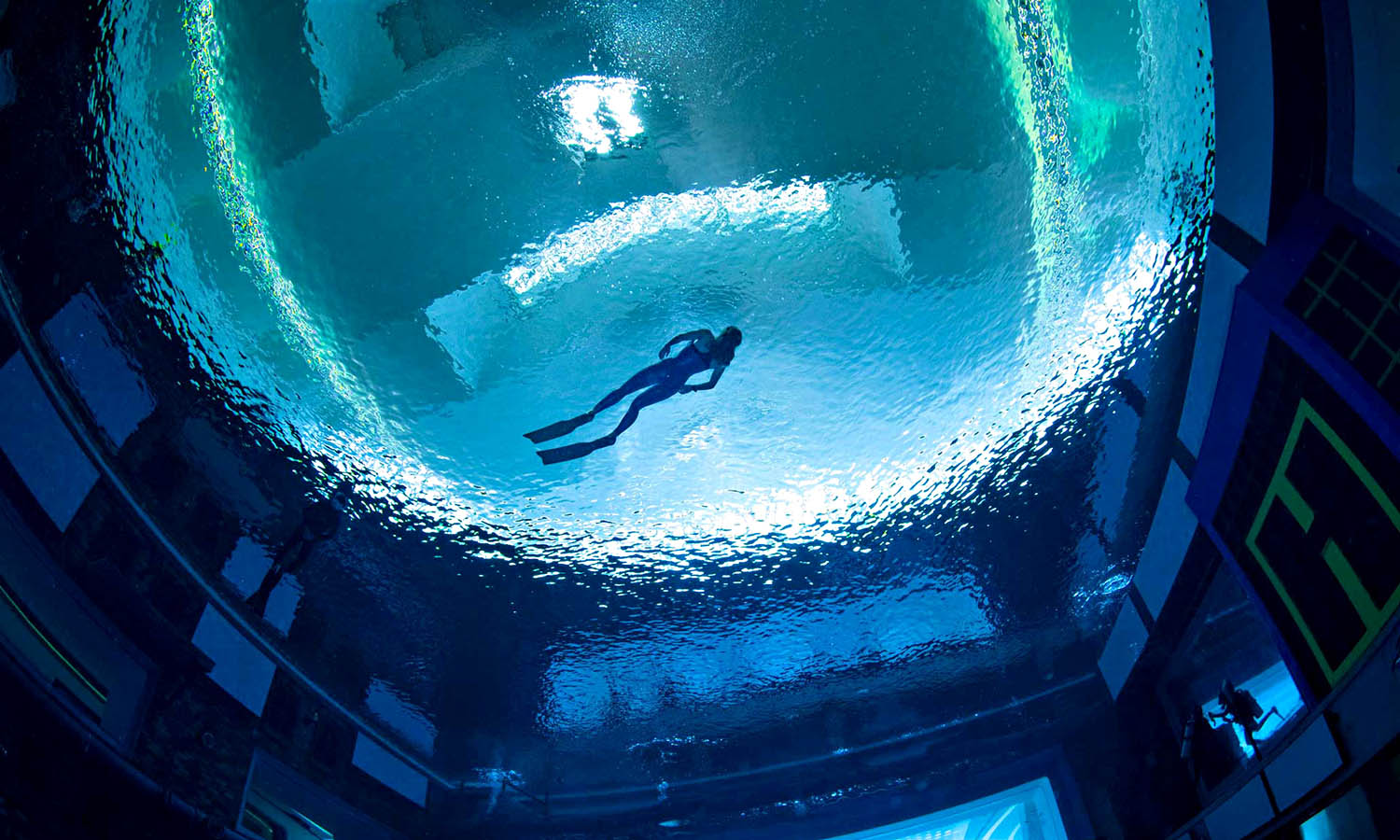

DUBAI
Not content with having the world’s tallest skyscraper and the world’s biggest shopping centre, Dubai also has the world’s deepest dive pool.
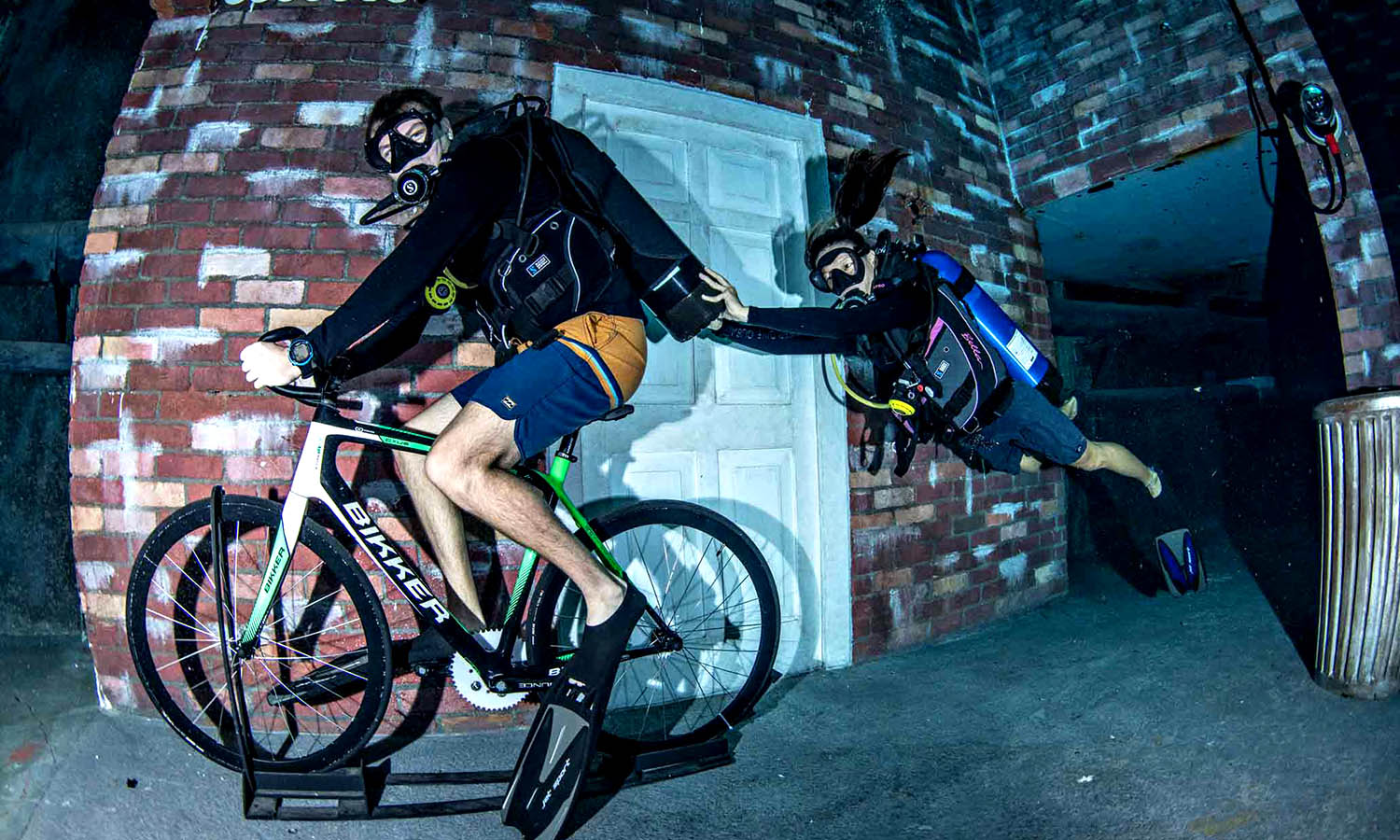



And it’s, with no trace of irony, also inside a mall. Classic Dubai. This watery behemoth is 60-metres deep, has the volume of six Olympic-sized swimming pools and includes an underwater mini-arcade. The whole pool is set up like an abandoned underwater city building, allowing divers to explore a sunken apartment building. Less paddling and more PADI to be had here.
Click play to watch
Click play to watch


SOUTH KOREA
Move over RuPaul, Hurricane Kimchi has taken to the stage. Inspired by Korea’s regional queer festivals, Heezy Yang (AKA Hurricane Kimchi) founded the annual Seoul Drag Parade back in 2018. And it’s been a showstopper ever since.
Click play to watch
While it’s a totally inclusive LGBTQIA+ event, this parade focuses on—you guessed it—the art of drag. In a blog post, Yang says they had several dreams for the parade: firstly, they wanted to “bring drag into the daylight”; secondly, they wanted to include and display all types of drag, not just the “skinny and pretty drag queens who are cis-gendered male Korean nationals”; and lastly, to give kids access to the drag-dom. AMAZING. Go off, Seoul. The inaugural parade welcomed over 1,000 artists and allies, and this year’s party is set to be a blow out. BYO best wig, and get those stilettos outta the closet.
Click to FILL YOUR SEOULS


USA
Sure, a fun run isn’t exactly everyone’s idea of a fun time (despite the name). BUT! What about running five kilometres through the streets of Denver during PrideFest?
Click play to watch
Now that’s a vibe. A fun, gay vibe. Still not sold? Spectators are welcome. Maybe even bring a giant ’80s boom box and inspire the runners with a little Kylie or Cher, or >insert-other-incredible-party-anthem-icon-here<. Whether you’re a member of the queer community or an ally, everyone is encouraged to “run, walk, roll or sashay” at Civic Centre Park (where the race starts and ends). You should also stick around for the other Pride festivities, like the annual Dyke March or the beer bust at the Denver Wrangler.


Click to RUN LIKE YOUR MASCARA
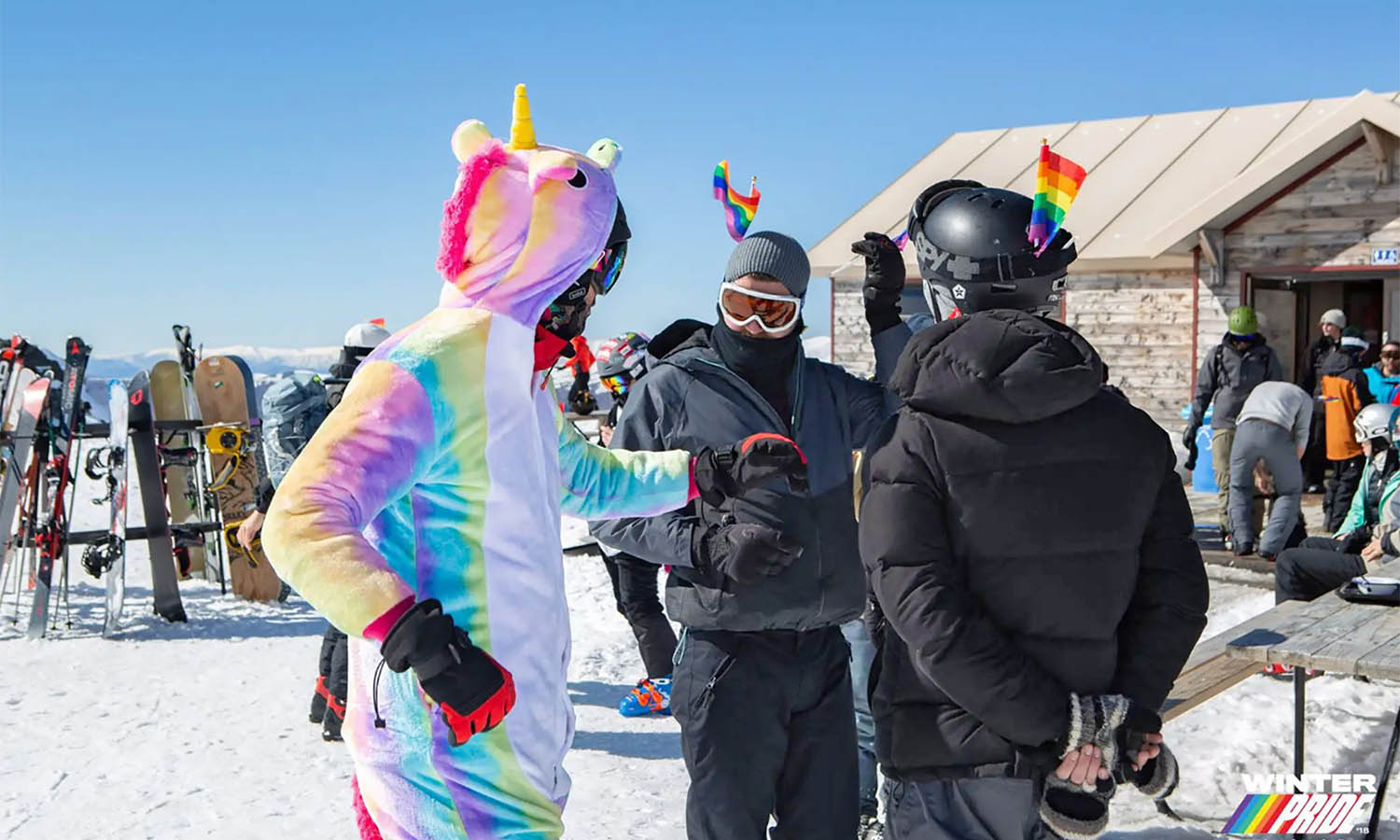

NEW ZEALAND
Think you can only be Pride-ful in the summertime? Guess again, amigos.
New Zealand has gone ahead and forged a new queer path with its very own Winter Pride week that’s all about skiing, slaying and supporting the LGBTQIA+ community. There’s gonna be over 24 parties, eight on-mountain days and a bunch of delightful Kiwi accents. Hosted in Queenstown, so you know the pow is going to be fresh, the chance of bluebirds high and the après-ski vibes on point. Lots of aroha (love) from our mates down south.
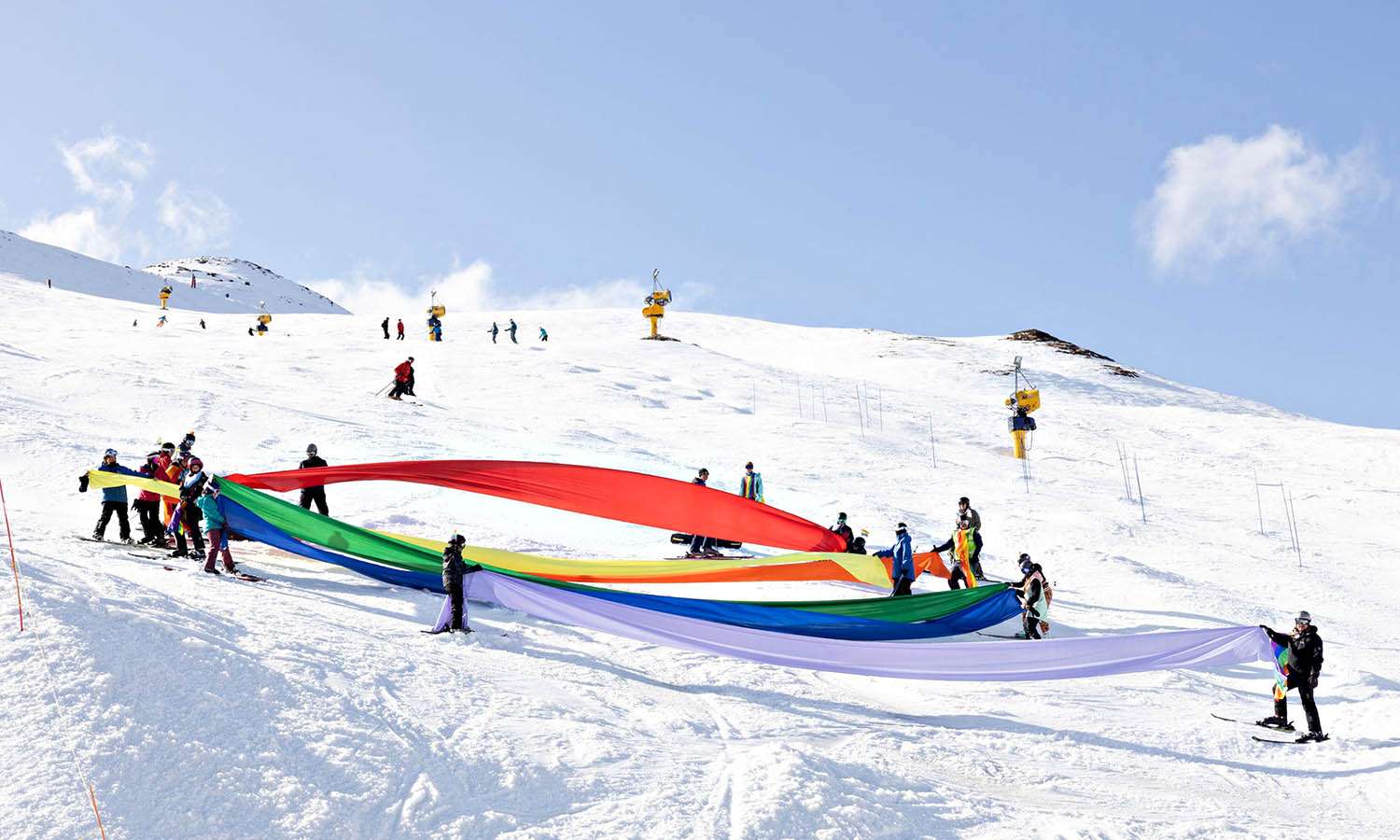

Click to FOLLOW THE RAIN-BRO, AY


AUSTRALIA
Never seen The Adventures of Priscilla: Queen of the Desert? You now have official get lost-prescribed homework. Widely considered an Australian cinematic masterpiece, the 1994 film centres on two drag queens and a transgender woman travelling from Sydney to Alice Springs through the outback. Hugo Weaving! Guy Pearce! A tour bus named Priscilla!
Click play to watch
Fast forward to 2023 and Alice Springs now has its very own Pride Week, aptly named fabALICE, that extends Mardi Gras and WorldPride celebrations to the Red Centre.
Super family-friendly and packed with all the glitter that you’d expect from a Priscilla-inspired Pride event, you can choose from partying in Todd Mall, heading to a lip sync battle hosted by Marzi Panne and Miss Elleanous, drag queen bingo or even a The Sound of Music sing-a-long.
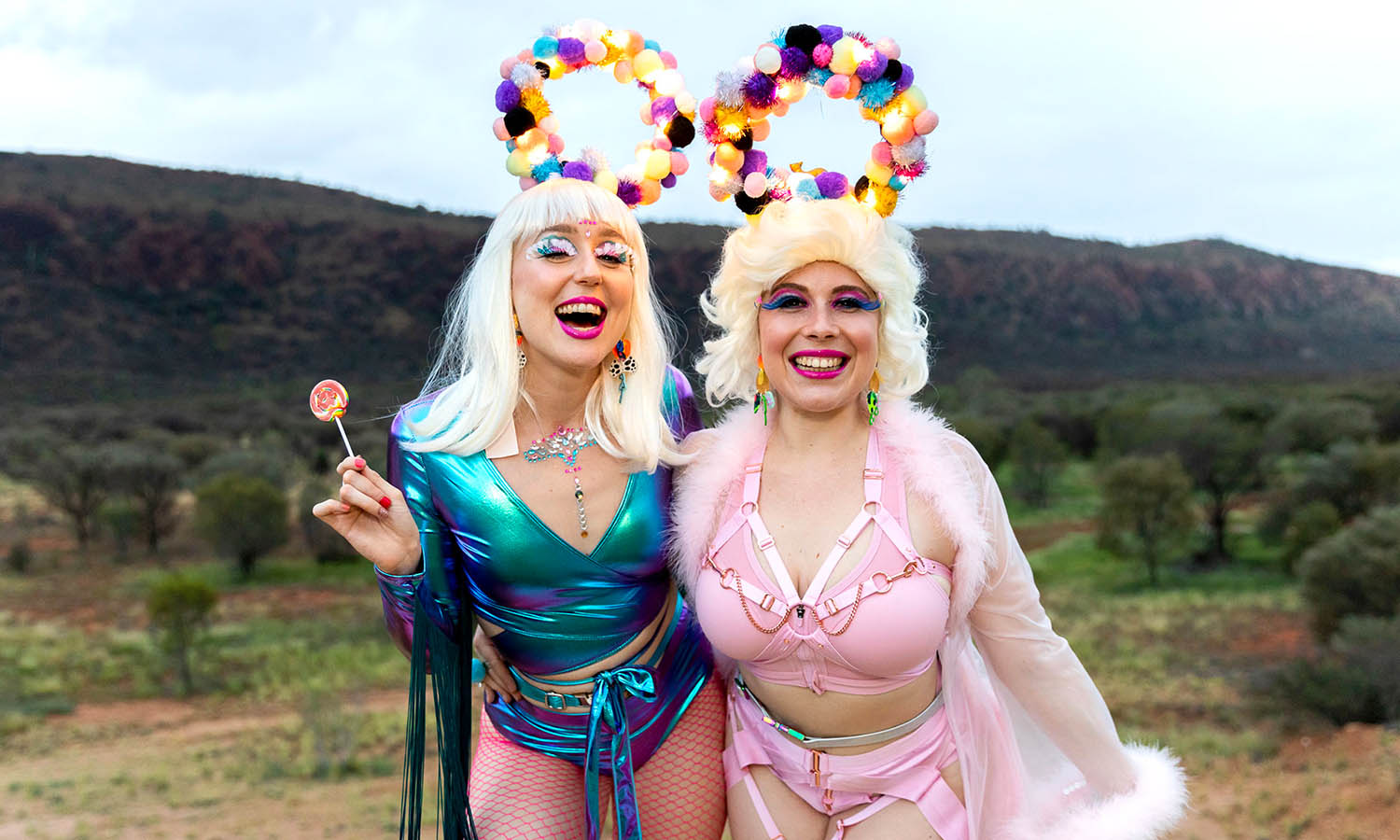

Click to GET FROCKED & ROCKED
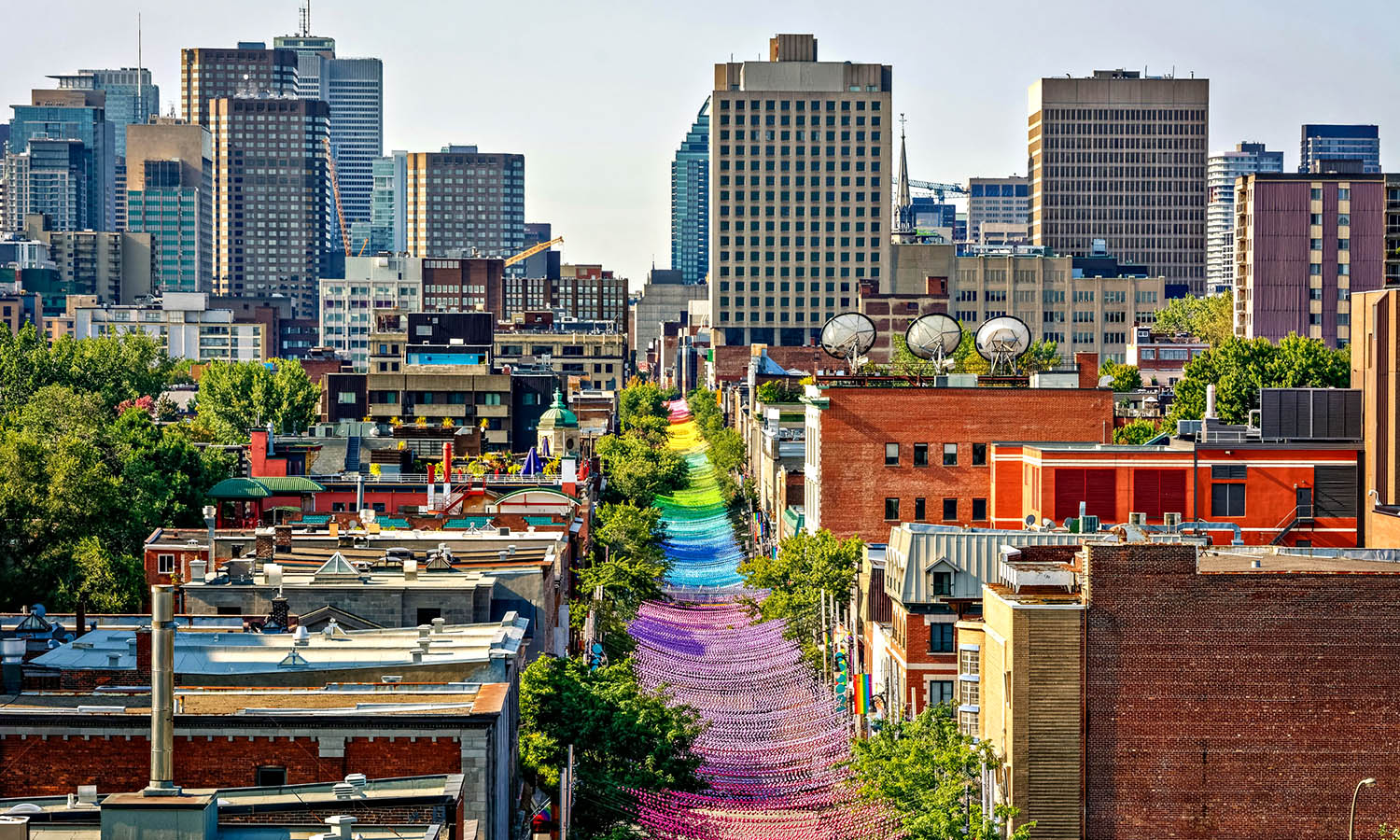

CANADA
Looking for a classic Pride celebration, but with a twist? Montréal is the city pour vous.
Founded in 2007, after the city’s prior Pride festival repositioned itself as a general arts and music festival. Now, it’s one of the largest queer festivals (attracting over three million visitors) in the world. SLAY, MONTRÉAL, SLAY.
There are a tonne of local events, but try and centre your time around the city’s gay neighbourhood—perfectly named Gay Village—where you’ll find a week-long street party, some of the world’s top drag performers, and DJ’s a plenty.


Click to BE FIERT-CE
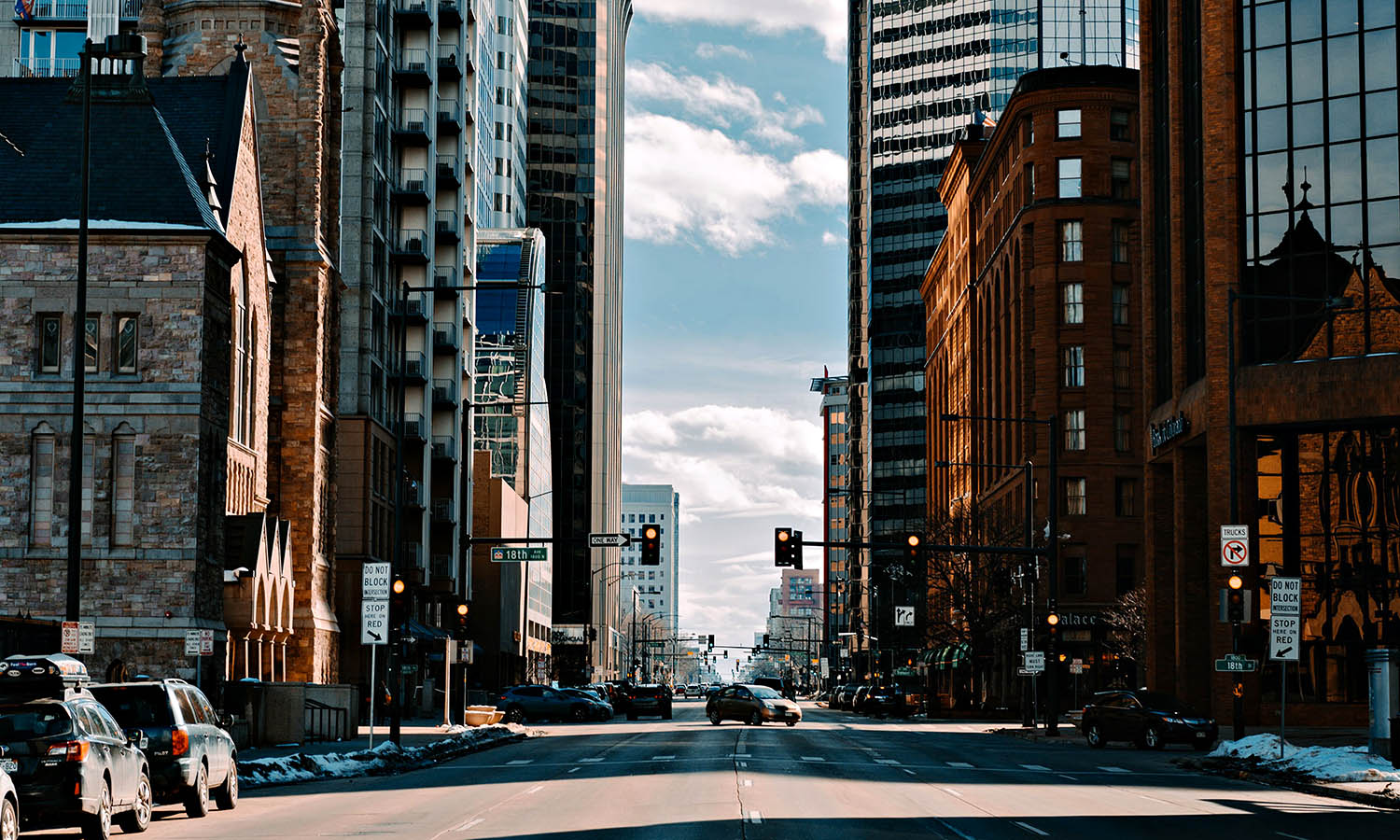

the US city with little oxygen (hello high altitude), but a whole lot of love. Bordering Utah to the left and Kansas to the right, Colorado’s capital city is a medley of undiscovered gems, situated (exactly) a mile into the sky.
It’s also one of the fastest growing cities in the US, with new brunch spots, breweries and bars popping up everyday. To save you screenshotting a million spots on Tripadvisor, we’ve eaten and drunk, and danced our way through Denver, and created the perfect long weekend itinerary. You’re welcome.
Click play to watch
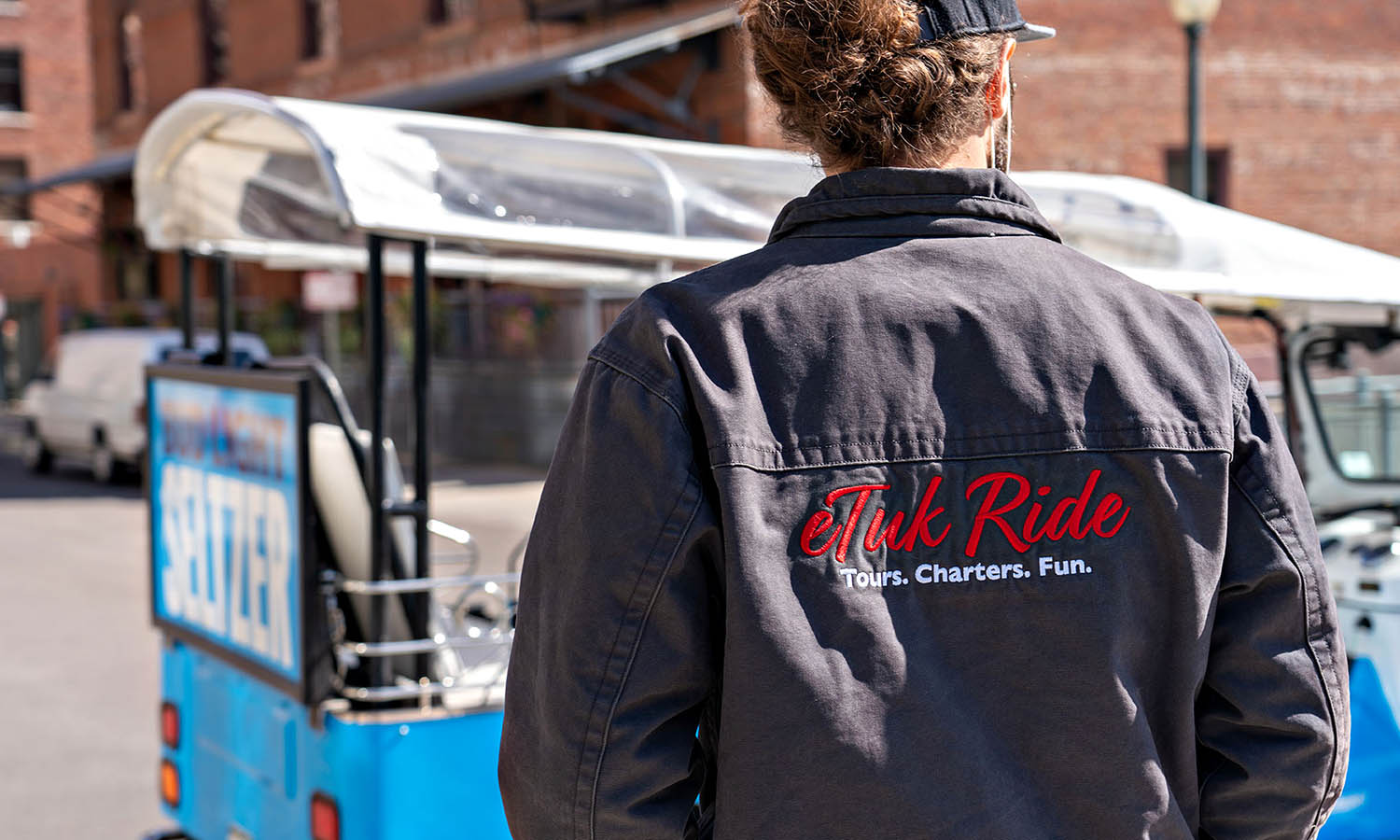

Descend upon the prim and polished Cherry Creek neighbourhood, full of shopping, fun eats, and Moxy—a hip little Marriott-owned boutique play and stay where the check-in desk is actually the bar. THE BAR, GUYS. It’s the perfect introduction to Denver; a city where there are over 150 craft breweries to drink your way through.
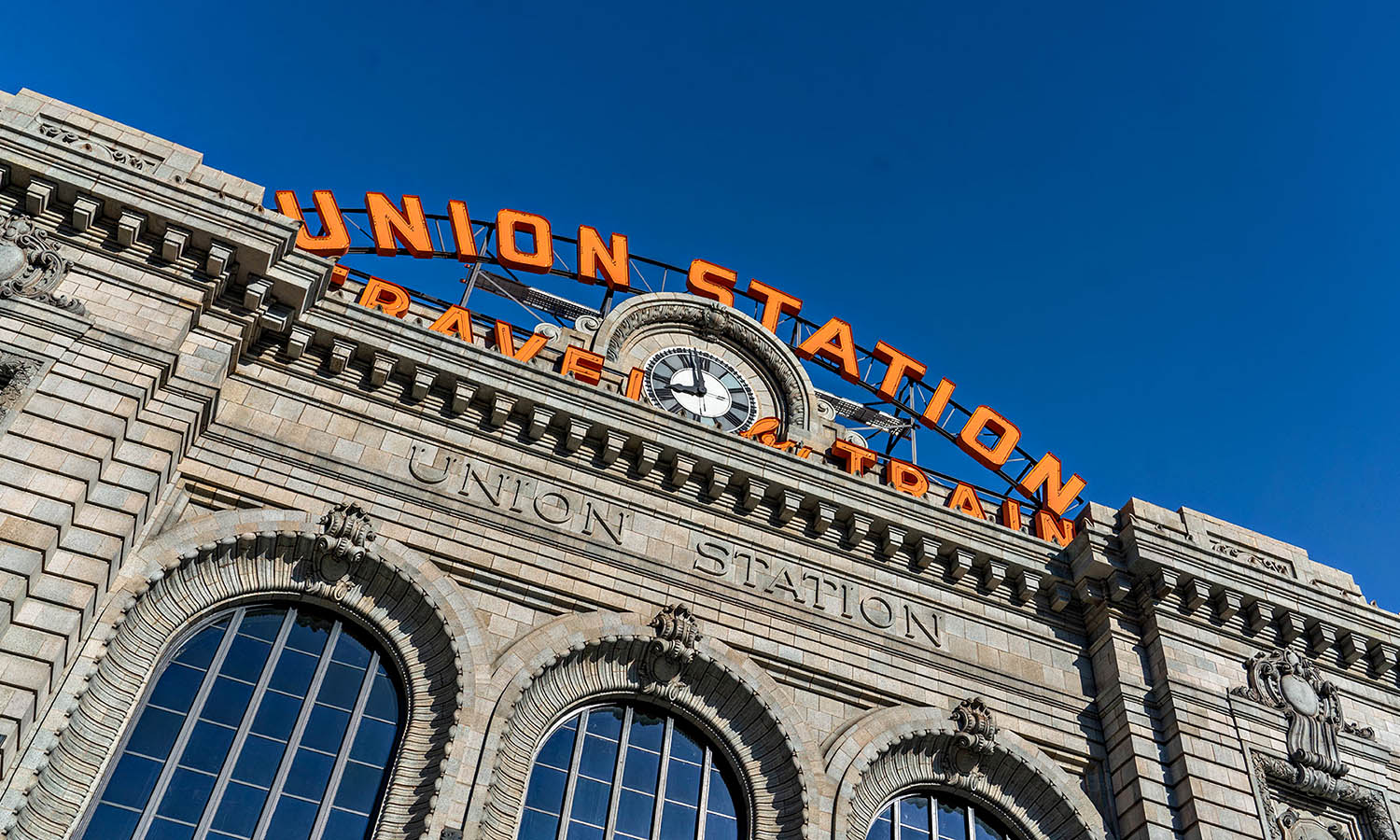

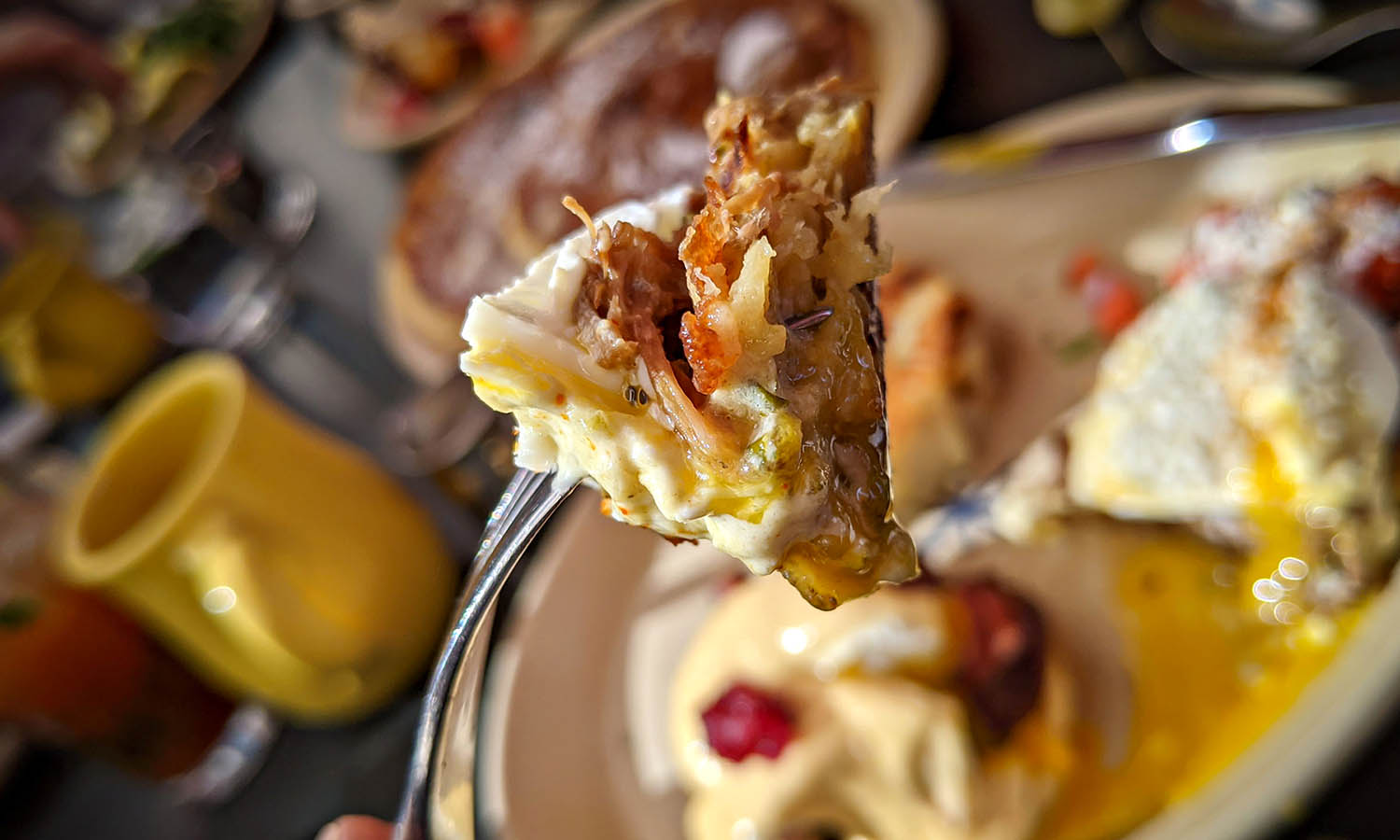

While the hotel is super fun, you should probably head over to the famed Union Station in the heart of downtown. Truly charming and stylish, this Beaux Arts-style beauty is the perfect spot to check out the local art scene. You’re likely starving now, and Snooze is considered one of the best brunch spots in town. It’s colourful, retro and the long wait lines are worth it, trust us. The breakfast here is an event unto itself, whether you’re having their decadent flavour bomb pancakes or the elaborate eggs Benedict — both of which require, for health reasons, one of their loaded Bloody Mary’s to wash everything down.
You’re going to be stuffed now, so it’s time to see more of the city while you digest. And there’s no better way to do it than with eTuk, Denver’s premier environmentally friendly tour company. These locally manufactured, fully electric tuk-tuks come with heated seats and fantastic views of the city, letting you whip around downtown to take in all the sights.
Spots to look out for: Cherry Creek pedestrian bridge, the decadent Cruise Room located at the Oxford Hotel, the lovely Larimer Square and the opulent Performing Arts Center, which proudly showcases two giant Botero sculptures.
Go sleep it off at the Moxy.
Hit play to watch
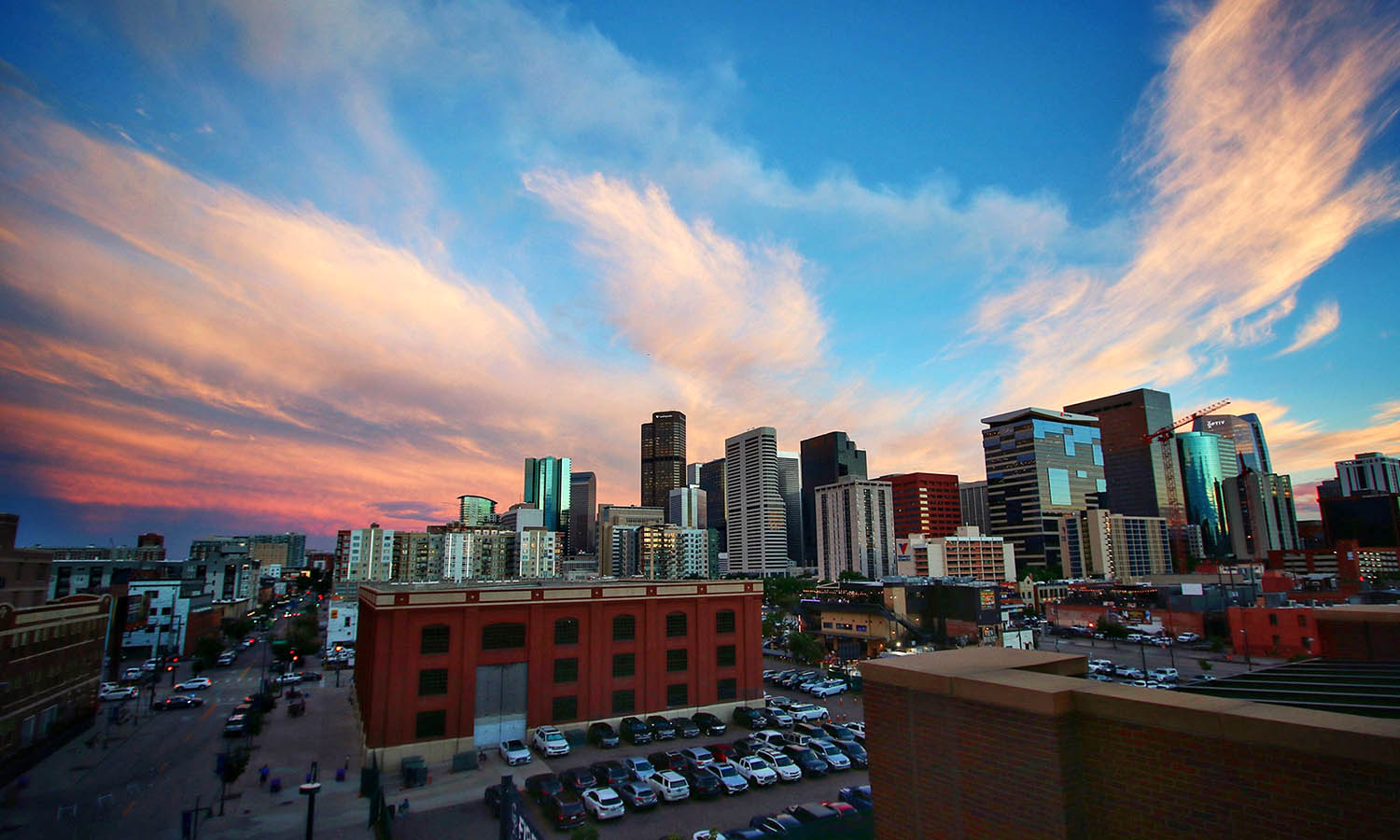

Today we leave the old school charm of downtown Denver and pop over to River North, or RiNo Arts District, famed for its world-class street art and cafes. A trip to RiNo isn’t complete without hitting up the Denver Central Market, located in a reclaimed warehouse. Chock-full of anything and everything you could want to imbibe or ingest, the market is the perfect spot to pick up something for dinner. And dessert (obviously)—the famous Temper Chocolates are a must-chow.
Heading across the Platte River to the hip Highland District, where you can continue eating in very photogenic places. Like Happy Camper Pizza, where food is served beneath a giant disco ball. Or Little Man Ice Cream where crazy flavours are housed in the largest milk pails you’ve ever seen.
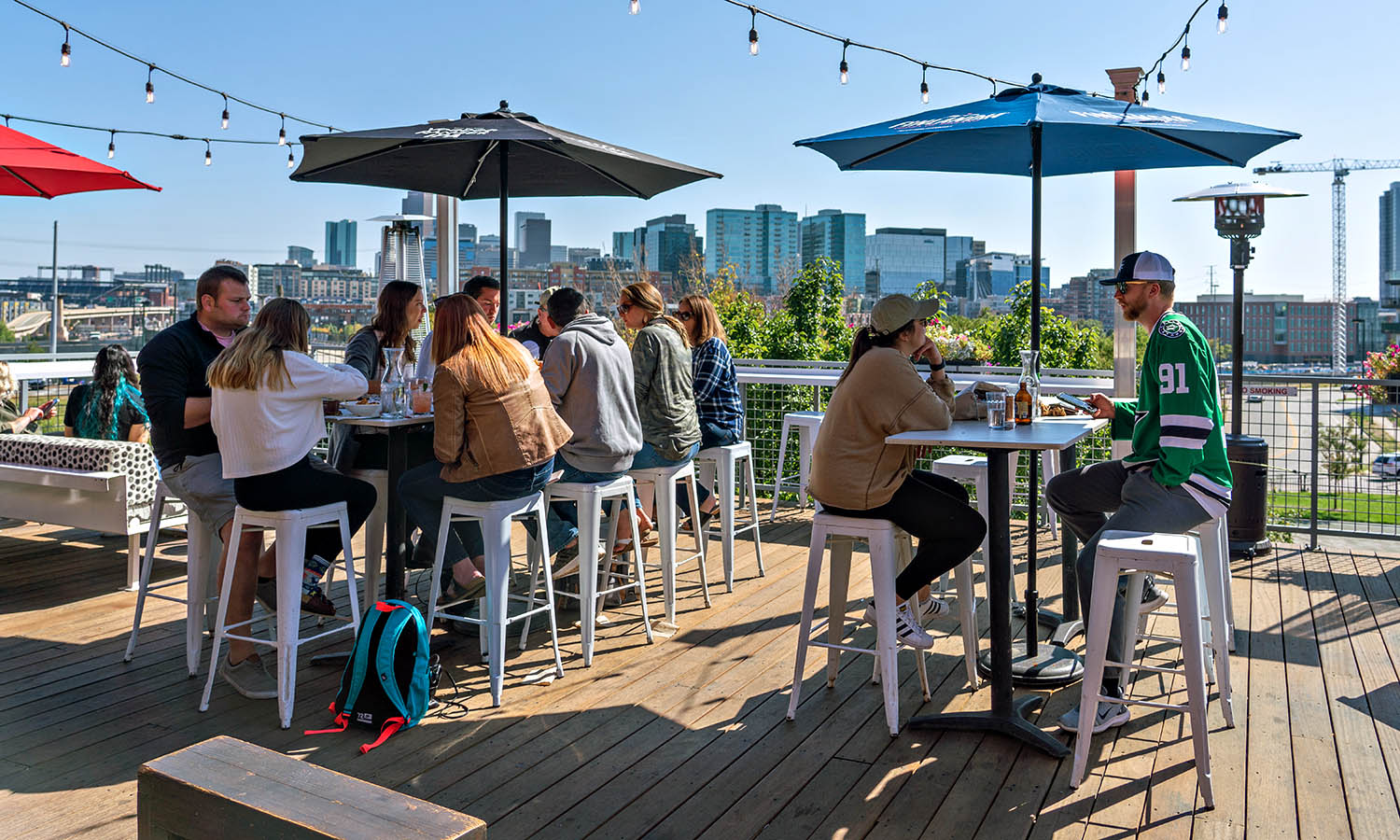



Avanti F & B is a collective eatery, which basically means a place where foodies can die and go to comfort food heaven. Throw in a great indoor/outdoor space to nosh on your new favourite nibbles and life is good.
Hopefully you’re now sated and happy, so it’s time to take in some culture at Denver’s world class art museum. This institution boasts some of the most outrageous exhibits, from Keith Haring to Skull Riding triptychs. Cap off the night with a good lol at the Comedy Works Downtown for big laughs.
Go on, watch it, we dare ya
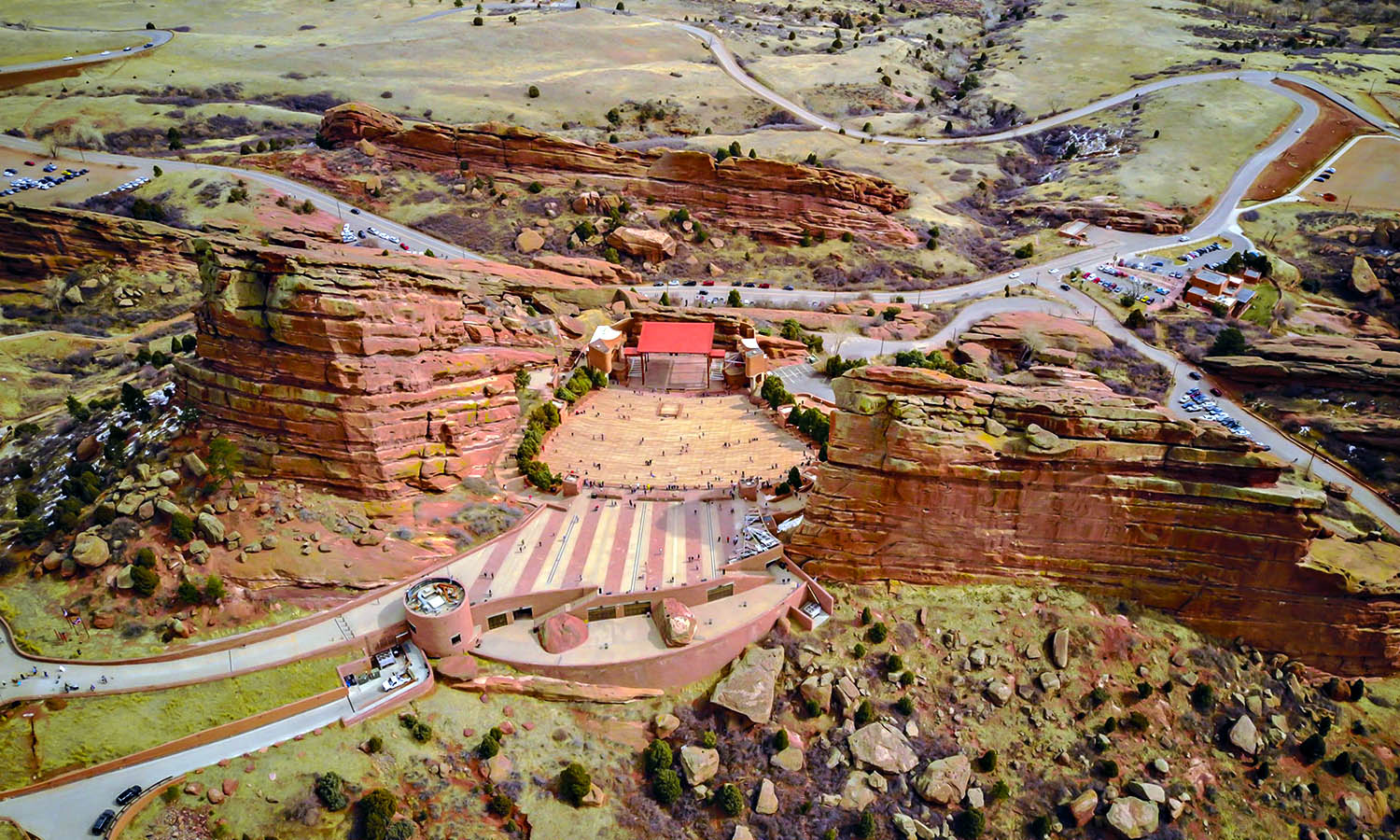

Today is the day for some of that famous Colorado outdoors. A quick cab ride, just 20 minutes, will take you to the Red Rocks Amphitheatre, which is by far the most beautiful naturally occurring theatre you’ll see in your life. When a show isn’t on, locals use the amphitheatre as a giant gym (which is more than I can say for Madison Square Garden).


Next up, take a trip (lol) to the International Church of Cannabis. Founded in 2017, this place is quite literally in a church and it’s also quite literally dedicated to weed. Think of it as part religious institution, part art exhibit. Daily guided tours and laser light shows play with art installations, making for a rather mind-bending experience.
As the sun starts to set on the Queen City of the Plains (yes, that’s what they call Denver), head back downtown for dinner. If you’re feeling low key, hit up Duffy’s Cherry Cricket for no-frills charm, excellent burgers and boozy milkshakes. Or if you want to go all out, go to the fine dining Mediterranean marvel, Rioja, on Larimer Street. And don’t you dare skip dessert.
An after-dinner evening stroll completes what should be a rather perfect travel day. Or rather, three days. From the amazing food to the interesting cultural scenes, it’s easy to see why many residents call it heaven on earth—and it’s not just the altitude.
Click for adventure
Click play to watch
These are the lynchpins of the Euro circuit for good reason. There’s no doubting why most of the Western world spends their workdays dreaming about booking a one-way flight.
The thing is, everyone wants to go to these places.
And it’s causing chaos. Local residents are being driven out by hordes of holiday-makers, and those holiday-makers are being forced to queue for hours in sweaty lines, paying top dollar for a glimpse of the Mona Lisa from 50 metres away. BYO binoculars.
But we’ve got good news—there’s more to Europe than Italy, France and being rejected from Berghain. Chic spots are popping up everywhere, replacing the old firm as the continent’s trendiest. So why not give an alternate Euro trip a go? Besides going to cool AF places your friends have never heard of, your back pocket will also be better off (especially considering the current cost of flights), and the locals will say thanks.
So, here’s our guide to a European odyssey sans crowds, with trips for every type of traveller and personality (OK we haven’t done a Myers-Briggs on this, but it’s pretty comprehensive):
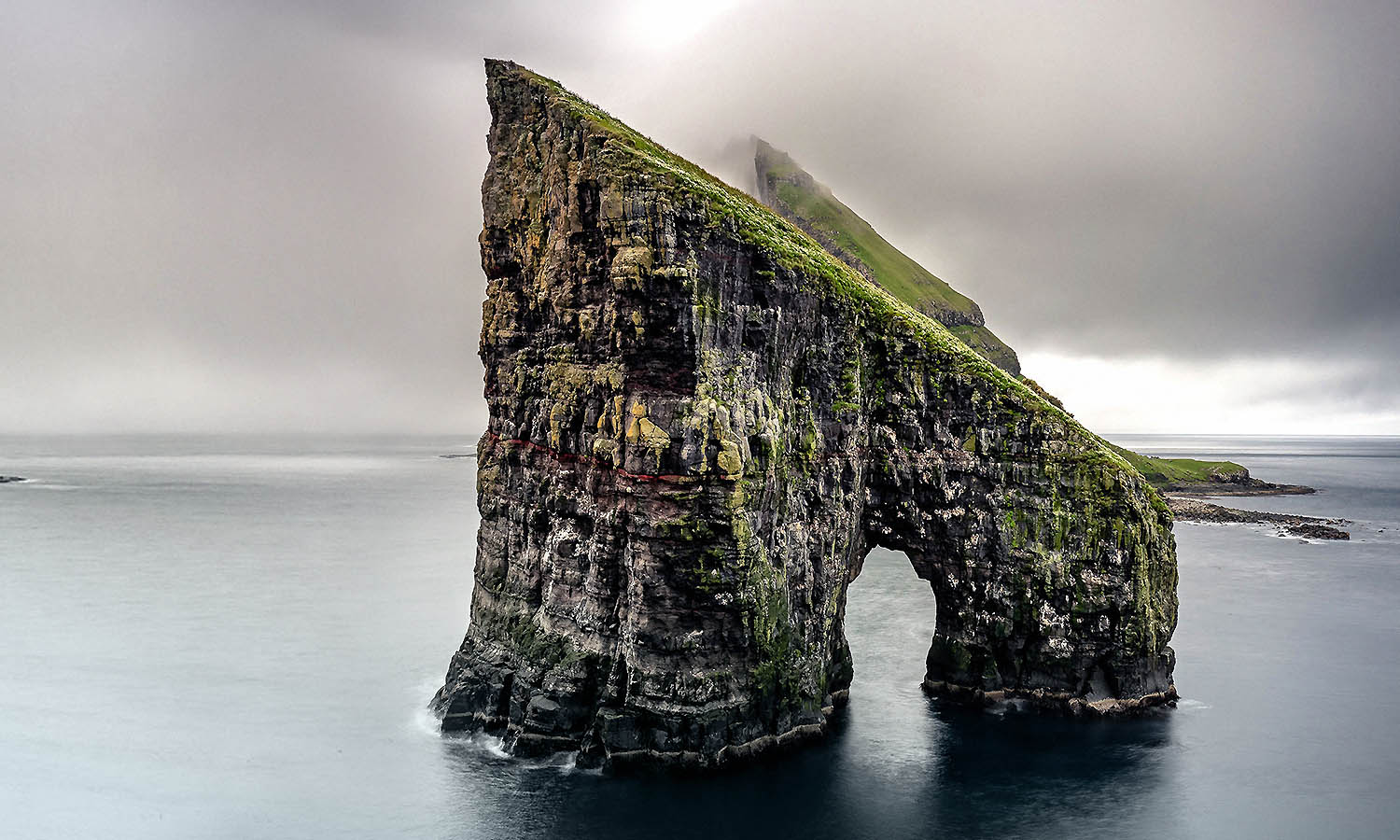

FAROE ISLANDS > NORWAY
It takes a pretty wild thinker to go: “yep, the Faroe Islands is where I’d like to go next for my holiday”. But often wild thinkers are right on the money. I mean, take Isaac Newton proposing the world was an ‘oblate spheroid’. Wild thinking, indeed.
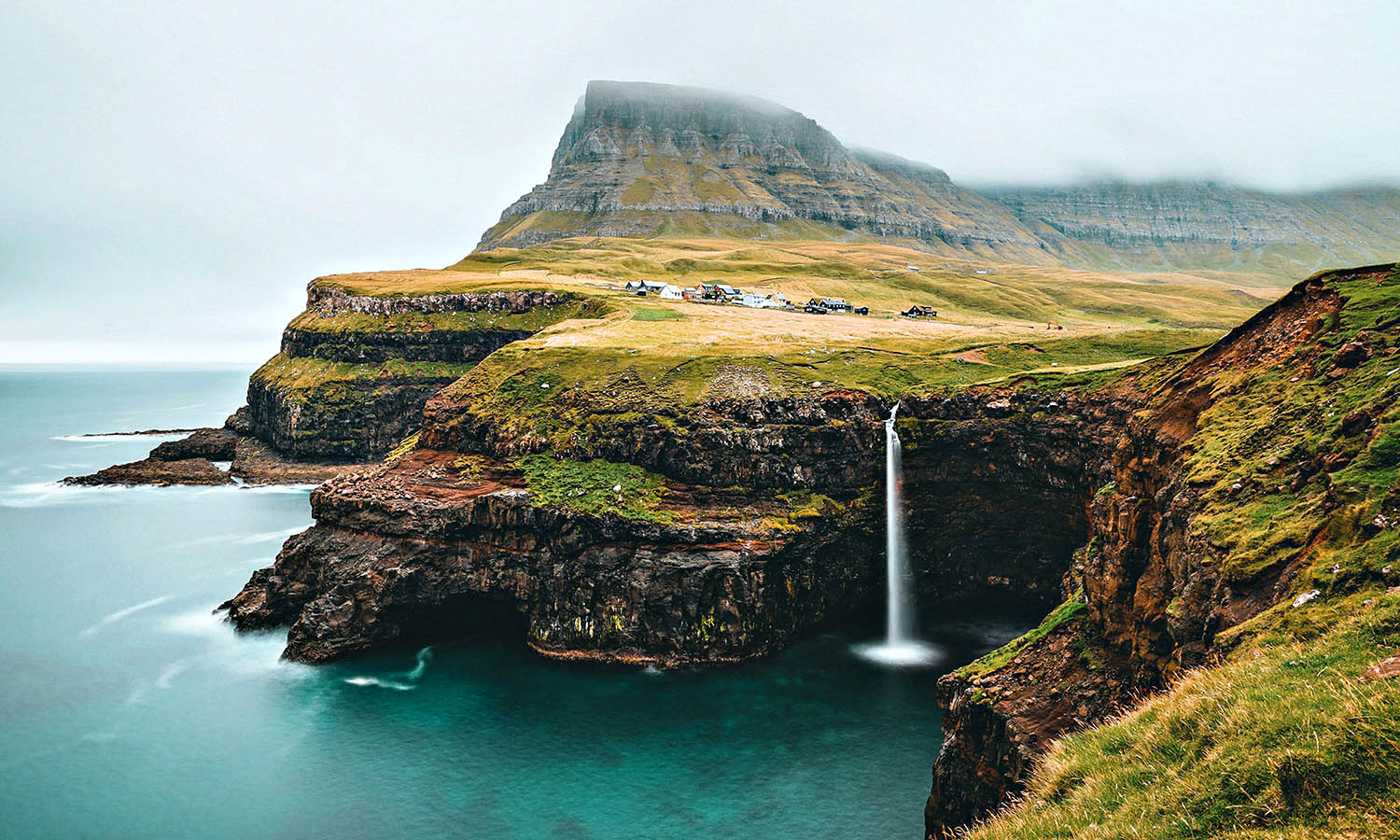

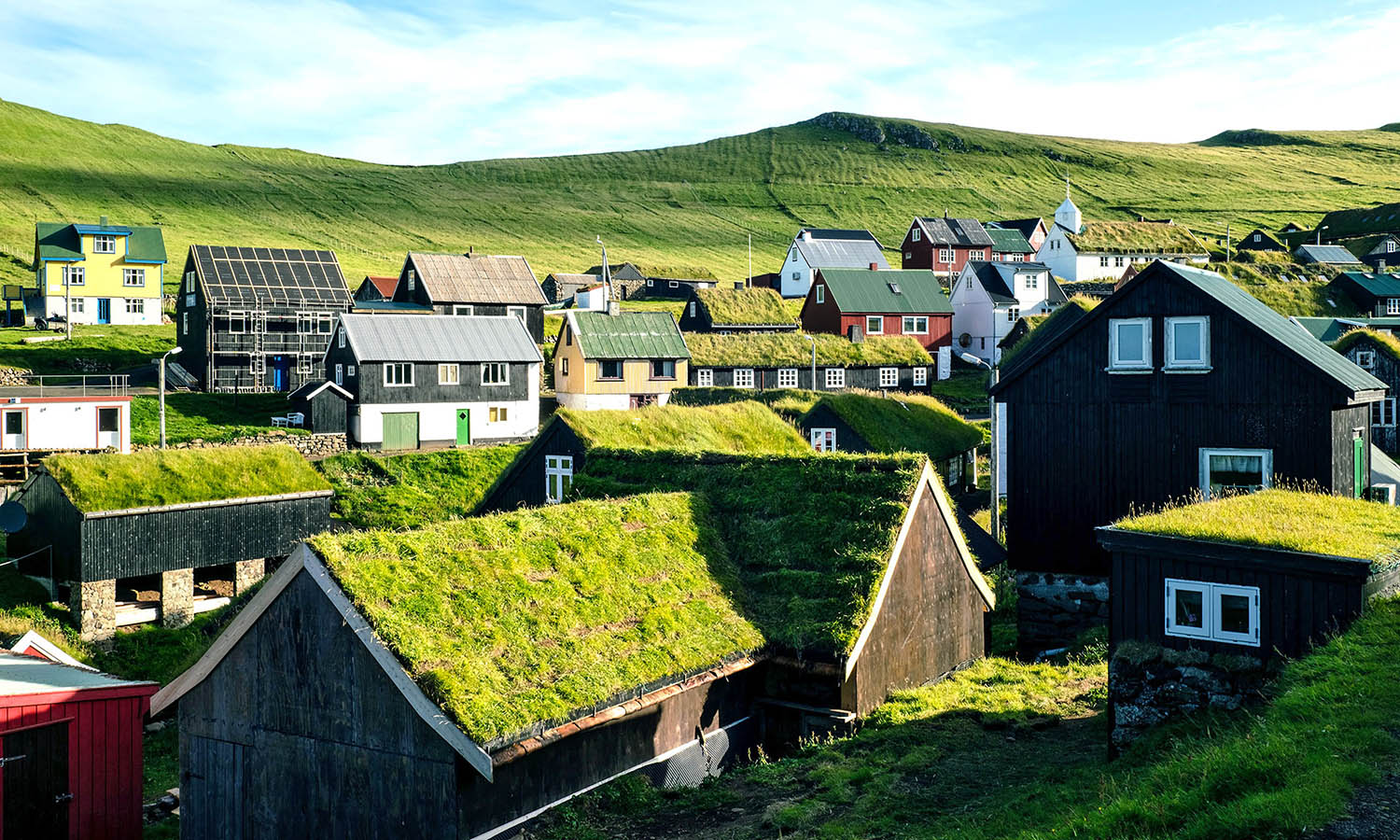

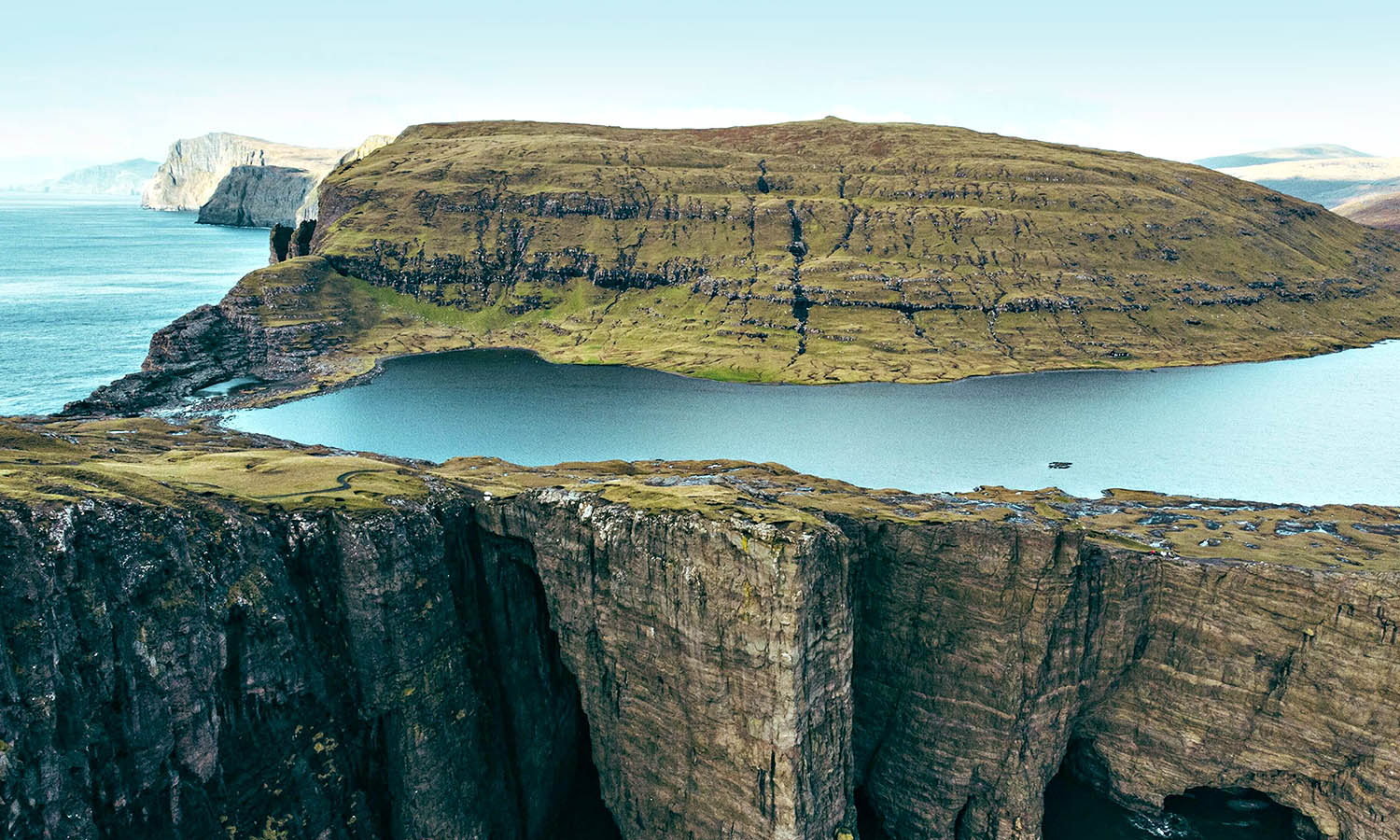

A sparsely populated group of island specks in the North Atlantic Ocean, about halfway between the U.K. and Iceland, the Faroes are all about outrageous, raw beauty. There are 18 volcanoes to hike, wild ocean to swim and a culture that is both fascinating and somewhat gnarly (they eat whale, unapologetically). It all makes for an absorbing place to visit: not bad from a population of just 50,000 people.
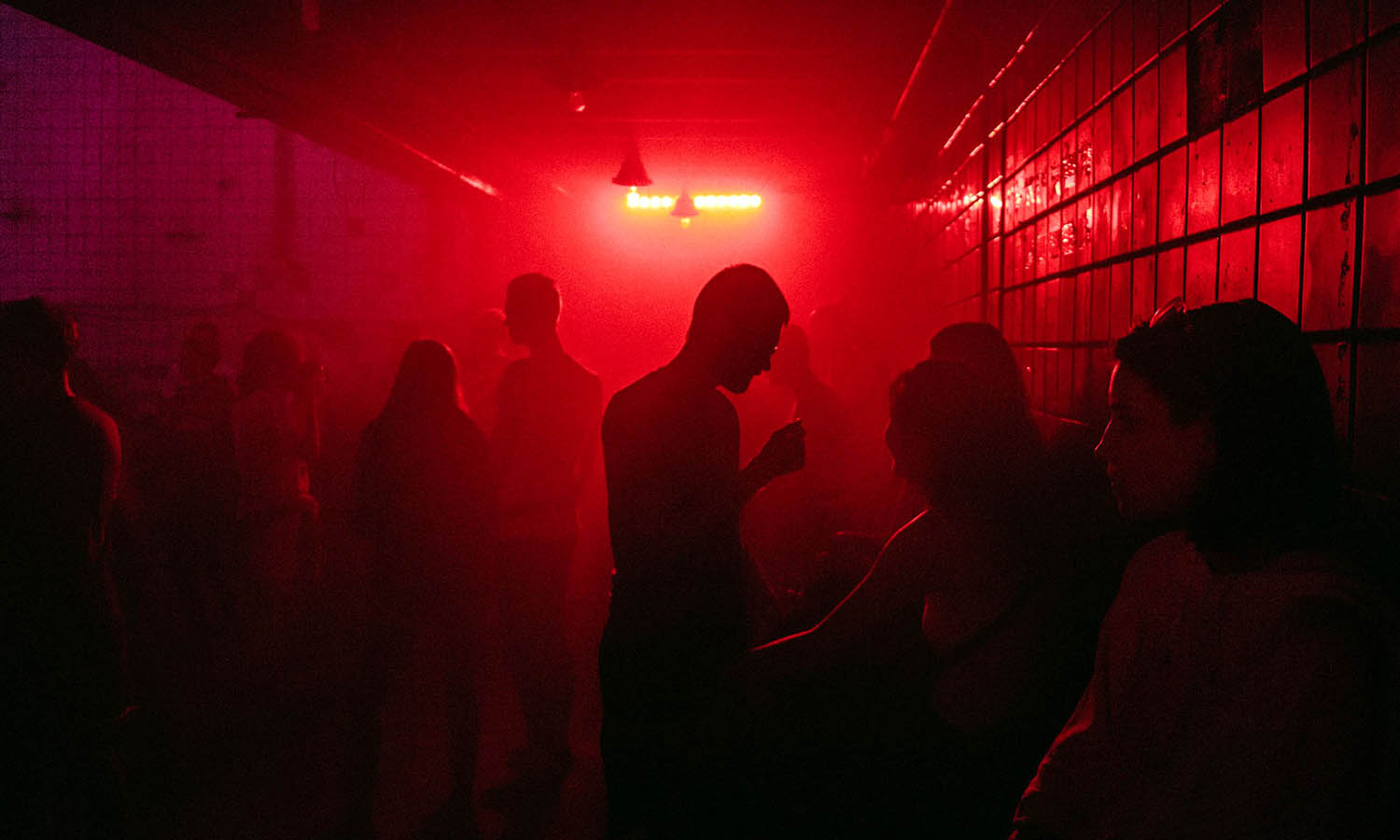

BELGRADE > BERLIN
Didn’t get into Berghain? Say no more, fam. Eastern Europe’s unofficial party capital is Belgrade, a city where they say the hyperinflation of the 1990s taught people how to really live in the moment.
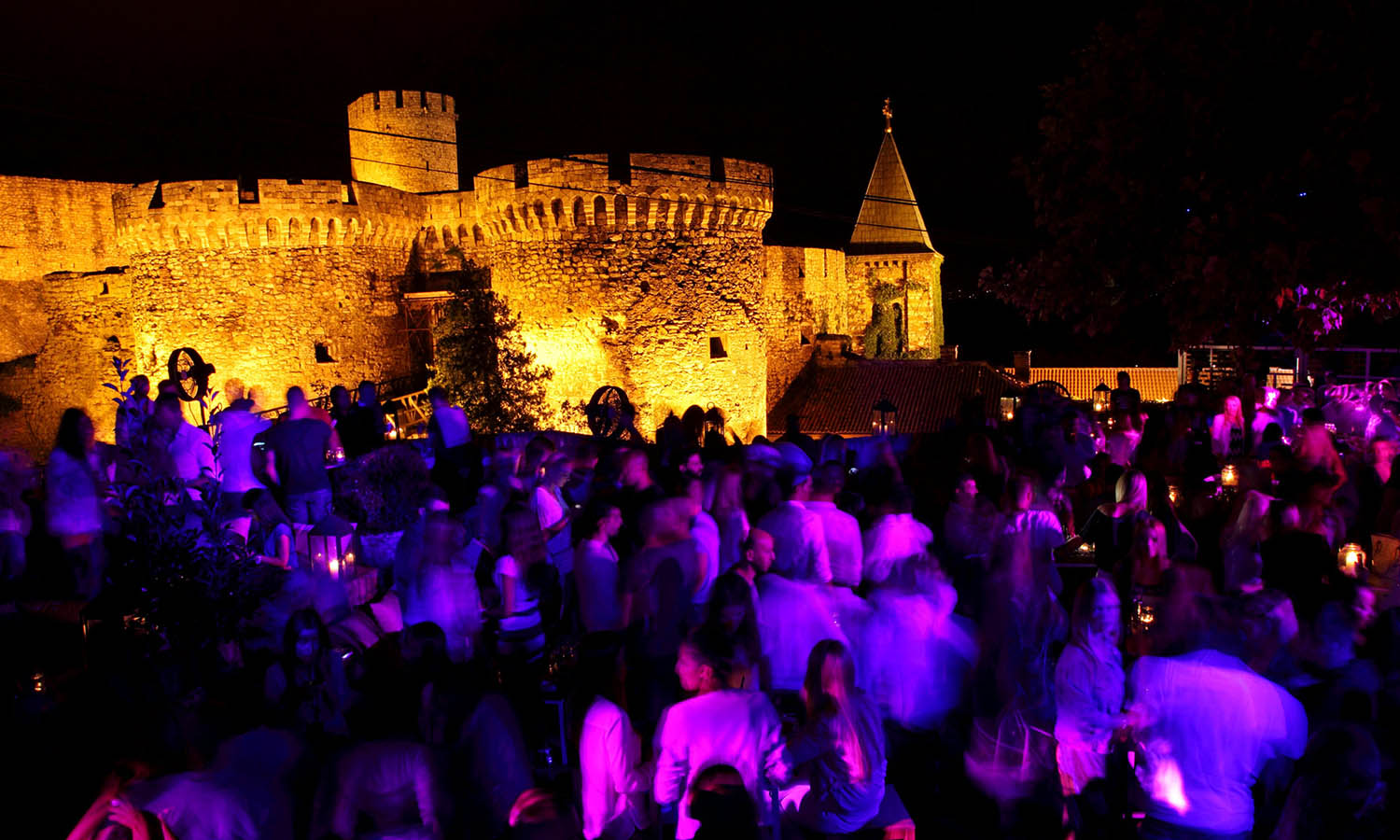

There are DJs spinning patrons into a frenzy on the Danube River in floating nightclubs (known as Splavs), and gigs at the mighty Belgrade Fortress that looms over the city. How many times have you seen a world-class band play in a 1,700-year-old fortress?
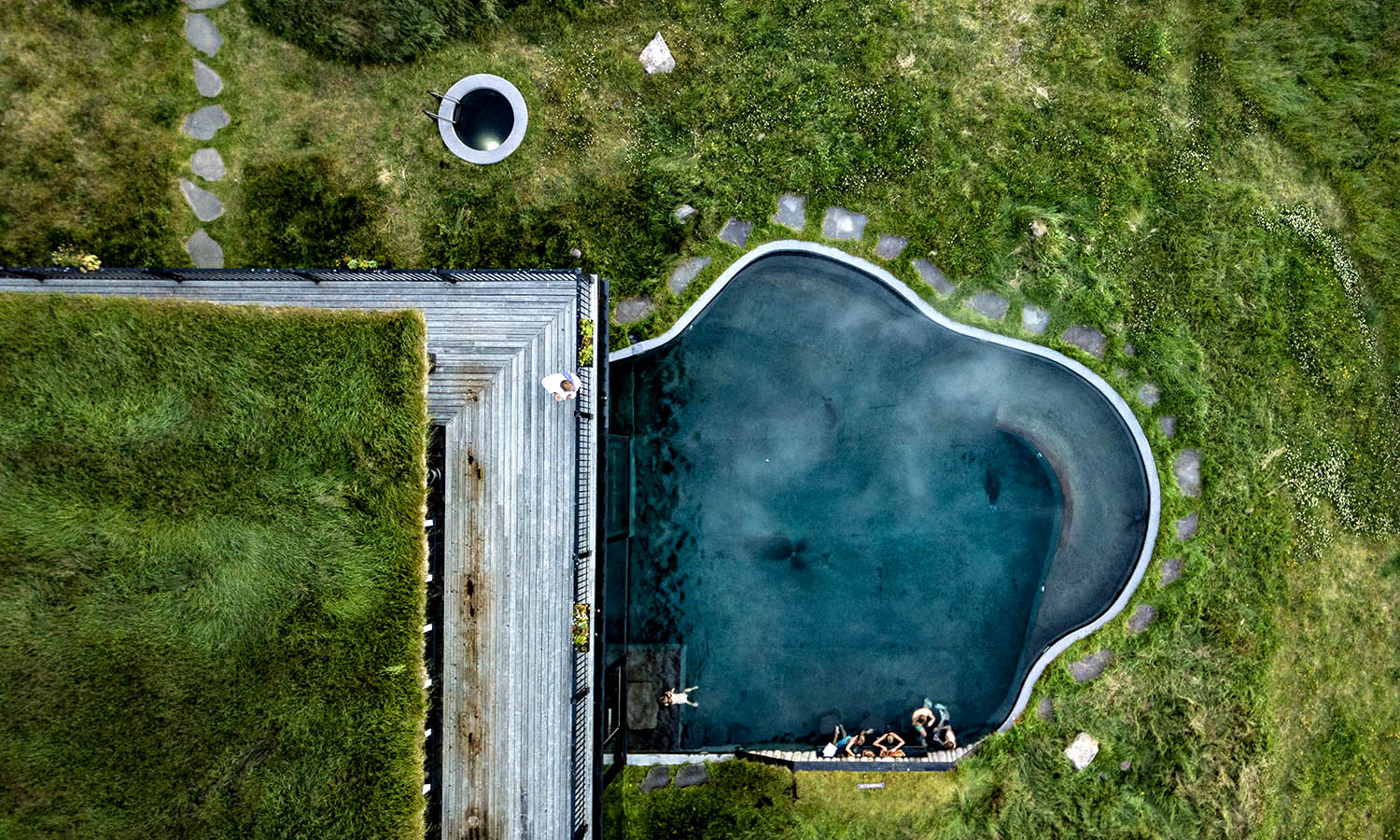

DEPLAR FARM > EVERY OTHER PRICEY HOTEL
Large, fancy hotels are out. Farms are in.
Deplar Farm in Iceland’s north is no ordinary, Old McDonald kind of farm—the turf-roofed accommodations here are some of the most extraordinary on the planet. The word ‘farm’ is a serious understatement for what you’ll find here, and we love that. Not only is this place epic, it’s humble too.
Click play to watch
Deplar is pushing the boundaries of what luxury is: guests are encouraged to take on mental and physical challenges that get them out of their comfort zone. This might be salmon fishing, sea kayaking and mountaineering, or something more left of field like axe -throwing or ‘sensory-deprivation’ night walks.
There’s the Viking Float—a kind of spa and sauna combo that looks out over the rugged beauty of the (deceptively ugly sounding Troll Peninsula). We’re not gonna lie, this place is going to hit you in the back pocket. But if you’ve got cash to burn, this might be the greatest place you ever stay.
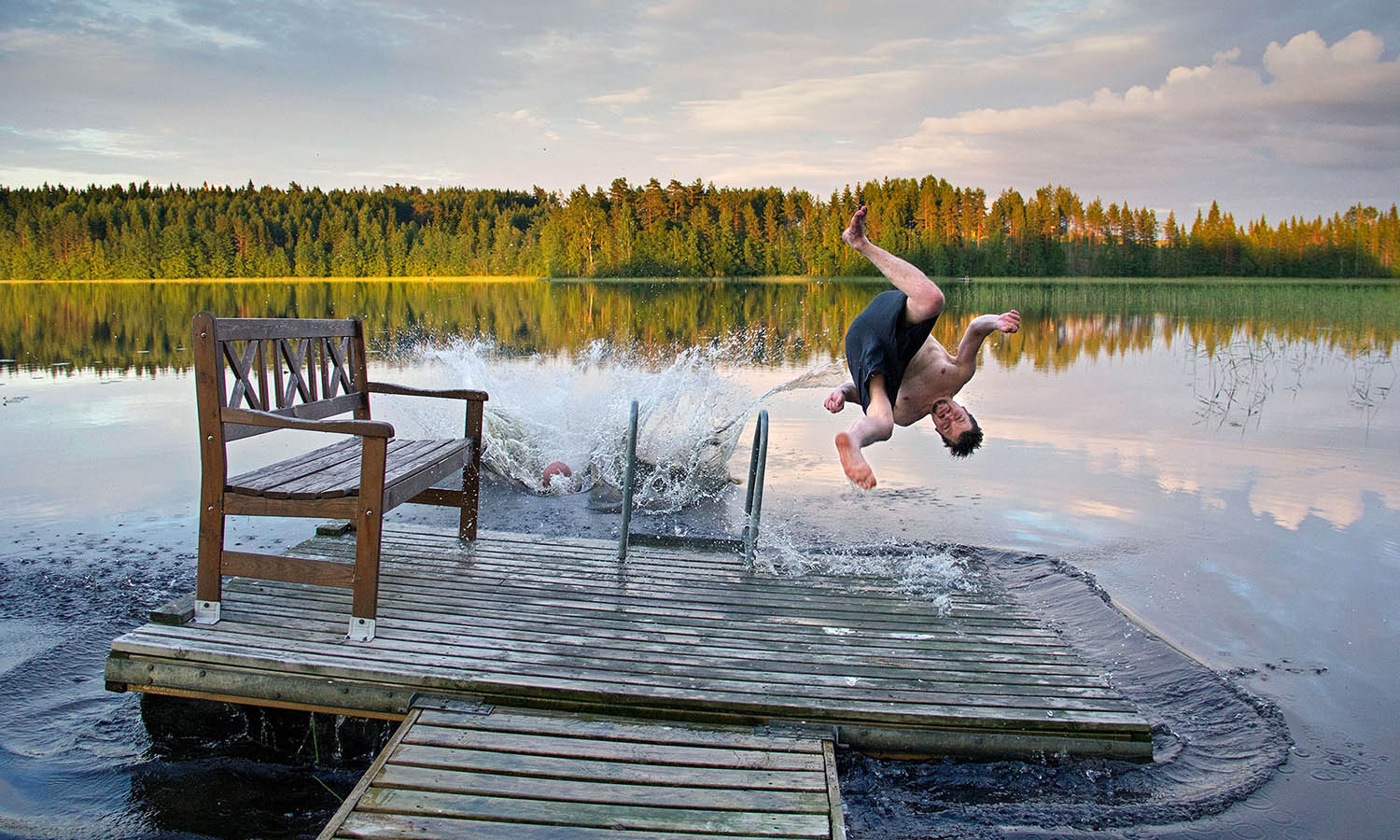

FINNISH LAPLAND > THE SOUTH OF FRANCE
Swimming in summer? Yes. They go hand in hand, like Batman and Robin, or Brendan Gleeson and Colin Farrell. Swimming in Finland? Less likely, but a surprising delight. Like ice cream and hot chips.
Owing to its abundance of lakes (the moniker ‘Land of a Thousand Lakes’ is misleading as there are actually over 187,000 lakes across the country) swimming is a big deal in Finnish culture. The warmth of the midnight sun means night swims are aways a go—midnight skinny dips are less recommended, unless you’re an exhibitionist. Lake Saiima in the southern Lakeland region is stocked with gorgeous log cabins you can rent that allow you to enjoy river swimming and then smoke saunas—in that order, on repeat.
It gets up to a balmy 22°C in summer and although the water is coolish, the seemingly unending sun means it’s time for a dip 24/7. Pack the kossies and nothing else.
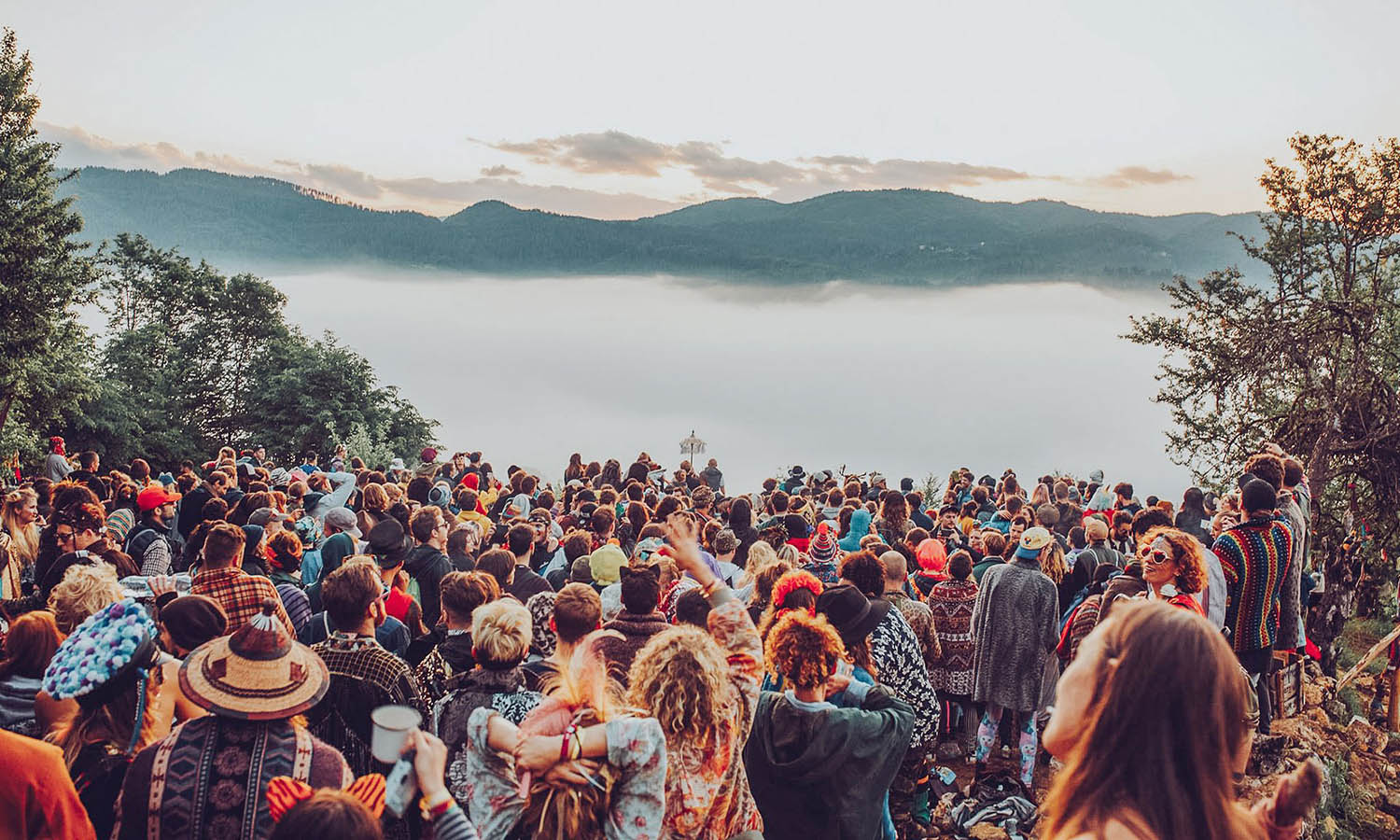

MEADOWS IN THE MOUNTAINS > GLASTONBURY
The nature-first commitment at Bulgaria’s Meadows in the Mountains is evident in the universally agreed upon highlight of the festival—which is neither band nor DJ. It’s the sun.
Yes, Big Yella himself emerges above the mist, and between the mountains, to sensational acclaim each year in the serene setting of Bulgaria’s Rhodope Mountains. As it has done since the dawn of time, but now with the approbation it deserves.
Meadows in the Mountains (June 1 – June 5) has been described as a cross between Glastonbury and Burning Man—a Brit and banter-heavy crowd gathering with the shared desire to lose the plot. But with additional sprinklings of creative energy and an appreciation for nature. It’s cheaper and much easier to get tickets than most other European summer festivals, and when you do make it to bed at night you can stay with locals at the bottom of the mountain.
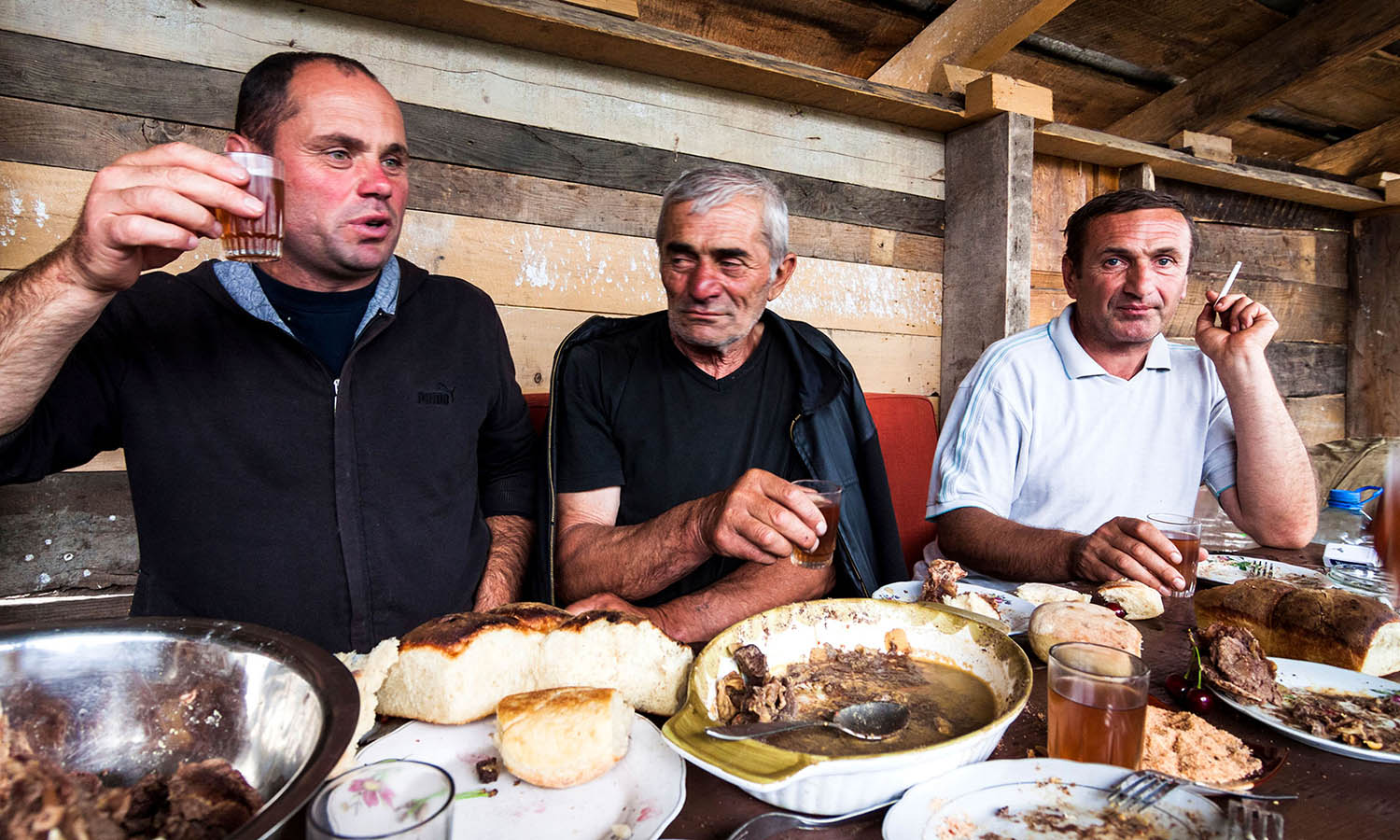

GEORGIA > ITALY
We’re not about to take on Italian food—that is one delicious behemoth deserving of its culinary crown. BUT! We reckon Georgian cuisine—from the small country south of Russia in the Caucasus Mountains—is one of the most underrated in the world.
Think dumplings, heaps of cheese, stews and spices served in scenic locations by Georgian nannas who simply won’t take no for an answer. Georgia also has a pretty strong claim on inventing wine, and there are excellent trips to wineries where you can spend a day ‘working’—that is,‘stamping and sampling’ the grapes. Stamp away, and think of it as an act of appreciation for their gift to the world.
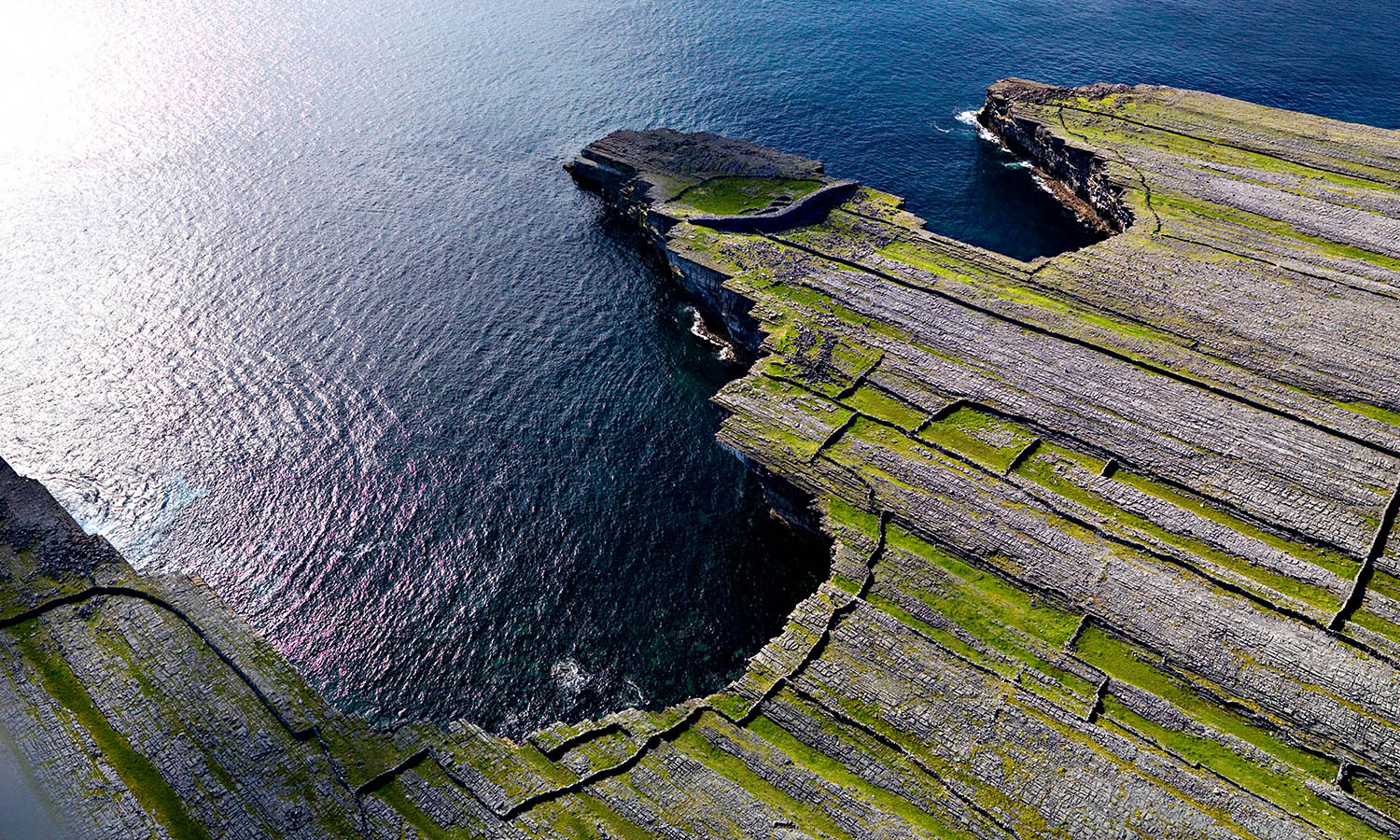

ARAN ISLANDS > GREEK ISLANDS
Sure, Mykonos, Santorini and co. are among the prettiest places on earth. But if they are pretty in the manner of say, Timothée Chalamet, then the Aran Islands—a chain of rocky isles off the wild Irish west coast—are the roguishly good-looking European cousin… Idris Elba.
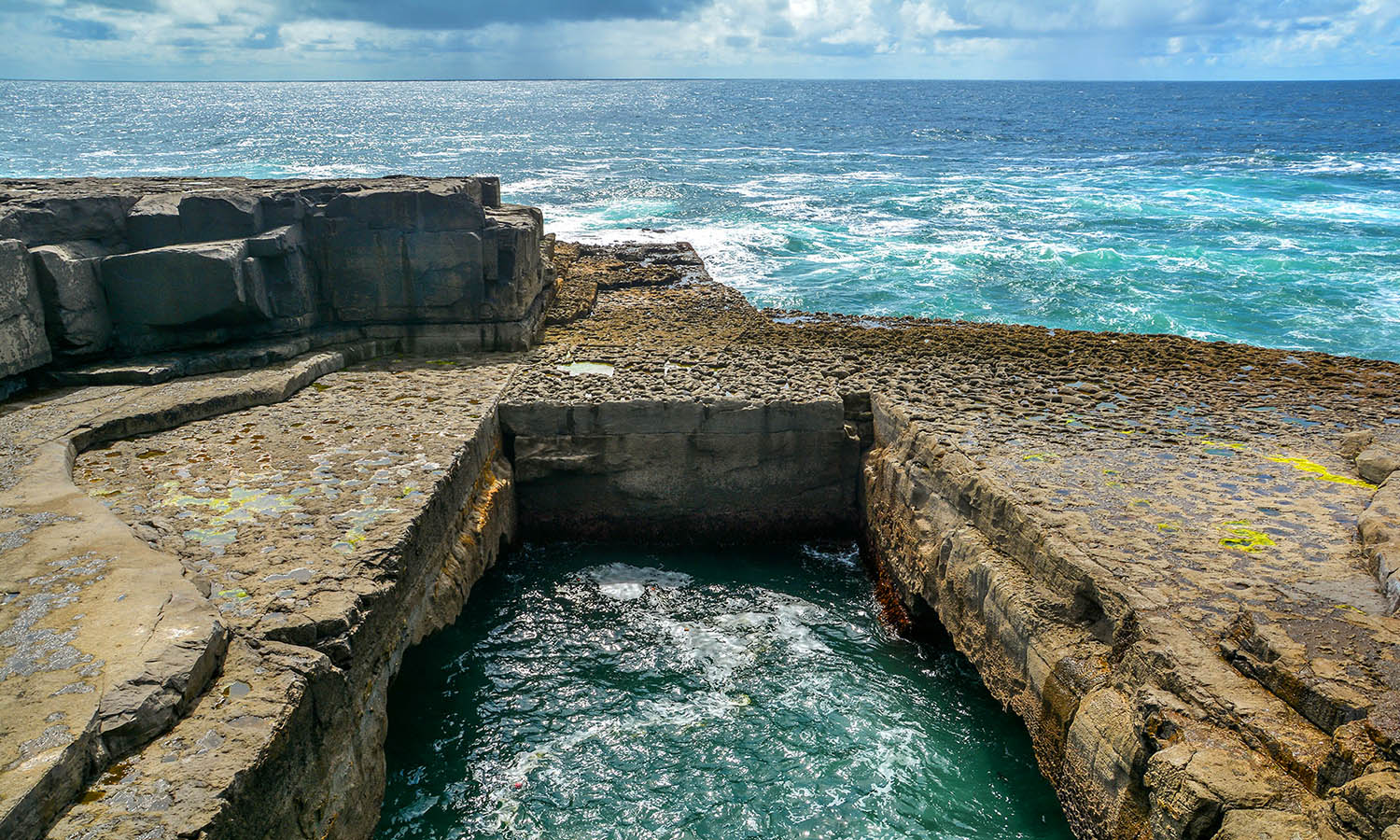

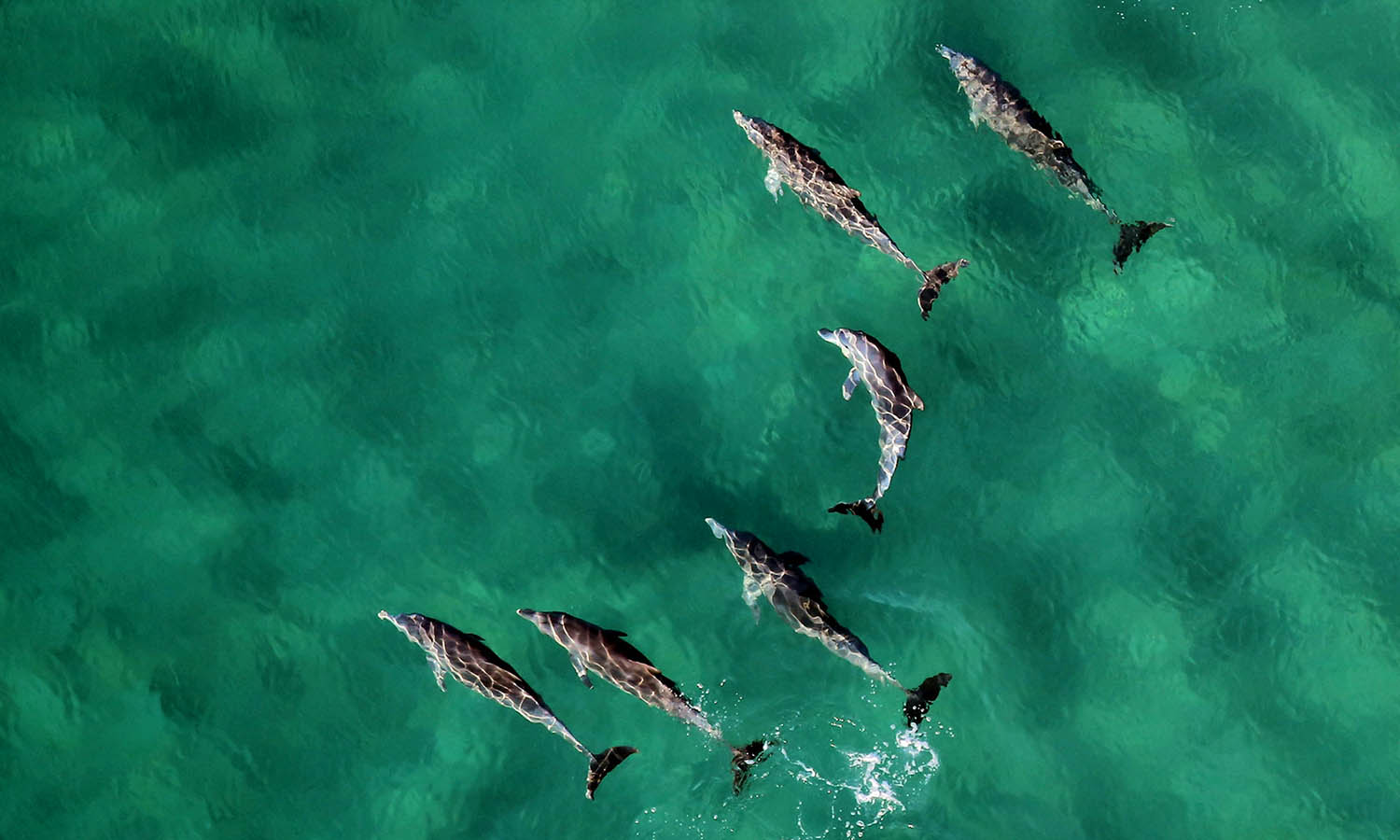

The largest of these is Inishmore (Inis Mór), thinly veiled as the location of Best Picture nominated Banshees of Inishirin. Take the Wormhole for example—an extraordinary natural swimming pool in a near-perfect rectangular shape where locals jump for fun and Red Bull holds cliff-diving competitions. No resorts, party spots or gyros, just fresh air and plenty of outdoor craic.
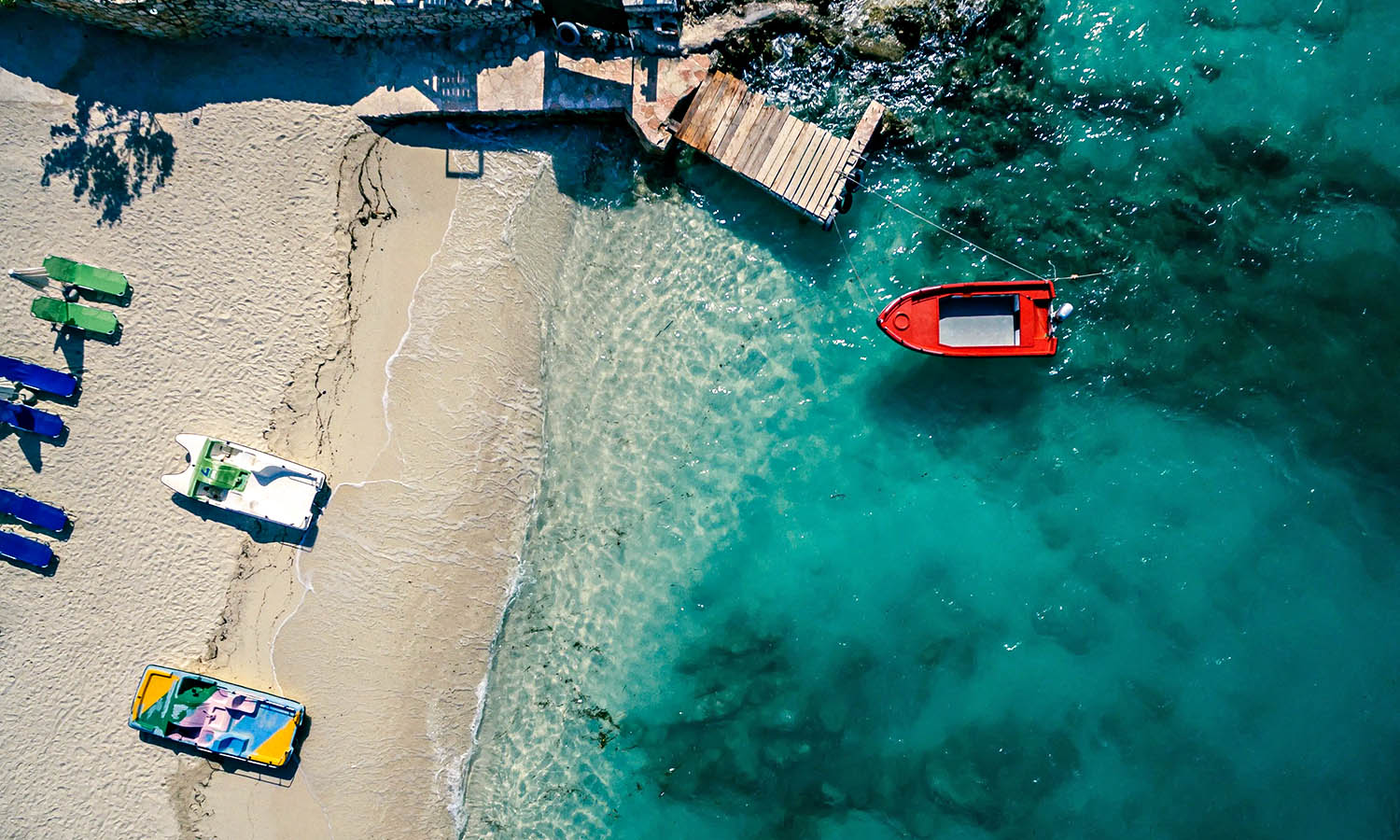

ALBANIA’S SECRET BEACHES > DUBROVNIK
Albania is known by a few (nerds) as the place where Lord Voldemort went into hiding during his Harry Potter-enforced exile. And if you were privvy to the stunning Adriatic beaches here, you’d go into hiding too.




The Karaburun Peninsula is dotted with extraordinary, unheralded beaches where you won’t be charged 10 euro for a chair because, in all likelihood, you’ll be the only one there. There are even caves to explore, if you’re less of a beach bum and more of an ocean adventurer. Plot twist: maybe Voldemort was never in exile at all. Maybe he was just taking it easy, sipping cocktails and enjoying the view to the Adriatic. Get to your nearest portkey, or apparate here immediately, before the crowds do.
Presented by Solomon Airlines and Tourism Solomons
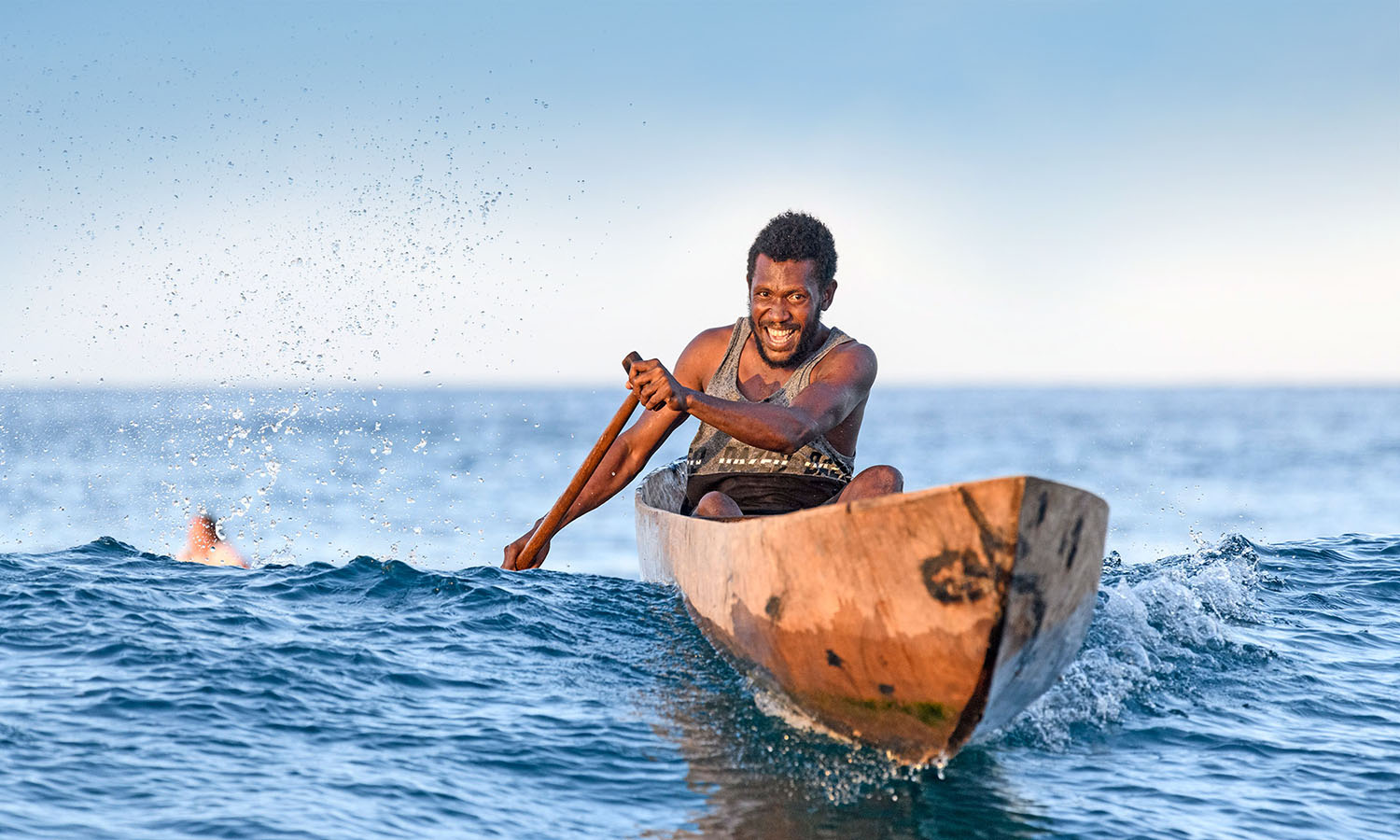

And considering the Solomon Islands have 994 islands in its archipelago—there’s plenty of adventure (and culture, and relaxation) to go around. In fact, we reckon the Sollies is the most epic getaway within a few hours of Australia.
From thick jungle and pristine beaches, to extraordinary underwater reefs and gnarly above water waves, there’s a landscape here to suit every kind of explorer. Plus, the warmest of people with the warmest of welcomes.
To prove our point, we’ve rounded up six of the most extraordinary adventures this paradise has to offer. We bet at least one tickles your travel fancy.
Click play to watch
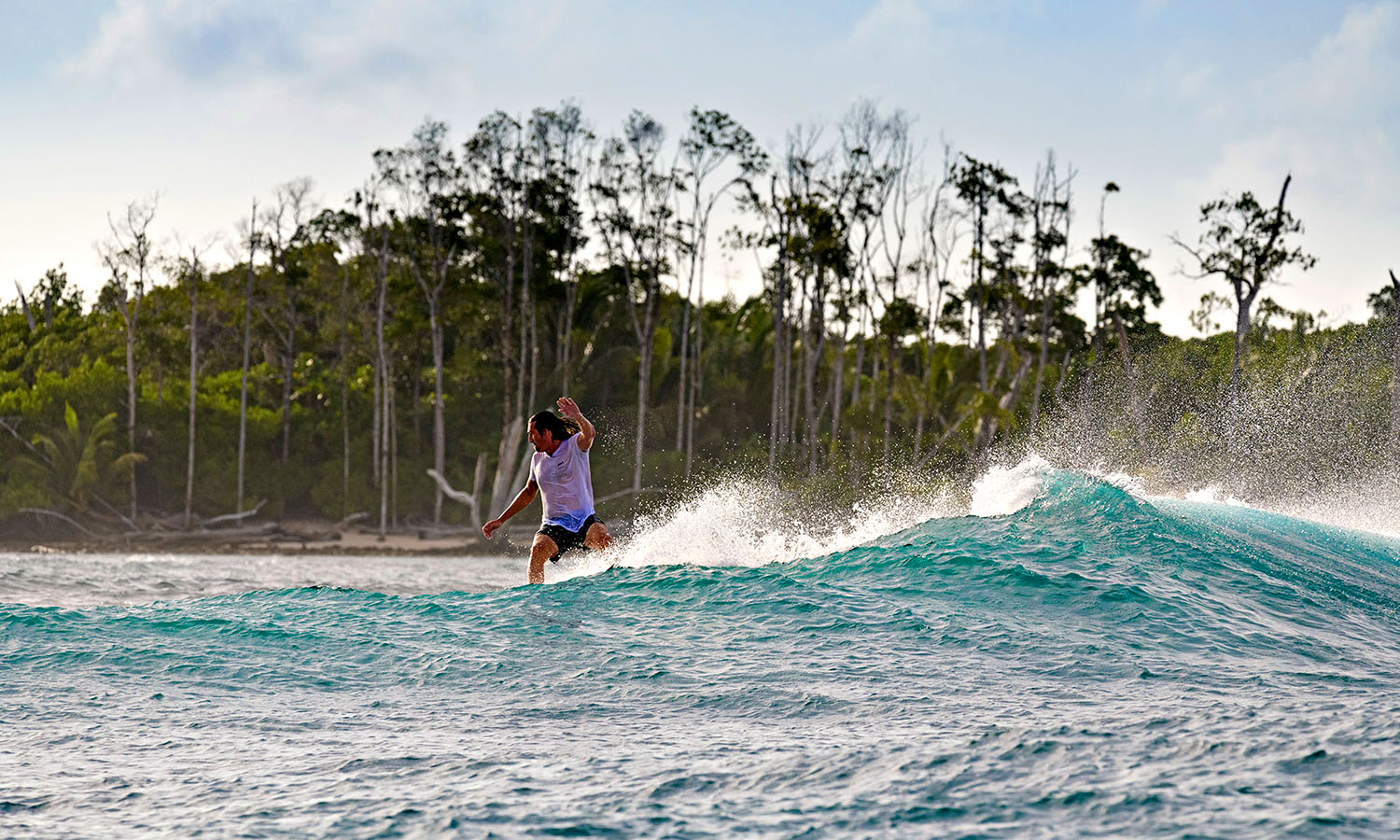

No sharks, uncrowded waves, and the same swell that hits Hawai’i. Sounds too good to be true, right? Wrong.
Solomon Islands is basically the ideal surf destination. Especially if you’re based in either Australia or the Pacific, where the waves are only a short flight away. The Sollies receive Hawai’i’s swell a week later, which takes the edge of some of the world’s most hectic breaks and makes for more accessible waves.
Where should you go? The eastern region is always good. Toi is one of the premier waves in the Solomons—a big right-hander that will give serious surfers plenty of time in the tube. In the same neck of the woods is Charlie’s Right, a consistent right-hander, while Kofiloco is the perfect longboarder’s wave.
Regular storms mean the November to March period often has the best conditions, but many breaks are surfable year-round.
Where to stay: There are a number of surf camps and operators who can show you the best waves, and one of those includes Vavaghio Guest House (on Santa Isabel Island), where well-equipped bungalows stand back from the beach in the cool of the mangroves. Surfing, diving and fishing are all catered for here, where there is a capacity of just 8 guests.
Click to Visit Vavaghio Guest House


Click to Book now
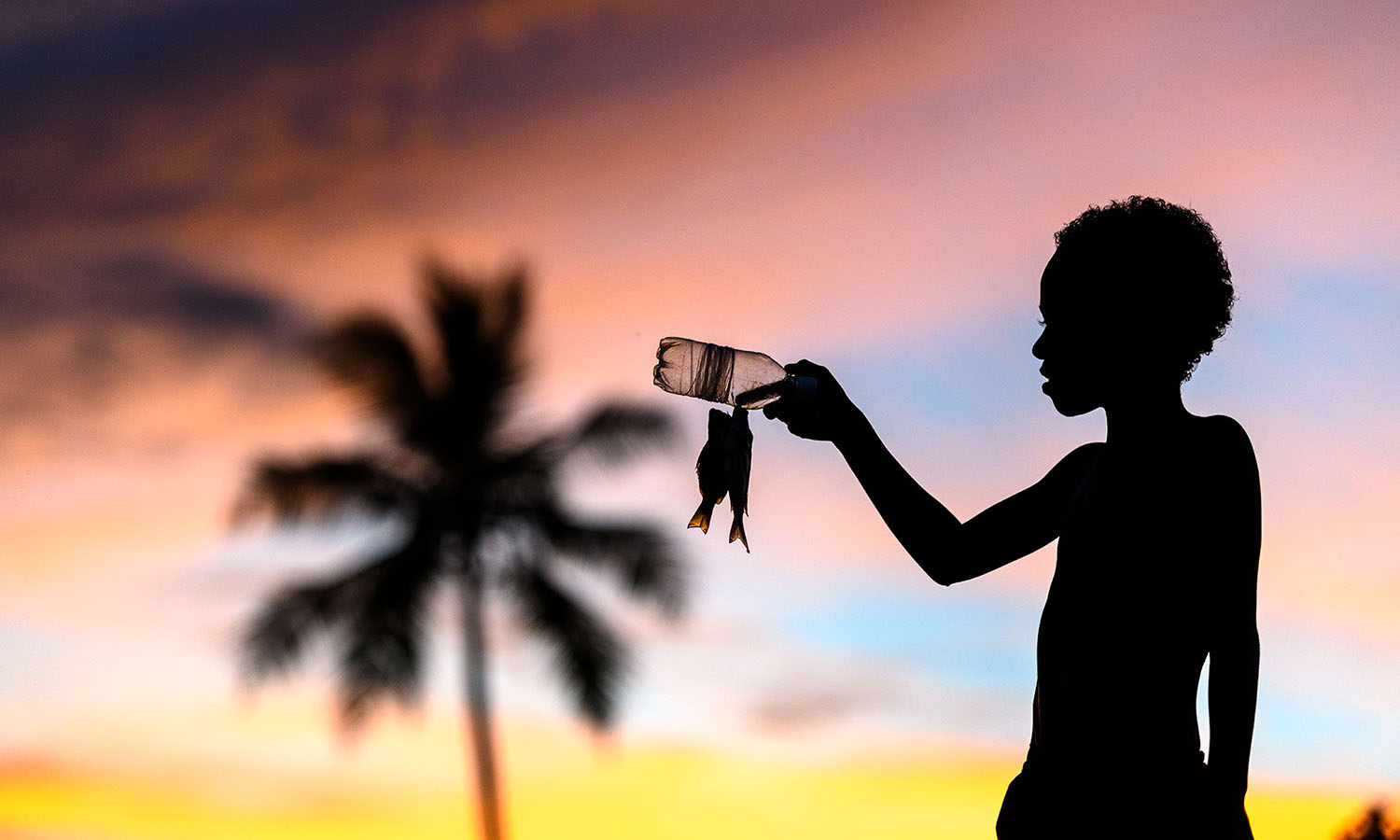

Given the country is made up of six major islands and over 900 smaller ones, it is no surprise that there is an abundance of ocean fishing to be found.
As well as this, there is great inland fishing to be had at a number of rivers that weave their way through the islands like arteries.
We recommend heading to Santa Isabel Island for the fishing adventure of a lifetime. You’ll find everything from sail fish, shark, sweet lip, coral trout, cod, job fish, kingfish, trevally, wahoo, mackerel, barracuda, wrasse and snapper. While mangrove jacks, spot tail bass and ox eye herring are catchable inland.
Where to stay: Arguably the best place to base yourself is at Papatura Island Resort. Boats and gear can be hired here, and there are guides to take you to some of the best reefs, atolls, islands and bommies throughout the South Pacific.
Click to Explore Papatura Island Resort
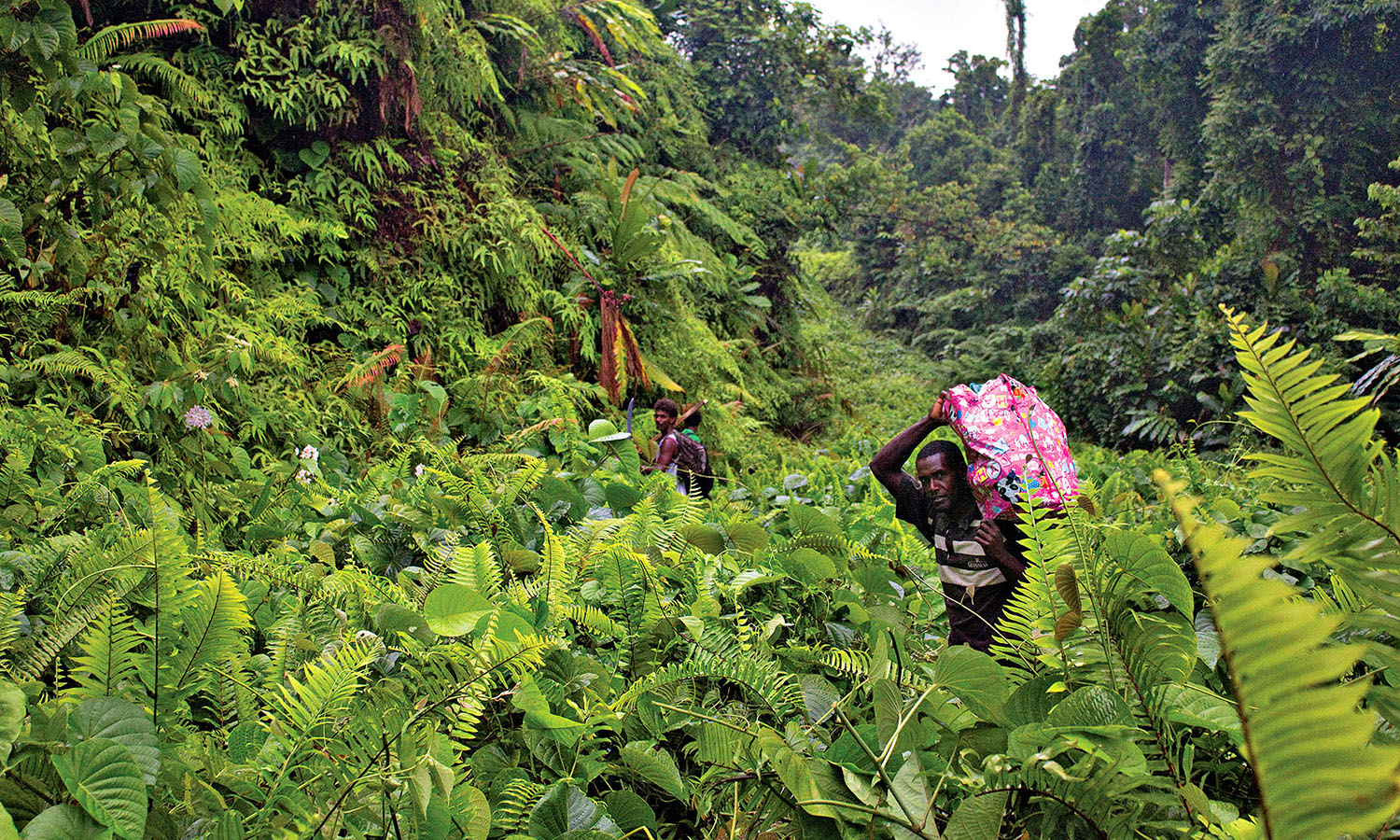

There’s a heap of jungle hiking to experience here. From the impressive curves of Mount Rano to searching for waterfalls just outside of Honiara.
If you’re in the Western Province, get yourself a boat over to Kolombangara Island where you can tackle the 1,770 metre Mount Rano summit. This is no cookie-cutter hike; there’s chopping and cutting tracks, clawing through mud and rivers and scrambling uphill. Once you get there though, you’ll be rewarded with Lord of the Rings-worthy views.
Staying closer to Honiara? Don’t miss a hike (roughly a four-hour return trip) to the incredible Tenaru Falls where you can swim in the cool pools, do a spot of birdwatching and explore the surrounding jungle.
Where to stay: An inland paradise, Paranjiju Mountain Lodge—located in the hills of central Guadalcanal, just an hour from Honiara—offers up breathtaking rainforest and ocean views. The lodge itself is built with sustainable materials and powered by solar energy, and is well-regarded for its commitment to preserving the environment.
Click to See Paranjiju Mountain Lodge
Click play to watch
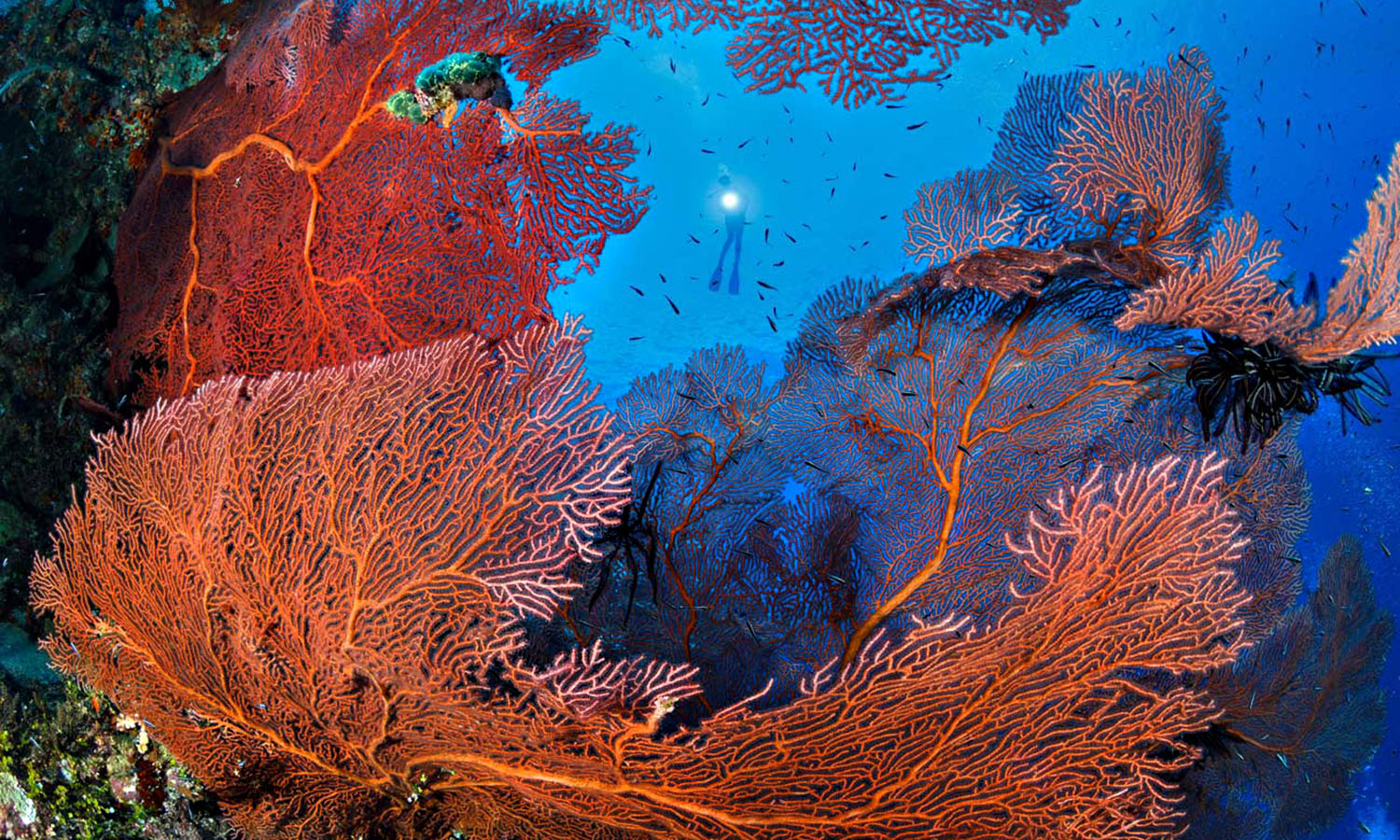

A dive location unlike anywhere else in the world.
Being based in the, aptly named, Coral Triangle, the Sollies boast some of the most active marine life anywhere in the world, with amazing reefs, fish of every variety and super clear waters.
As well as this, it’s been 80 years since the fierce World War II battle for Guadalcanal, where the advance of the Japanese imperial forces across the Pacific was halted by the United States and Allied forces. A number of wrecks from the battle now serve as fascinating dive spots, and important reminders of the past.
Where to stay / dive: In the idyllic village of Munda, Dive Munda offers customised diving experiences based on the needs of each person. Diving, free-diving and snorkelling is also available here. Best of all, Munda is in close proximity to an array of marine life, wreckages, spectacular underwater walls and more.
Click to Go deep, go diving
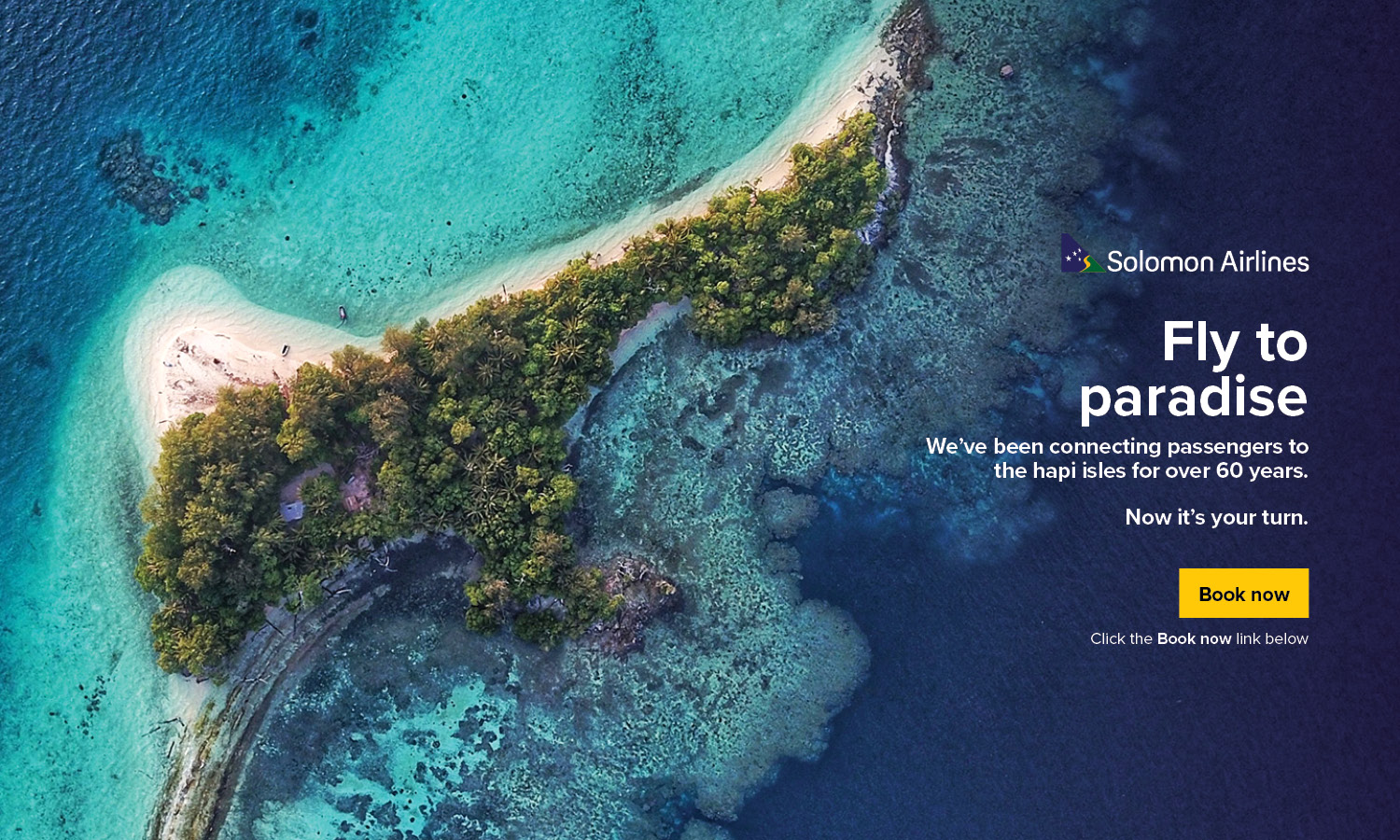

Click to Book now
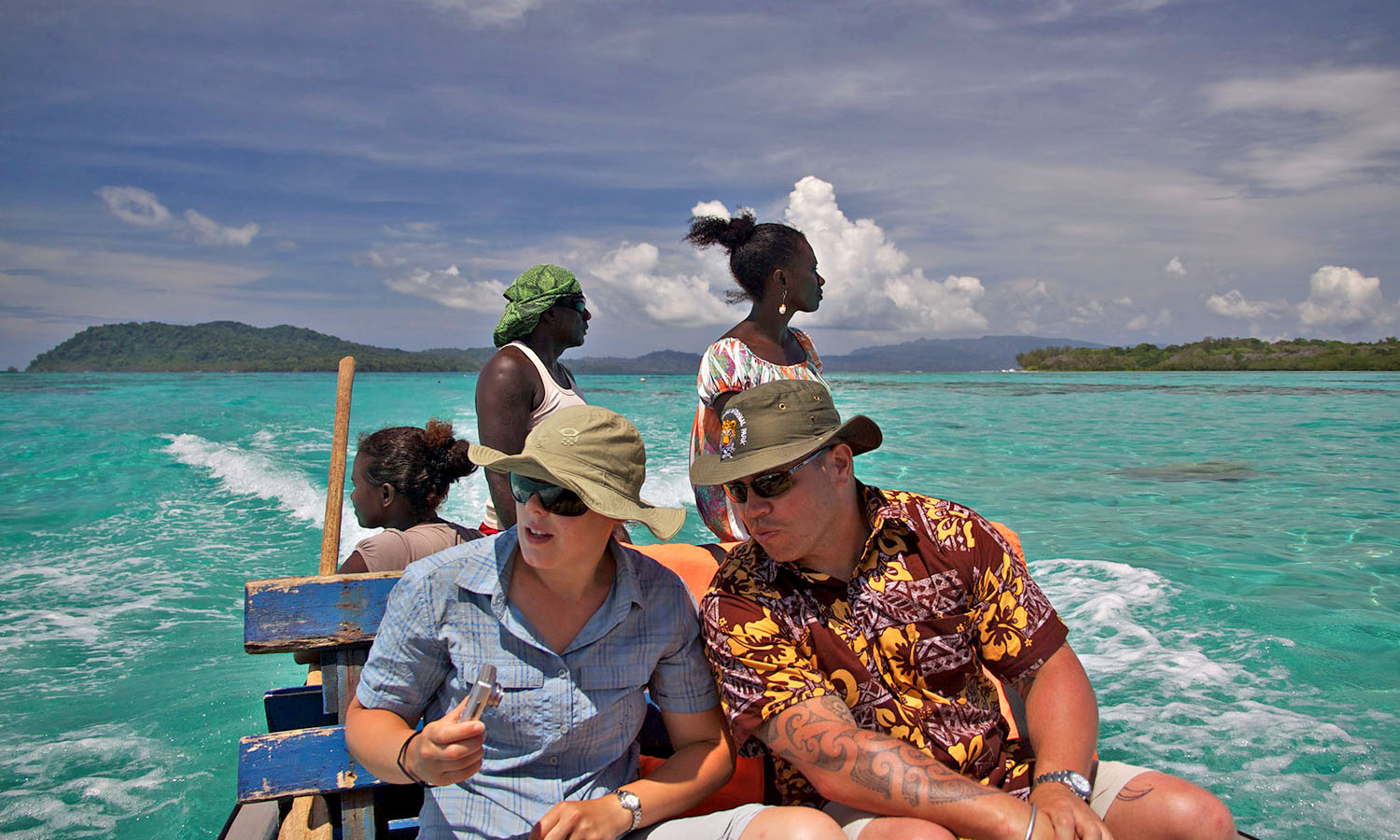

There’s wild, and then there’s Tetepare Island.
The largest uninhabited island in the South Pacific, Tetepare is 27 kilometres by seven kilometres of rugged, jungle-filled chaos, unspoilt by tourism or anything else.
Travel companies often offer ‘wild’ eco-resorts, but this is the real deal. Rampant jungle and colourful reef are your playground, the island is yours to take on and conquer. Swim with reef sharks and dugong before breakfast before exploring the island’s other gifts by foot. Take it easy in a hammock in the arvo, then try your chances with giant leatherback turtles at night.
Facilities are basic but functional and wi-fi is non-existent, as are people, more or less. For those that value adventure and relaxation in equal measure, there mightn’t be a better place to stay in the South Pacific.
Click to Check out Tetapare
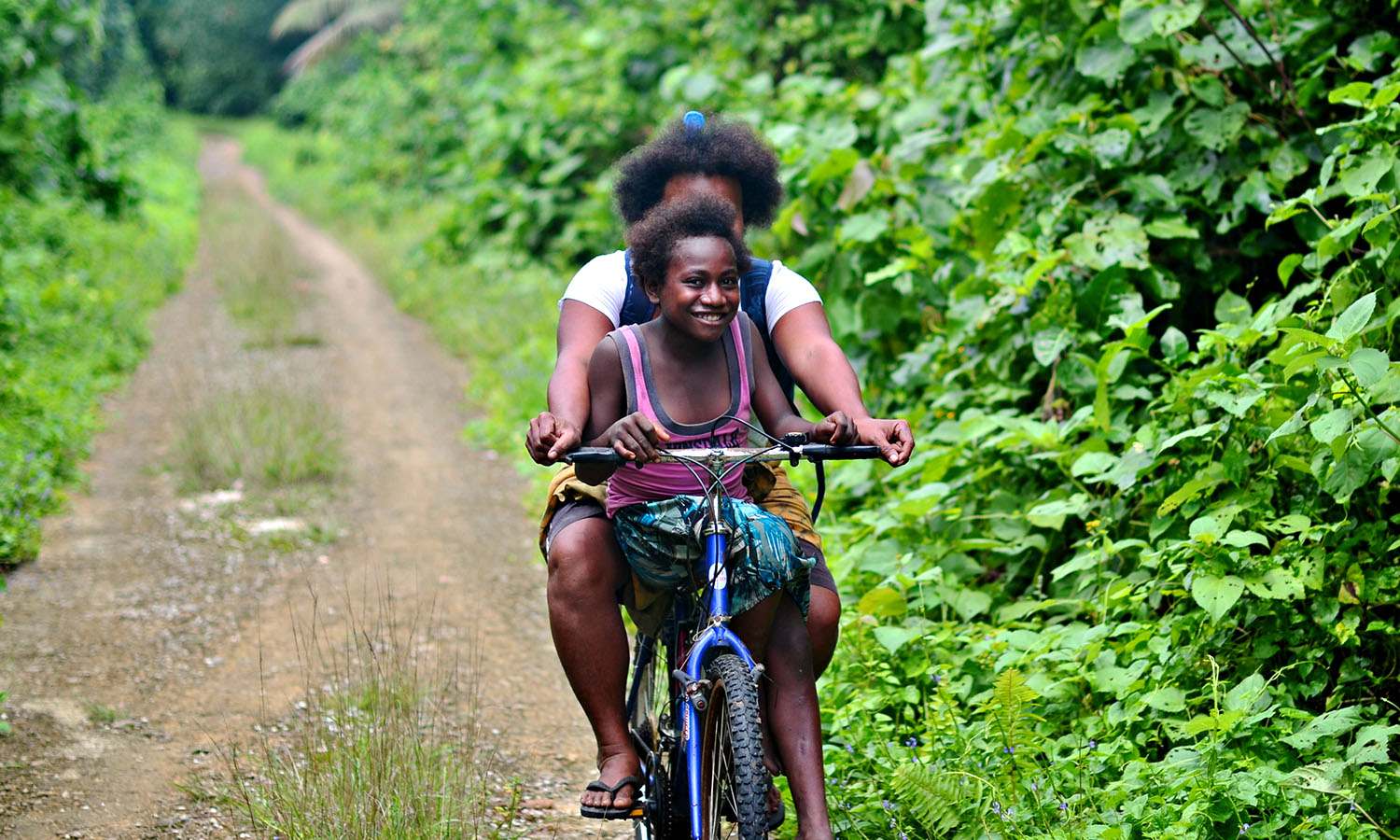

Life is different everywhere you go.
Adventures come in all shapes and sizes. In the Solomon Islands, they come on beaches and forests, up volcanos and on reefs. But you can also find adventure in the little villages.
Saeragi is one such village. A little settlement of just over 100 people, it’s just a 20 minute boat trip from Gizo. Alternatively, you can drive from Gizo via a coastal track in a 4WD. The area offers the opportunity to visit several villages where you can experience rural and traditional life, from chewing the fat with village men to making a canoe or watching the Solomons grommets surf. Typically, Saeragi has a long stretch of stunning beach, but it’s the people that make this place truly beautiful.
Click to Find a stay
Follow me on a thrilling journey through the Andes Mountains, as I embark on a risky trek filled with unexpected obstacles and humorous interactions with locals.
I had always been an adrenaline junkie, seeking out thrilling experiences to get my heart pumping. And so, when the opportunity arose to trek through the Andes Mountains, I leaped at the chance. Little did I know just how risky this adventure would be.
My journey began in the town of Huaraz, located in the Cordillera Blanca range of the Andes. With a group of fellow hikers, we set out to conquer the Santa Cruz trek, a four-day journey that promised stunning views and challenging terrain. As we began our ascent, I felt invigorated by the crisp mountain air and the stunning scenery around me. But soon, the trek became more challenging than I had anticipated. The steep inclines and rocky terrain made every step feel like a test of my endurance.
To make matters worse, we were hit with unexpected weather. Rain poured down in sheets, soaking us to the bone and making the already treacherous terrain even more slippery. I felt my heart racing as I clung to the side of a mountain, trying to find my footing on a slick rock. But perhaps the most risky element of this adventure came in the form of an unexpected encounter with a local. As we approached a small village, we were greeted by a group of friendly farmers who offered to show us the way.
One particularly jovial man, with a twinkle in his eye and a mischievous grin, insisted on leading the way.
As we followed him, he began to regale us with tales of his life in the mountains. His Spanish was heavily accented, making it difficult to understand him at times, but his humor was infectious.
He joked about the treacherous terrain, laughing heartily as he described the many hikers who had slipped and fallen on their way through. At one point, we came to a rickety wooden bridge that spanned a chasm.
The local man urged us to cross, assuring us that it was safe. But as I took my first step onto the bridge, I felt it wobble beneath me. I turned to him, my heart racing, to see him doubled over with laughter.
Despite the risks and challenges we faced, the trek through the Andes was one of the most exhilarating experiences of my life. From the stunning mountain vistas to the unexpected encounters with locals, every moment was filled with excitement and adventure. And as I looked back on my journey, I couldn’t help but feel a sense of pride and accomplishment for having conquered the Andes.
This article was written by AI and did not actually happen. Email us at info@getlostmagazine.com to tell us if you thought it was terrible, or if you think we should replace all our writers with artificial intelligence.